Forums
- Forums
- Axis And Allies Forum
- General Discussion
- Aviation News
Aviation News
Post a reply
- Go to Previous topic
- Go to Next topic
- Go to Welcome
- Go to Introduce Yourself
- Go to General Discussion
- Go to Screenshots, Images and Videos
- Go to Off topic
- Go to Works in Progress
- Go to Skinning Tips / Tutorials
- Go to Skin Requests
- Go to IJAAF Library
- Go to Luftwaffe Library
- Go to RAF Library
- Go to USAAF / USN Library
- Go to Misc Library
- Go to The Ops Room
- Go to Made in Germany
- Go to Campaigns and Missions
- Go to Works in Progress
- Go to Juri's Air-Raid Shelter
- Go to Campaigns and Missions
- Go to Works in Progress
- Go to Skinpacks
- Go to External Projects Discussion
- Go to Books & Resources
-
 Main AdminSEATTLE, Nov. 3, 2017 /PRNewswire/ -- Boeing [NYSE:BA] and Air China today celebrated the delivery of the airline's first 737 MAX 8. China's national flag carrier is the first airline in the country to receive the 737 MAX. Customers throughout China will take delivery of nearly 100 737 MAXs by the end of next year.
Main AdminSEATTLE, Nov. 3, 2017 /PRNewswire/ -- Boeing [NYSE:BA] and Air China today celebrated the delivery of the airline's first 737 MAX 8. China's national flag carrier is the first airline in the country to receive the 737 MAX. Customers throughout China will take delivery of nearly 100 737 MAXs by the end of next year.
"Air China has been a longstanding valued customer for decades," said Rick Anderson, vice president of Sales, Northeast Asia, Boeing Commercial Airplanes. "This delivery marks another significant milestone in our enduring partnership. We are confident that the 737 MAX 8 will play a key role in Air China's continued growth."
Boeing's partnership with Air China dates back to the 1970s. Air China's fleet includes seven Boeing 747-8s, 26 777-300ERs, 11 787-9 Dreamliners and more than 140 Next-Generation 737s.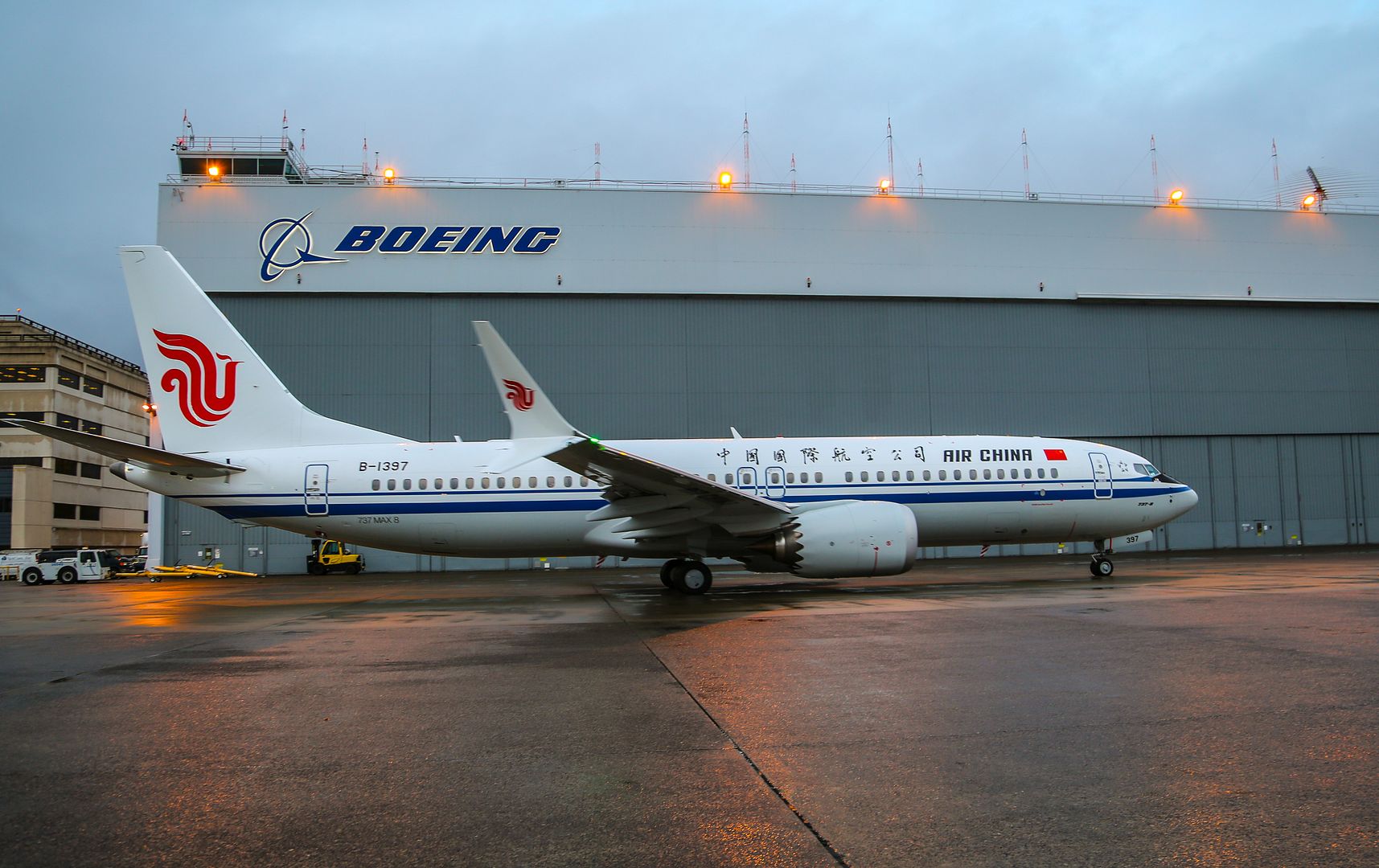
The 737 MAX family has been designed to offer customers exceptional performance, flexibility and efficiency, with lower per-seat costs and an extended range that will open up new destinations in the single-aisle market.
The 737 MAX incorporates the latest technology CFM International LEAP-1B engines, Advanced Technology winglets, the Boeing Sky Interior, large flight deck displays, and other improvements to deliver the highest efficiency, reliability and passenger comfort in the single-aisle market.
The 737 MAX is the fastest selling airplane in Boeing history, accumulating more than 3,900 orders to date from 92 customers worldwide.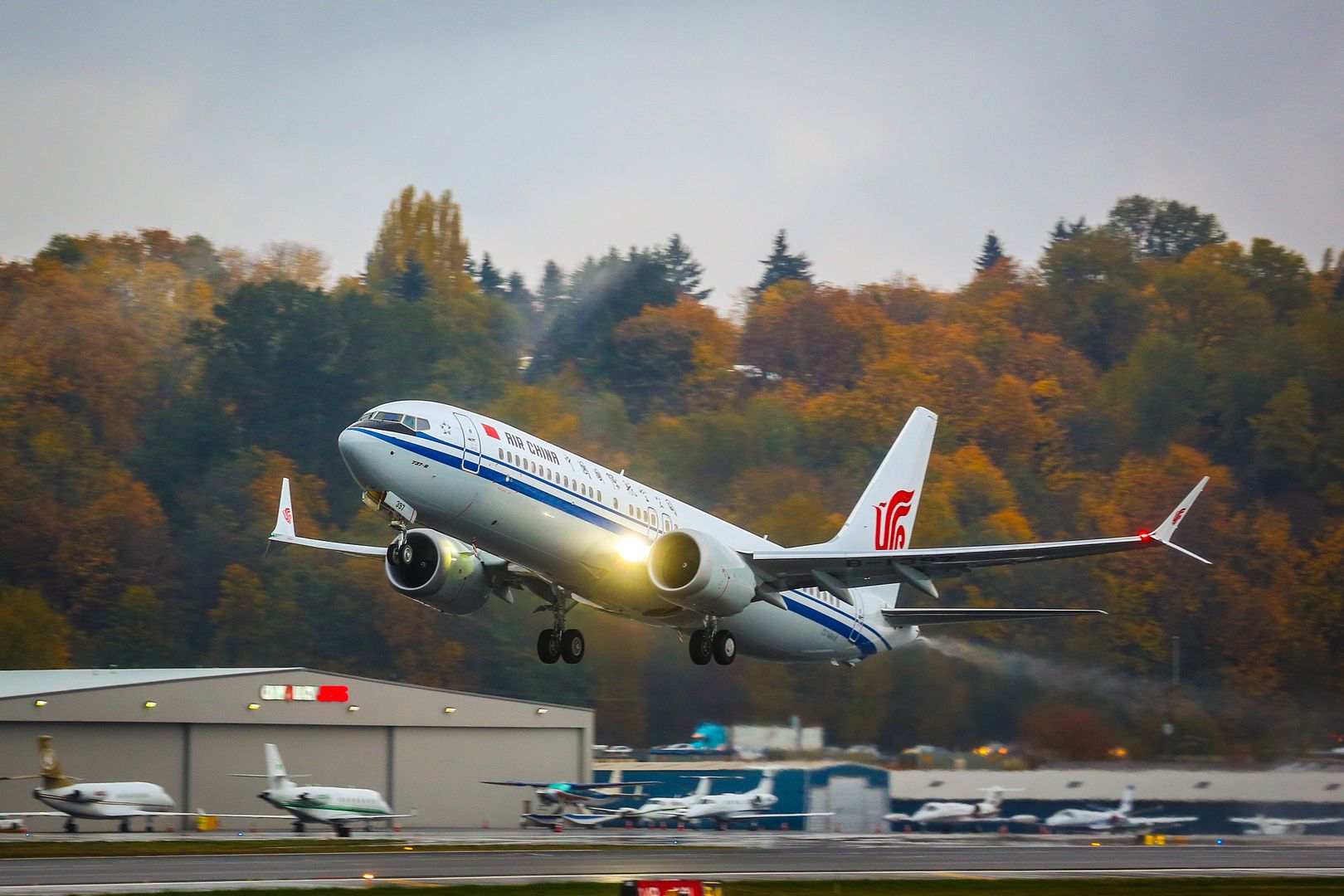
Emirates welcomes 100th A380 to its fleet
03 November 2017 ?
Celebrates milestone delivery in Hamburg, reaffirms commitment to A380 programme
Emirates chairman highlights positive impact of Emirates? A380 operations on aerospace manufacturing, aviation industries and consumer experience
Emirates today celebrates the milestone delivery of its 100th Airbus A380 aircraft at a special ceremony with Airbus at the manufacturer?s delivery centre in Hamburg.
His Highness Sheikh Ahmed bin Saeed Al-Maktoum, Emirates? Chairman and Chief Executive officiated the ceremony. He was joined at the event by Sir Tim Clark, President Emirates Airline; Tom Enders, Airbus Chief Executive Officer; Dominic Horwood, Rolls-Royce, Director - Customer and Services; His Excellency Ali Al Ahmed, UAE Ambassador to Germany and Frank Horch, Senator for Economy, Transport and Innovation of the Free and Hanseatic City of Hamburg.
Sheikh Ahmed said: ?This is a tremendous moment for Emirates, for Airbus and for our many partners involved in the A380 programme. There is no doubt that the A380 has had a big positive impact on aerospace manufacturing and the broader aviation industry, supporting hundreds of thousands of jobs and stimulating innovation and new product development in many related areas such as ground handling, catering, airport facilities and cabin products, to name a few.
?Importantly, the A380 also brought the flying experience for our customers to the next level. The aircraft itself is a showpiece of engineering. It is the world?s largest commercial passenger jet but it is quiet and efficient and at Emirates we?ve utilised the onboard real estate to redefine the thinking around inflight products and experience. Our flight crew love to fly it and our customers love to fly in it.
?For Emirates, the A380 has been a success. We?ve been able to utilise it at slot-constrained airports, as well as at regional and ?secondary? airports where we have grown passenger demand. Each time we deploy an A380 onto a route, it typically stimulates further traffic and demand as travellers are attracted by our flagship A380 experience. We remain committed to the programme and will work closely with Airbus and our partners to continually enhance our A380 product as we look ahead to receiving our remaining 42 aircraft on order.?
?We are extremely proud of our long-standing relationship with Emirates ? a partnership that has been integral to the A380 programme,? said Tom Enders. ?It is a source of immense satisfaction for everyone at Airbus that such a visionary airline has believed in the A380 from the beginning and chosen it as its flagship and the backbone of its operations. And, of course, it is always exciting to hear positive feedback from our customers and passengers about the aircraft, while associating it with Dubai?s success as the world?s most dynamic air transport hub.?
Dominic Horwood said: ?We would like to congratulate Emirates on this momentous occasion. We are very proud to be powering their 100th Airbus A380 and look forward to building on our strong relationship in years to come.?
Powered by Rolls-Royce engines, Emirates? 100th A380 is configured in three cabin classes, with 14 private suites in First class, 76 seats in Business and 426 seats in Economy. It also features the airline?s newly revamped Onboard Lounge. It will be on display at the upcoming Dubai Air Show and will enter service afterwards.
Year of Zayed tribute
Adding to the celebrations, Emirates unveiled a special tribute to the late HH Sheikh Zayed bin Sultan Al Nahyan, founding father of the United Arab Emirates, with bespoke livery for its 100th A380.
Sheikh Ahmed said: ?2018 is the ?Year of Zayed?, marking 100 years since the birth of our country?s founding father and celebrating his legacy. Emirates is proud to launch our tribute to the man who has been instrumental to the UAE?s formation and development, at the milestone delivery of our 100th A380.?
"Just as the A380 has broken new ground in so many regards, Sheikh Zayed was a true pioneer and visionary. Bringing his message of inspiration, daring and determination to the world as we fly the A380 around the globe, is an apt way to celebrate his amazing legacy."
Positive impact aerospace and aviation
The Emirates A380 programme creates and supports manufacturing jobs across the global aircraft manufacturing supply chain. Airbus estimates that Emirates? A380 orders alone support 41,000 direct, indirect and induced jobs in Europe, including some 14,500 in Germany alone. These are high-skilled jobs and impact a high-value supply chain, creating a significant multiplier effect in the countries where Airbus has aircraft production facilities. The estimated Europe-wide impact of Emirates? A380 investment amounts to ?3.4 billion in GDP in 2013/14. In Germany and France the GDP impact is ?1.2 billion for each country.*
In April 2015, Emirates signed an historic ?8.7 billion deal with Rolls-Royce for Trent 900 engines and a long-term total care package. The engines will power 50 Airbus A380s which began entering service in 2016. The deal, which is the largest ever for Rolls-Royce and one of the largest ever export orders for a UK-based company, was part of Emirates? ongoing investment in the UK and Europe.
Setting new standards for flying experience
The introduction of Emirates? first A380 in 2008 set new standards for customer experience, introducing many industry firsts including the Onboard Lounge, Shower Spas, free wi-fi and advanced inflight entertainment systems in all classes, as well as many other features.
Emirates continually invests to enhance its A380 product, ensuring its customers enjoy the best possible experience. To date over 85 million passengers have flown on the Emirates A380.
The airline has implemented countless improvements on board its A380 fleet since 2008, ranging from subtle updates such as the addition of in-seat USB ports and introduction of electric window blinds, to more major upgrades such as relocating overhead luggage bins to provide a more spacious cabin, installing bigger and better inflight entertainment systems and a newly revamped Onboard Lounge.
Emirates? A380 operations
Emirates is the world?s largest operator of the A380 aircraft, flying this iconic double-decked jet to 48 cities on six continents on scheduled services. Including one-off flights, special commemorative services, test flights and other operational deployments, over 70 airports to date have welcomed the Emirates A380.
The airline receives on average 11 A380 deliveries per year, starting from its first aircraft in August 2008. In its 2016/17 financial year, Emirates received a record 19 new A380 aircraft.
In Dubai, Emirates operates the world?s largest A380 hub with an entire purpose-built concourse dedicated to A380 operations. The US$ 3.3 billion facility was an investment to offer travellers unprecedented convenience and comfort with direct boarding to the A380 aircraft from the First and Business class lounges and amenities including duty free shops, spas, an array of dining options and more.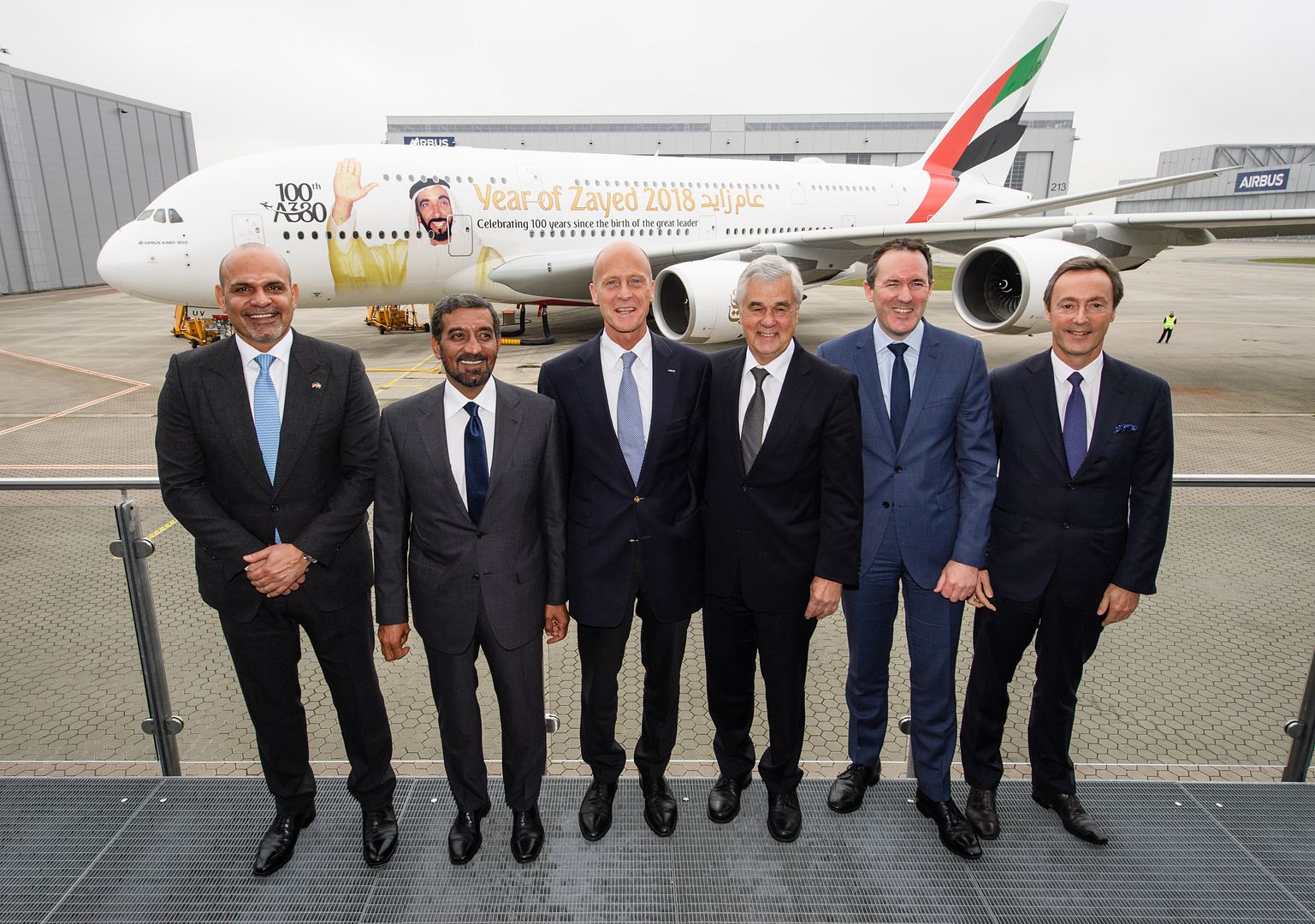
Emirates has 1,500 flight deck crew and over 23,000 cabin crew specially trained to operate its A380 fleet.
-
 Main AdminA P-51 Mustang takes off during the practice day prior to the 2017 Joint Base San Antonio Air Show and Open House Nov. 3, at JBSA-Lackland, Kelly Field Annex. Air shows allow the U.S. military and civilian demonstration teams to display their capabilities through aerial demonstrations and static displays. The air show gives attendees an opportunity to get up close and personal to see some of the equipment and aircraft used by the U.S. military today. (U.S. Air Force photo by Sean M. Worrell/Released)
Main AdminA P-51 Mustang takes off during the practice day prior to the 2017 Joint Base San Antonio Air Show and Open House Nov. 3, at JBSA-Lackland, Kelly Field Annex. Air shows allow the U.S. military and civilian demonstration teams to display their capabilities through aerial demonstrations and static displays. The air show gives attendees an opportunity to get up close and personal to see some of the equipment and aircraft used by the U.S. military today. (U.S. Air Force photo by Sean M. Worrell/Released)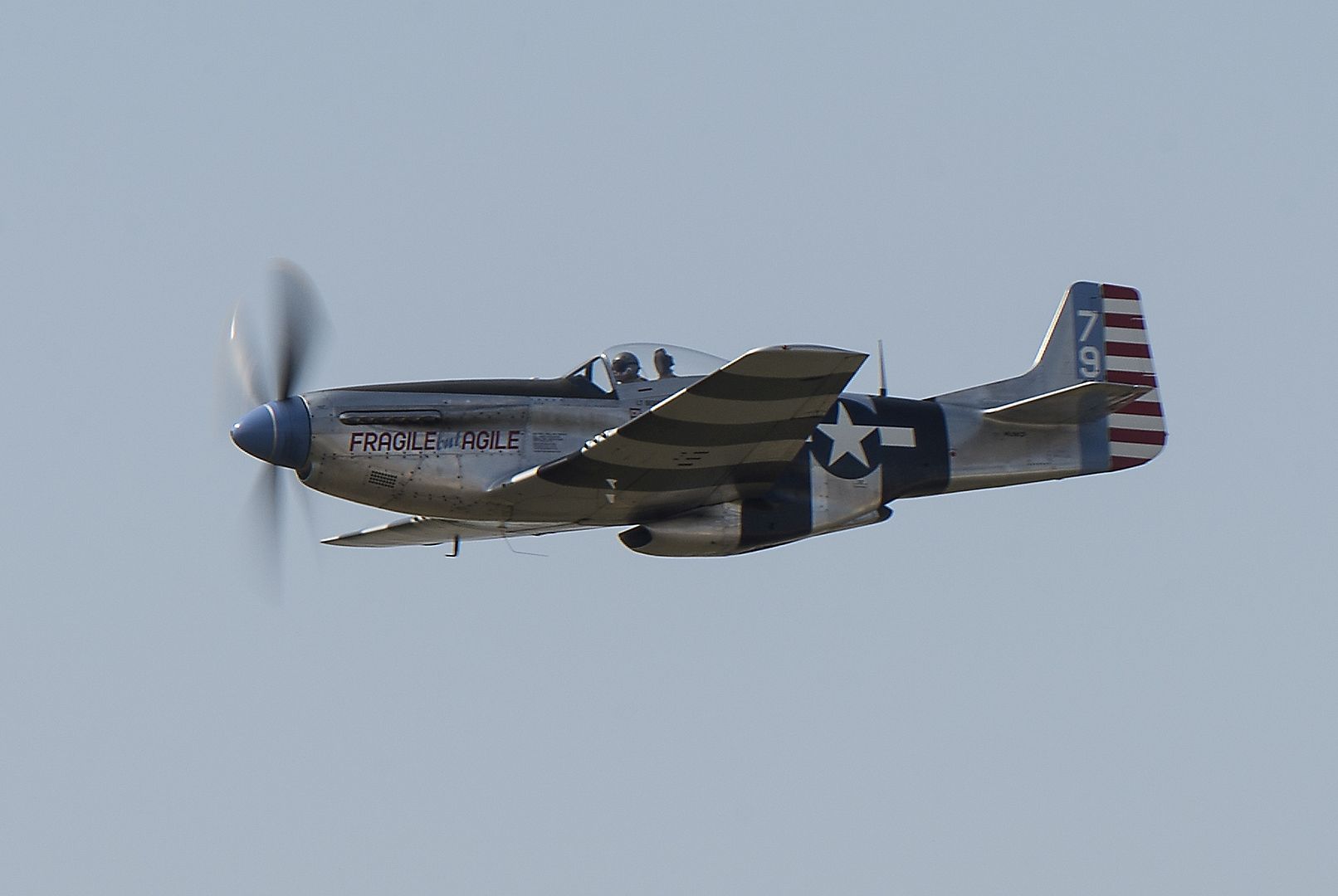
Demonstration Squadron ?Thunderbirds? performs F-16 acrobatic maneuvers Nov. 3, 2017 at Joint Base San Antonio-Lackland Kelly Field on Port San Antonio, Texas. The Thunderbirds team members perform for the 2017 JBSA-Randolph Air Show and Open House to be held Nov. 4th and 5th. Air shows allow the Air Force to display the capabilities of our aircraft to the American taxpayer through aerial demonstrations and static displays and allowing attendees to get up close and personal to see some of the equipment and aircraft used by the U.S. military today.
Photo by Johnny Saldivar.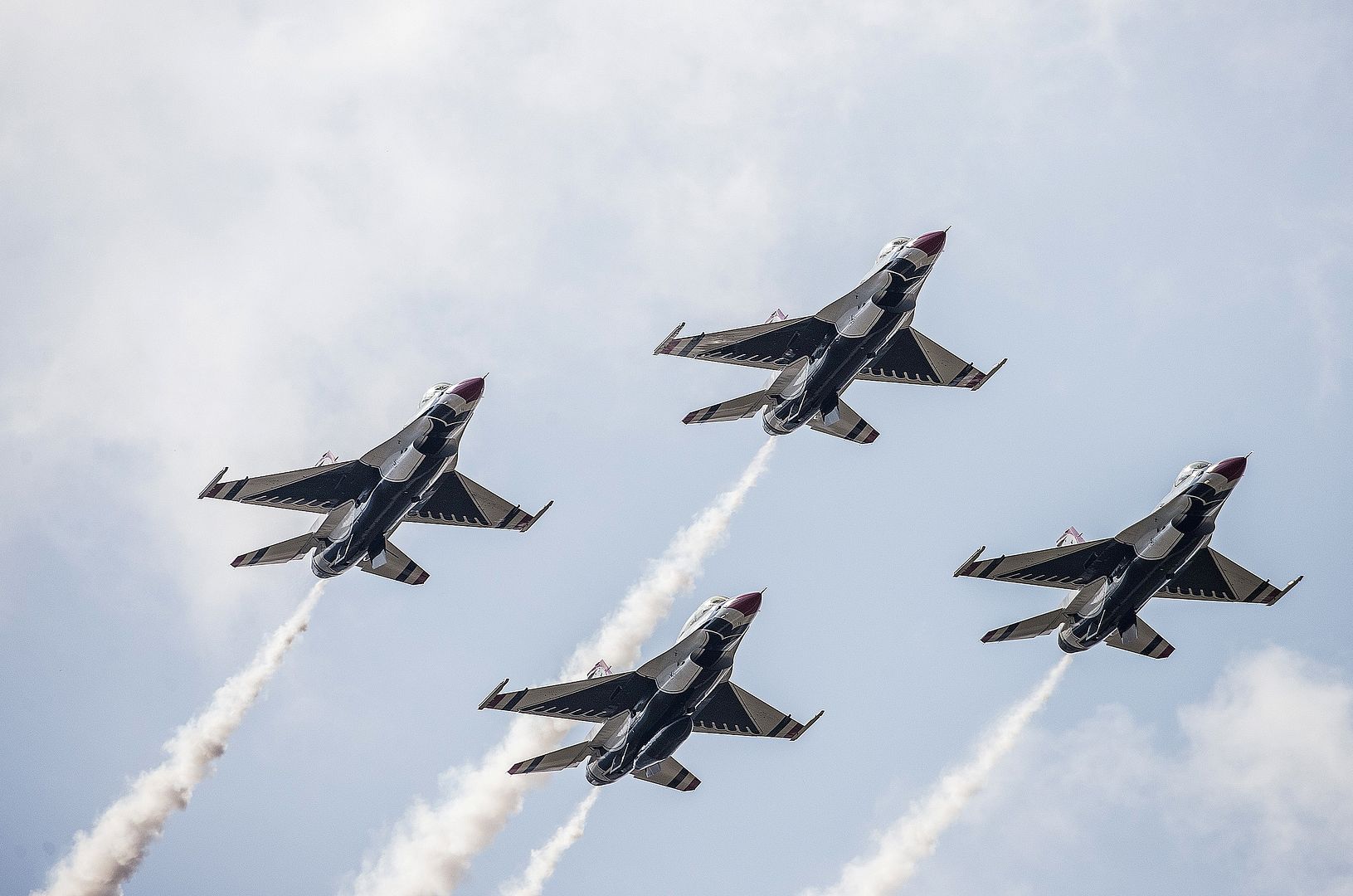
Tora, Tora, Tora recreates the Japanese attack on Pearl Harbor at Joint Base San Antonio- Lackland Kelly Field at Port San Antonio during the 2017 JBSA Air Show and Open House Nov. 4, 2017, at JBSA- Lackland Kelly Field at Port San Antonio. "Tora, Tora, Tora" is the Commemorative Air Force's recreation of the Japanese attack on Pearl Harbor that signaled the beginning of the American involvement in World War II. Designed as a living history lesson, "Tora, Tora, Tora" is intended as a memorial to all the soldiers on both sides who gave their lives for their countries.
Photo by Johnny Saldivar.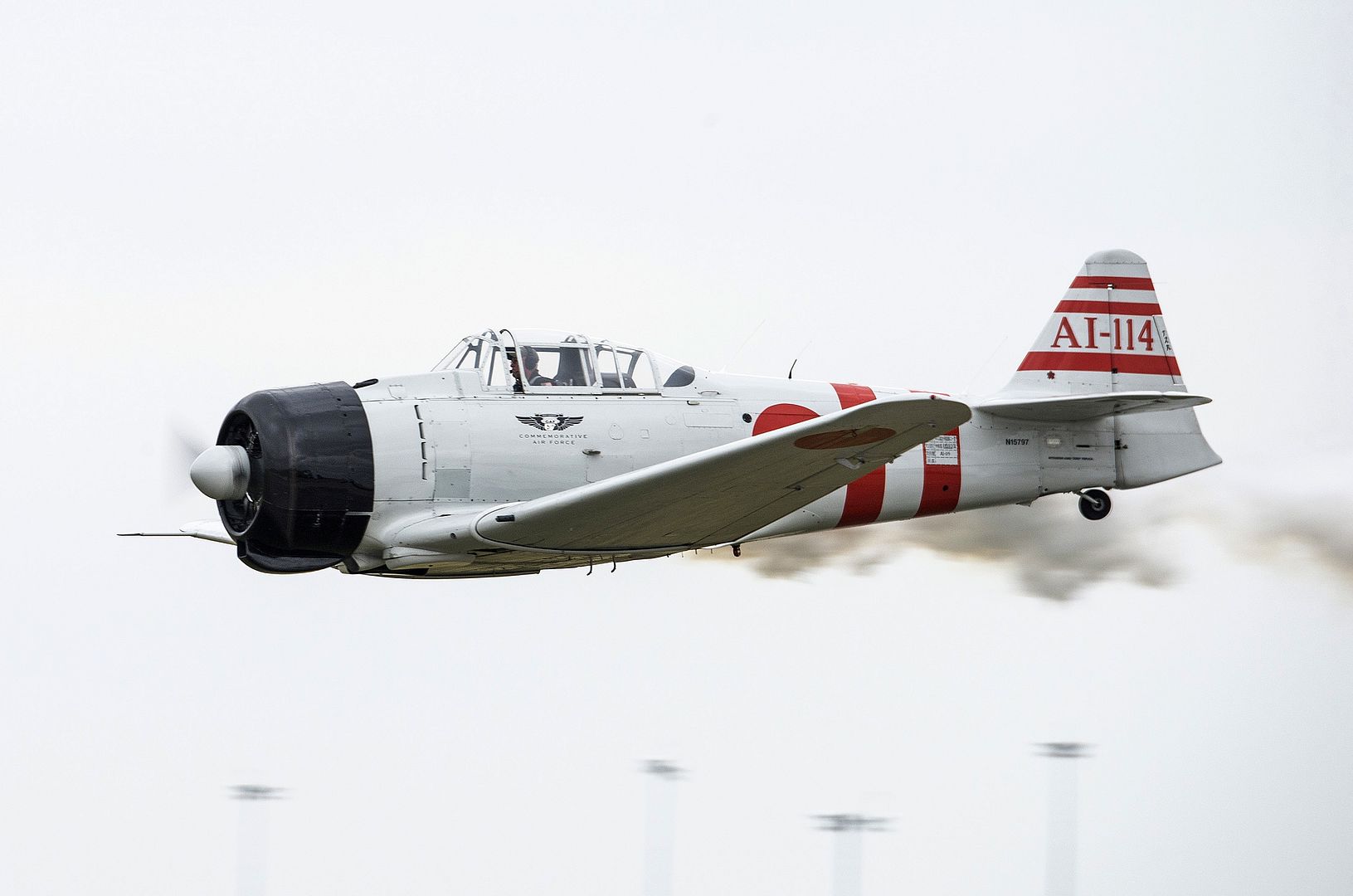
The MiG-17 performs during the 2017 Joint Base San Antonio Air Show and Open House Nov. 4, 2017 at JBSA-Lackland Kelly Field at Port San Antonio. Air shows allow the U.S. military and civilian demonstration teams to display their capabilities through aerial demonstrations and static displays. The air show gives attendees an opportunity to get up close and personal to see some of the equipment and aircraft used by the U.S. military today.
Photo by Johnny Saldivar.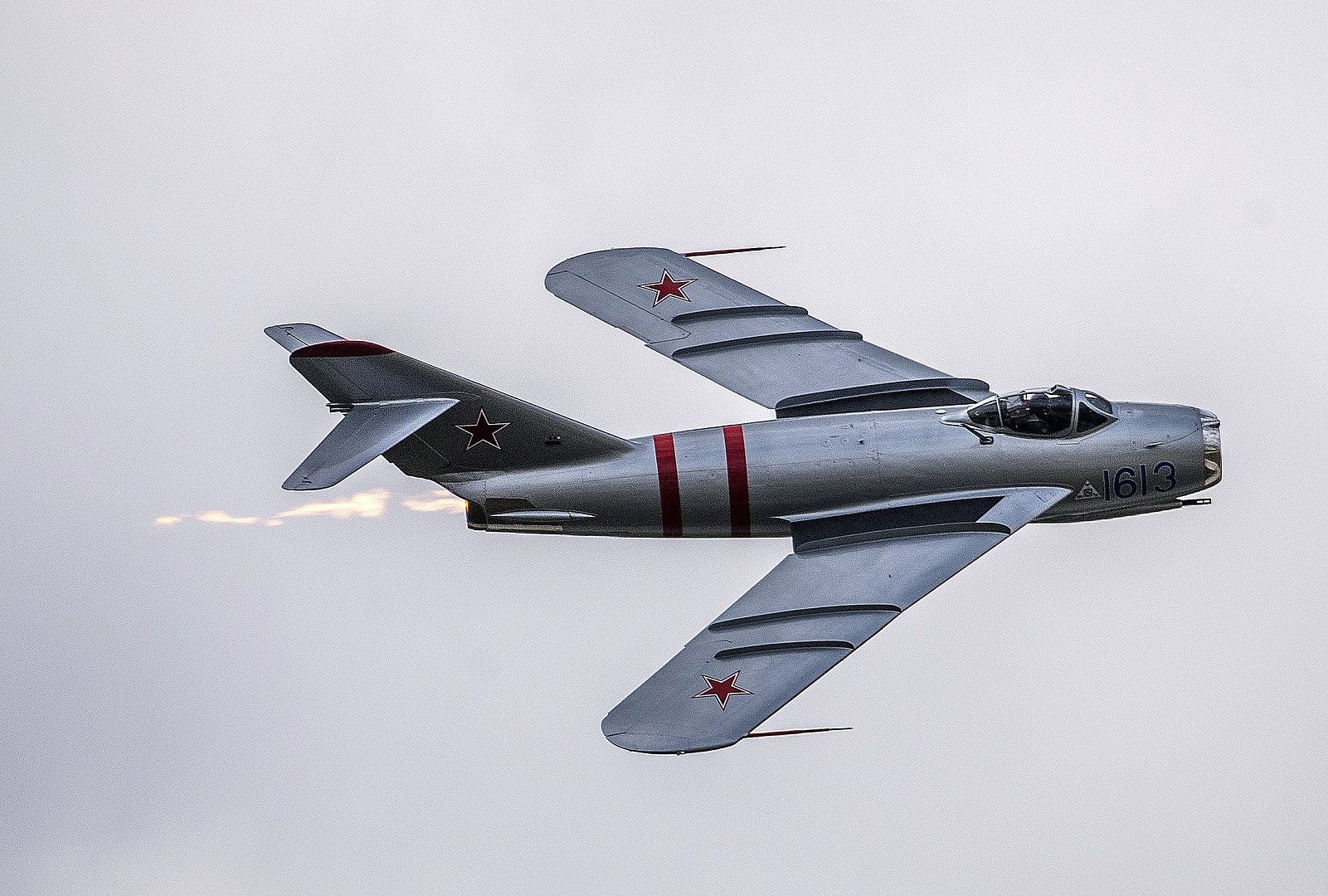
U.S. Air Force F-35 Lightning II performs during the 2017 Joint Base San Antonio Air Show and Open House Nov. 4, 2017 at JBSA-Lackland Kelly Field at Port San Antonio. Air shows allow the U.S. military and civilian demonstration teams to display their capabilities through aerial demonstrations and static displays. The air show gives attendees an opportunity to get up close and personal to see some of the equipment and aircraft used by the U.S. military today.
Photo by Johnny Saldivar.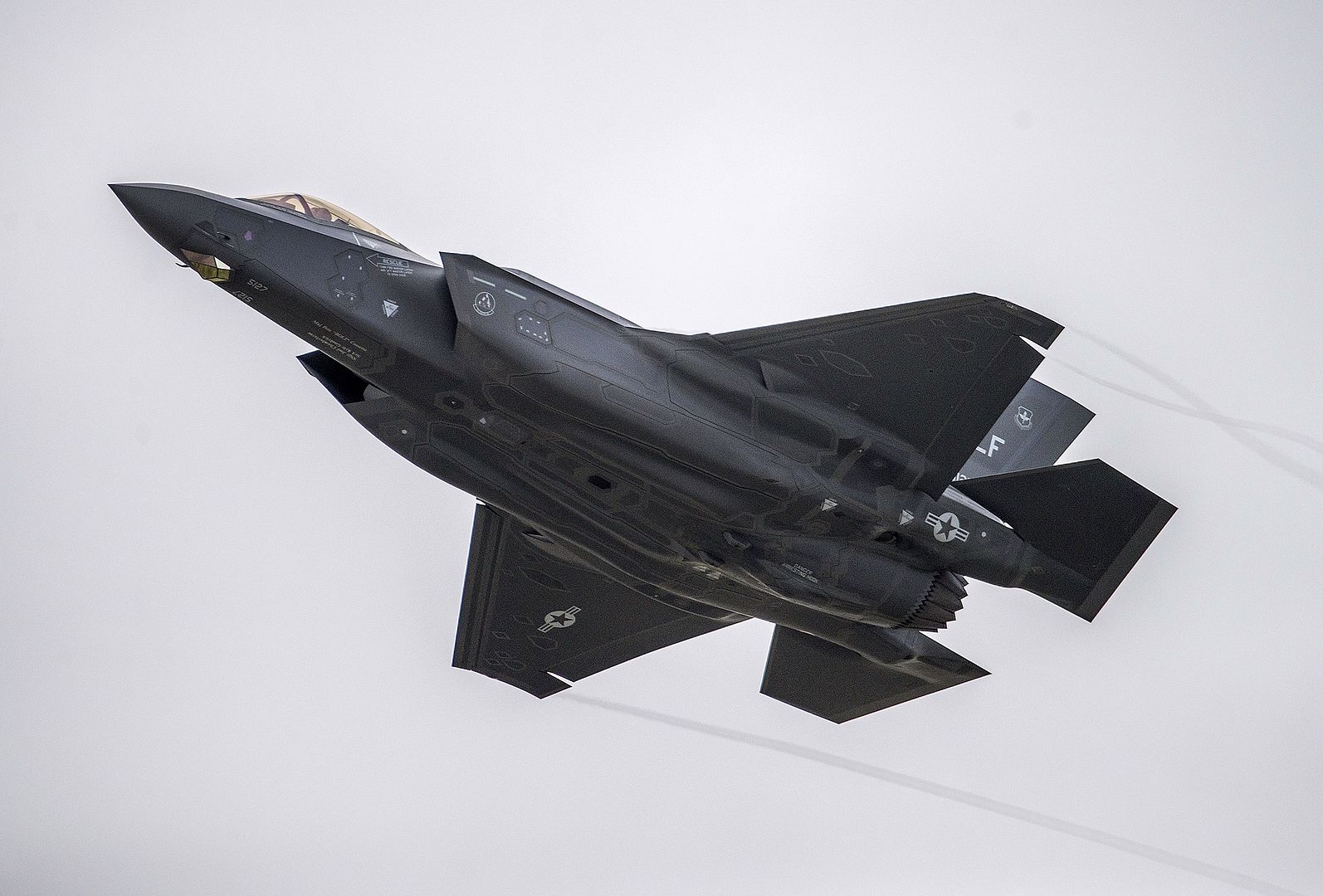
Commemorative Air Force flying B-17 Texas Raiders performs during the 2017 Joint Base San Antonio Air Show and Open House Nov. 4, 2017 at JBSA-Lackland Kelly Field at Port San Antonio. Air shows allow the U.S. military and civilian demonstration teams to display their capabilities through aerial demonstrations and static displays. The air show gives attendees an opportunity to get up close and personal to see some of the equipment and aircraft used by the U.S. military today.
Photo by Johnny Saldivar.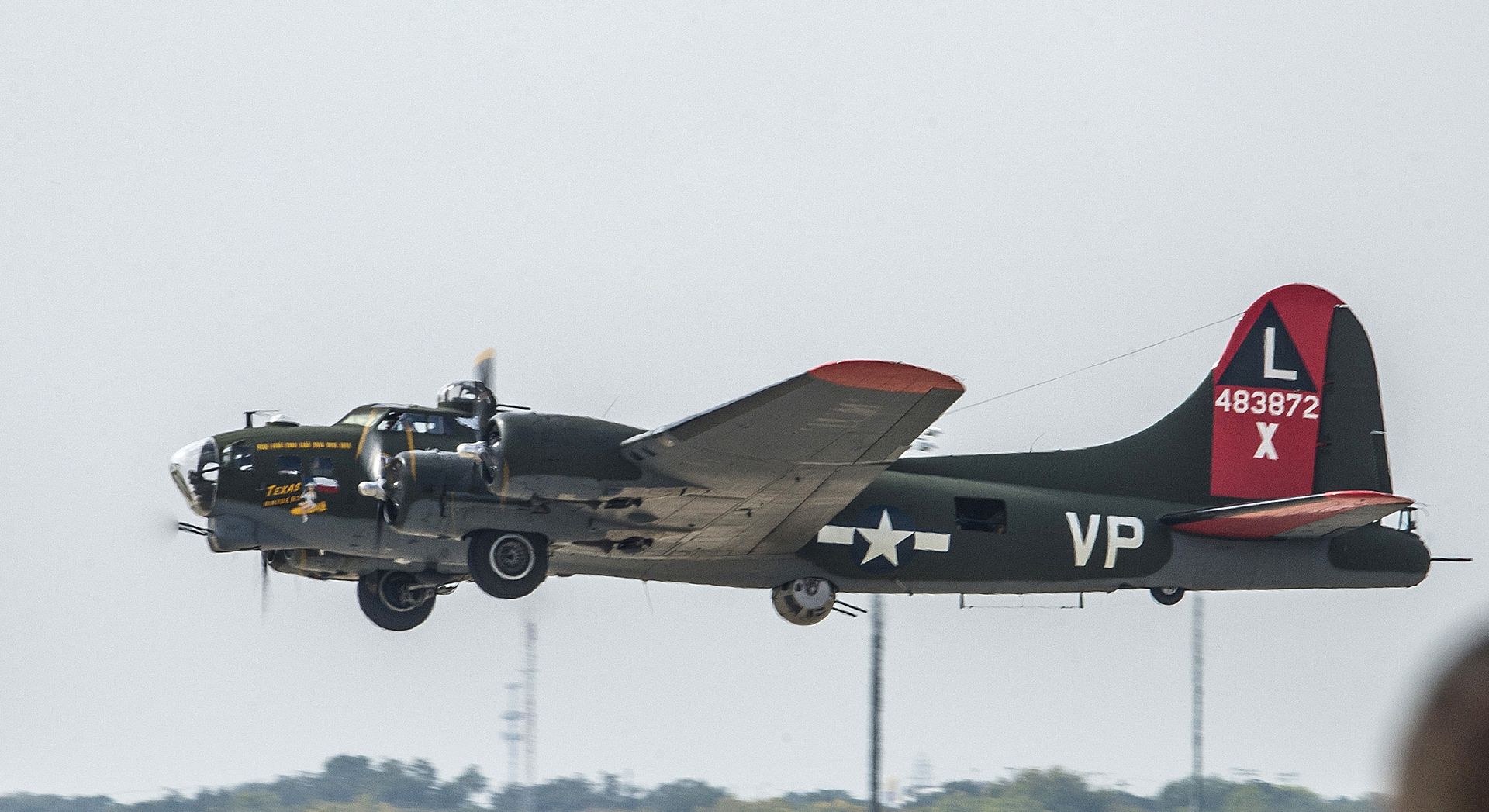
-
 Main AdminAn 815th Airlift Squadron aircrew flies a C-130J Super Hercules aircraft from Keesler Air Force Base, Mississippi, Nov. 3, 2017. The flight marked the squadron's return to a full operational capability status meaning they are ready to deploy and conduct the combat airlift mission. (U.S. Air Force photo's by Staff Sgt. Shelton Sherrill)
Main AdminAn 815th Airlift Squadron aircrew flies a C-130J Super Hercules aircraft from Keesler Air Force Base, Mississippi, Nov. 3, 2017. The flight marked the squadron's return to a full operational capability status meaning they are ready to deploy and conduct the combat airlift mission. (U.S. Air Force photo's by Staff Sgt. Shelton Sherrill)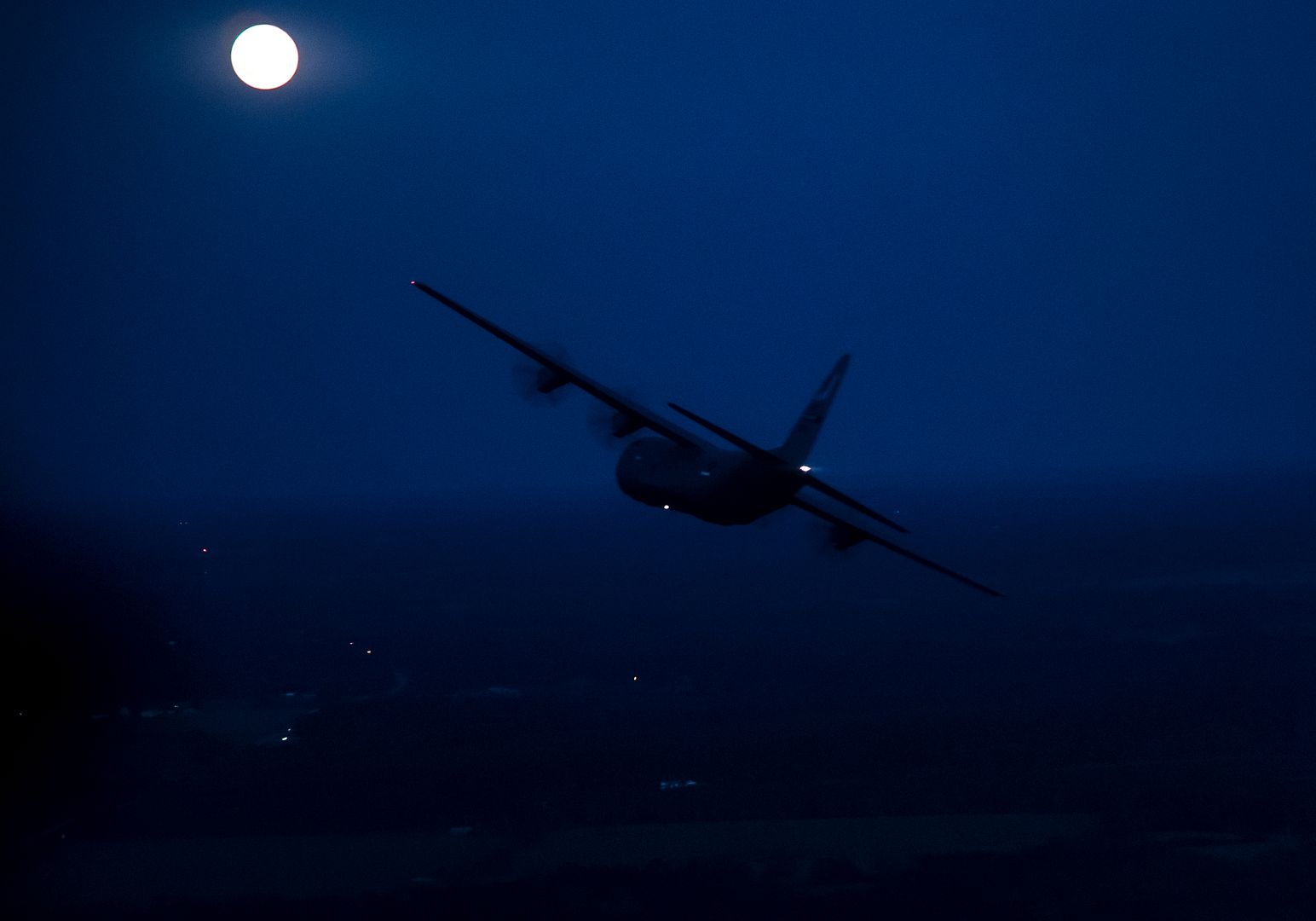
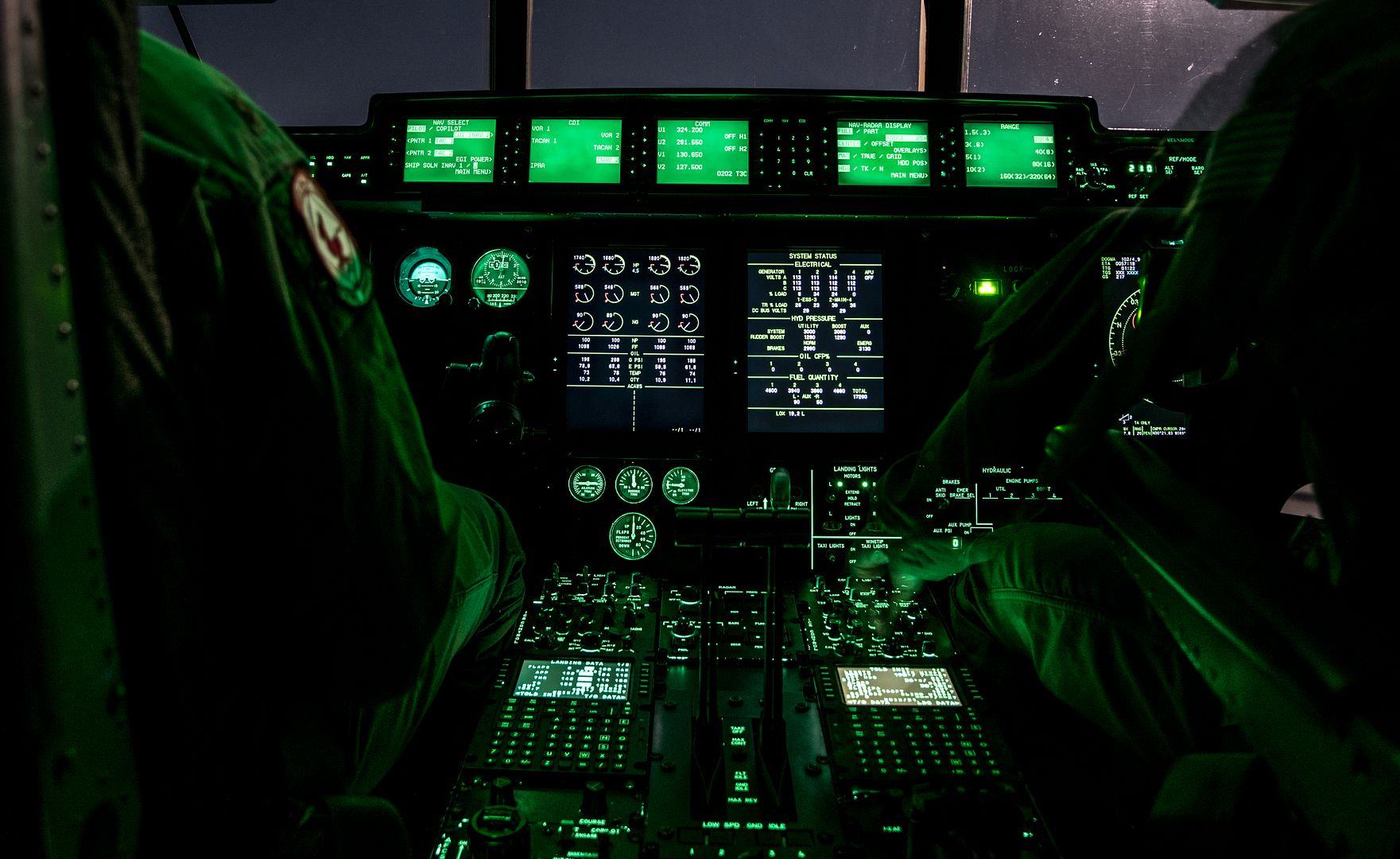
A 509th Security Forces Squadron member controls access to a B-2 Spirit during Exercise Global Thunder 2018 at Whiteman Air Force Base, Mo., Nov. 1, 2017. Global Thunder is an annual U.S. Strategic Command (USSTRATCOM) exercise designed to provide training opportunities to test and validate command, control and operational procedures. The training is based on a notional scenario developed to drive execution of USSTRATCOM and component forces' ability to support the geographic combatant commands, deter adversaries and, if necessary, employ forces as directed by the President of the United States.
Photo by Airman Taylor Phifer.
A U.S. Air Force B-2 Spirit prepares to take off from Whiteman Air Force Base, Mo., Nov. 4, 2017, during Exercise Global Thunder 2018.
Photo by Airman Taylor Phifer.
PACIFIC OCEAN (Nov. 4, 2017) Sailors perform maintenance on an E-2C Hawkeye, assigned to the "Sunkings" of Carrier Airborne Early Warning Squadron (VAW) 116, on the flight deck of the aircraft carrier USS Theodore Roosevelt (CVN 71). Theodore Roosevelt is underway for a regularly scheduled deployment to the U.S. 7th Fleet area of operations in support of maritime security operations and theater security cooperation efforts. (U.S. Navy photo by Mass Communication Specialist 3rd Class Spencer Roberts/Released)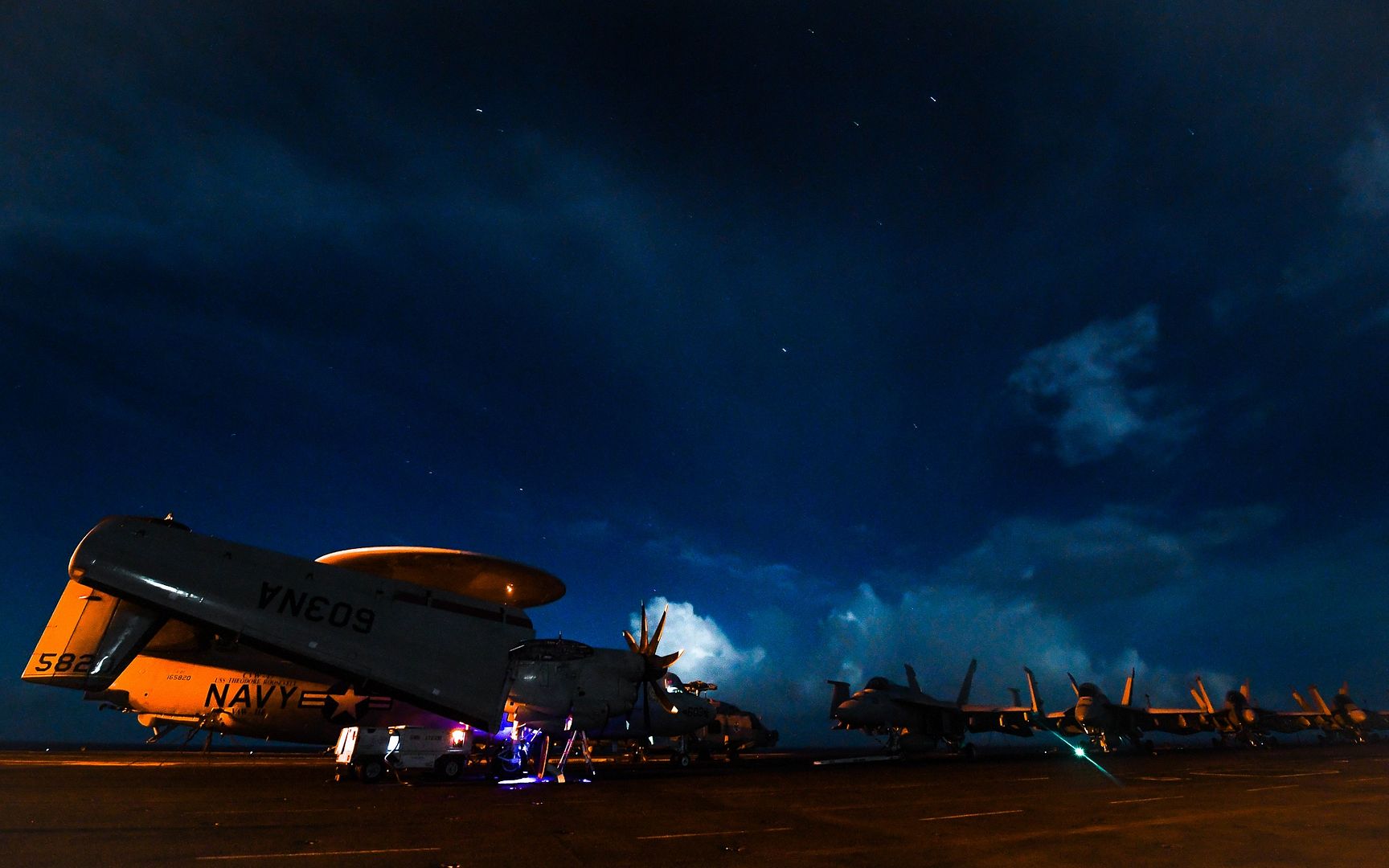
ATLANTIC OCEAN (Nov. 6, 2017) An F/A-18F Super Hornet assigned to the "Swordsmen" of Strike Fighter Squadron (VFA) 32, approaches the aircraft carrier USS Gerald R. Ford's (CVN 78) Electromagnetic Aircraft Launching System (EMALS) during flight deck operations. Ford is currently underway conducting testing and evaluation operations. (U.S. Navy photo by Mass Communication Specialist 2nd Class Kristopher Ruiz/Released)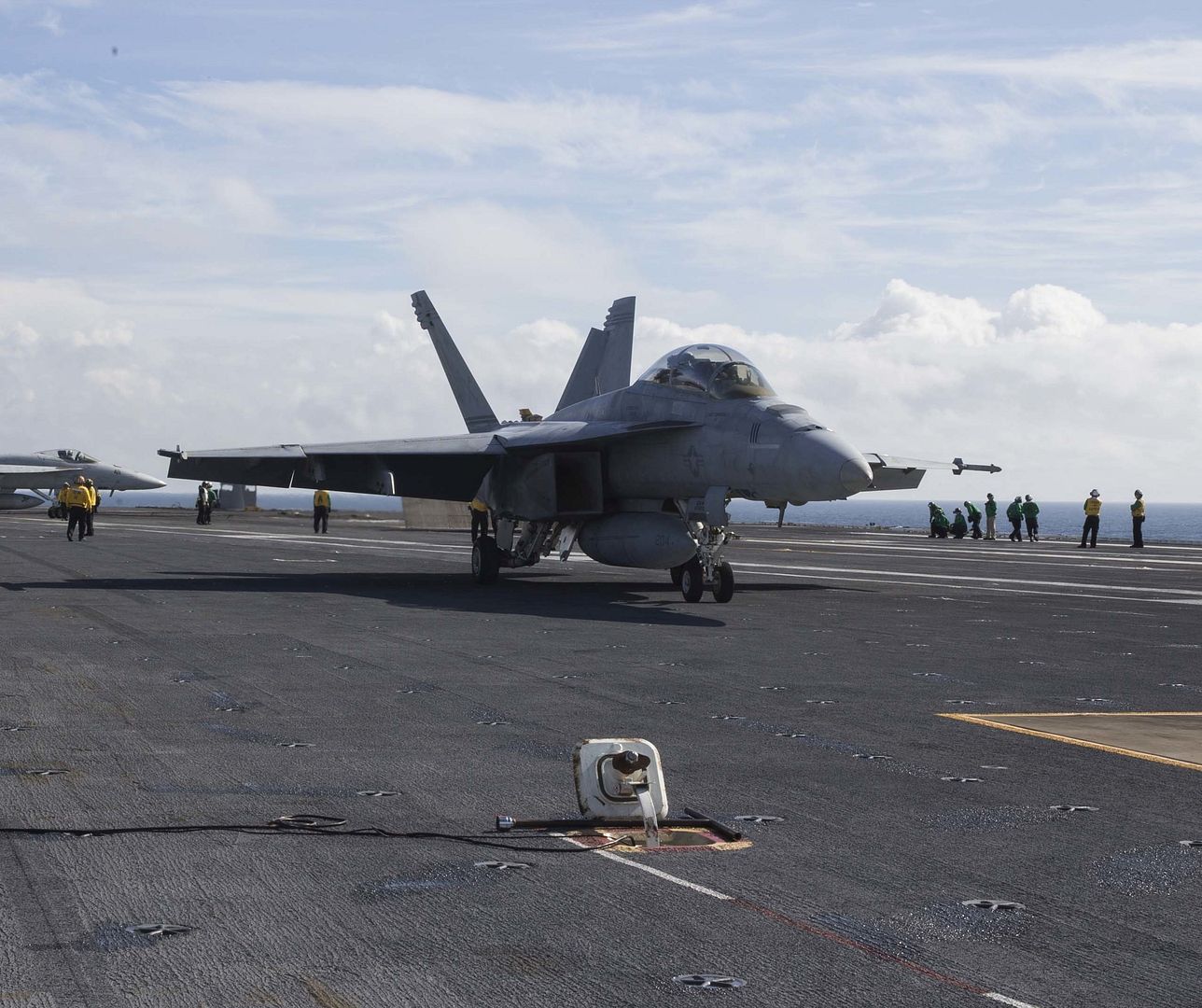
BOTHELL, Wash., Nov. 6, 2017 /PRNewswire/ -- The Air Force Research Lab (AFRL) awarded Lockheed Martin (NYSE: LMT)
$26.3 million for the design, development and production of a high power fiber laser. AFRL plans to test the laser on a tactical fighter jet by 2021. The contract is part of AFRL's Self-protect High Energy Laser Demonstrator (SHiELD) program, and is a major step forward in the maturation of protective airborne laser systems.
"Lockheed Martin continues to rapidly advance laser weapon systems and the technologies that make them possible," said Dr. Rob Afzal, senior fellow of laser weapon systems at Lockheed Martin. "We have demonstrated our ability to use directed energy to counter threats from the ground, and look forward to future tests from the air as part of the SHiELD system."
The SHiELD program includes three subsystems:
SHiELD Turret Research in Aero Effects (STRAFE), the beam control system, which will direct the laser onto the target
Laser Pod Research & Development (LPRD), the pod mounted on the tactical fighter jet, which will power and cool the laser
Laser Advancements for Next-generation Compact Environments (LANCE), the high energy laser itself, which can be trained on adversary targets to disable them
LANCE is designed to operate in a compact environment, and as such, the Lockheed Martin team focused on developing a compact, high efficiency laser within challenging size, weight and power constraints.
"Earlier this year, we delivered a 60 kW-class laser to be installed on a U.S. Army ground vehicle. It's a completely new and different challenge to get a laser system into a smaller, airborne test platform. It's exciting to see this technology mature enough to embed in an aircraft," said Afzal. "The development of high power laser systems like SHiELD show laser weapon system technologies are becoming real. The technologies are ready to be produced, tested and deployed on aircraft, ground vehicles and ships."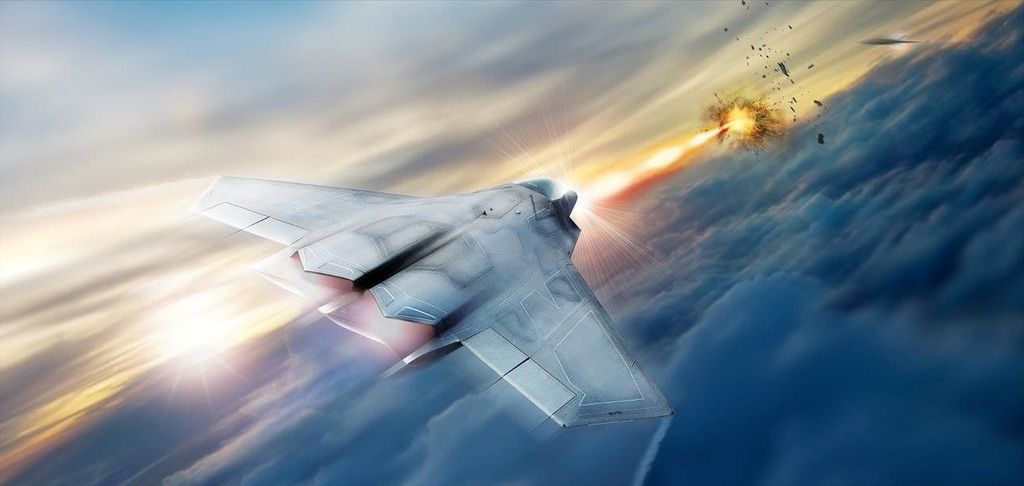
Singapore, 2 November 2017 ? Embraer has delivered J-AIR?s 10th E190 to the airline, bringing the total number of E-Jets operated by the Japan Airlines subsidiary airline to 27. The aircraft departed from Embraer?s facility at S?o Jos? dos Campos on 27 October 2017 and arrived in Osaka Itami airport on 31 October 2017. The first revenue flight of J-AIR?s 10th E190 (JA250J) is scheduled for 6 November 2017 and will operate on flights from Osaka Itami to Hakodate and Osaka Itami to Aomori. These routes were served by E170s and due to growing passenger demand, the 95-seat dual class E190 has operated on these routes since the end of last month. ?J-AIR?s E190 fleet complements their E170 operations ? enabling the airline to sustainably enter and grow new markets,? said Cesar Pereira, Vice President of Embraer Commercial Aviation in Asia Pacific. ?The move to utilise the E190 with extra capacity on these routes reflects the dynamics of Japan?s domestic market and the focus on providing customers a premium experience on regional flights. Coupled with the remarkably high service reliability of the E-Jets fleet at J-AIR, we are confident that our E-Jets will continue to add strong value to J-AIR?s operations.? ?We welcome the 10th E190 to the J-AIR family and we look forward to expanding J-AIR?s operations of the E190 on domestic routes mainly from Osaka (Itami) and Tokyo (Haneda) to deliver greater customer convenience and comfort to our customers? said Tetsuya Onuki, President of J-AIR. ?The E190 fleet has demonstrated a very high service reliability, enabling us to deliver on our on-time promise to customers.? J-AIR?s first E190 started revenue flights in May 2016. By its twelfth month of operations, the E190 fleet recorded a service reliability of 99.85%. J-AIR?s E190 fleet is based at the airline?s Osaka (Itami) base and features a dual-class arrangement with 95 seats, including the well-received Class J (business class) seats, and Free Video Program services for Wi-Fi devices. Including J-AIR?s 10th E190, there are 38 E-Jets currently in Japan, operated by J-AIR and Fuji Dream Airlines.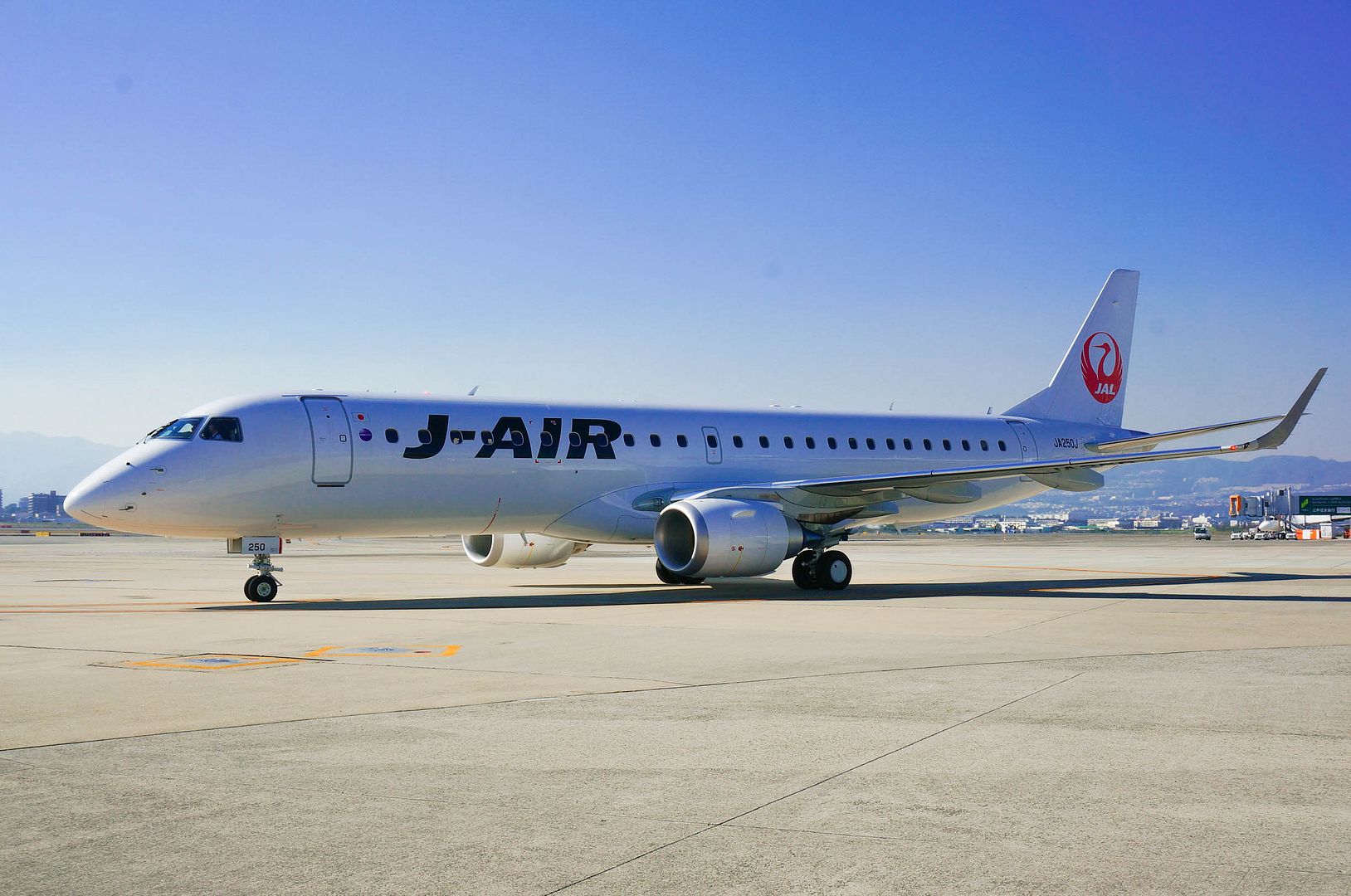
-
 Main AdminA Royal Air Force Typhoon FGR4 flies next to a U.S. Air Force KC-135 Stratotanker, assigned to the 100th Air Refueling Wing at RAF Mildenhall, England, Nov. 8, 2017, after receiving fuel over Scotland. The Stratotanker, Typhoons and a RAF A330 Voyager flew in formation during a mission in support of Tartan Flag, an RAF exercise in preparation for Red Flag 2018. (U.S. Air Force photo by Senior Airman Justine Rho)
Main AdminA Royal Air Force Typhoon FGR4 flies next to a U.S. Air Force KC-135 Stratotanker, assigned to the 100th Air Refueling Wing at RAF Mildenhall, England, Nov. 8, 2017, after receiving fuel over Scotland. The Stratotanker, Typhoons and a RAF A330 Voyager flew in formation during a mission in support of Tartan Flag, an RAF exercise in preparation for Red Flag 2018. (U.S. Air Force photo by Senior Airman Justine Rho)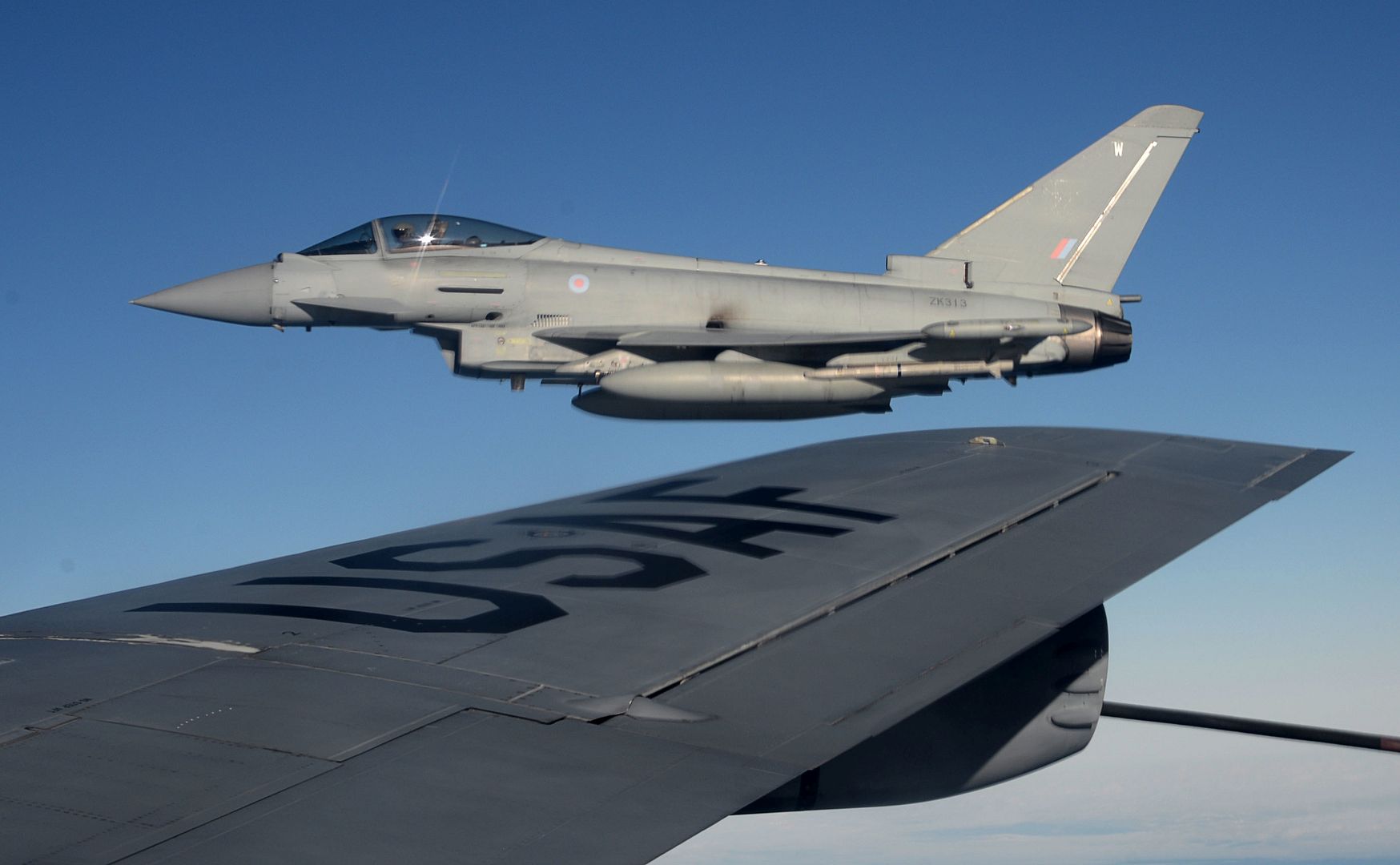
A Royal Air Force Tornado GR4 receives fuel from an RAF A330 Voyager Nov. 1, 2017, off the east coast of Scotland. A U.S. Air Force KC-135 Stratotanker simultaneously provided aerial fueling during the mission in support of Tartan Flag, an RAF exercise in preparation for Red Flag 2018. (U.S. Air Force photo by Senior Airman Justine Rho)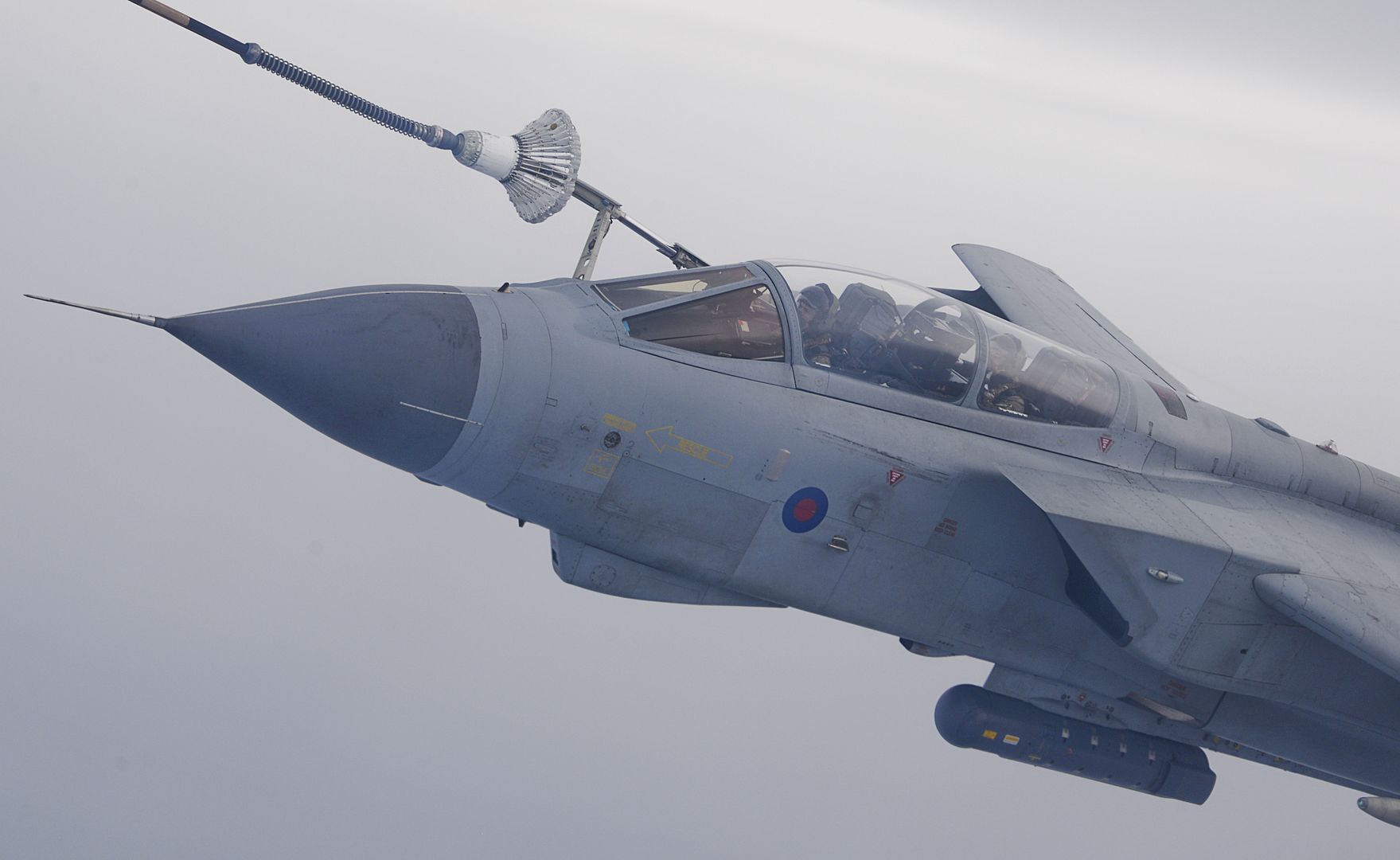
A U.S. Air Force F-15E Strike Eagle from the 389th Fighter Squadron, Mountain Home Air Force Base, Idaho, sits parked on the flightline at Tyndall Air Force Base, Fla., Nov. 6, 2017. Mountain Home AFB sent assets to Tyndall to participate in concurrent exercises Checkered Flag 18-1 and Combat Archer. (U.S. Air Force photo by Airman 1st Class Isaiah J. Soliz/Released)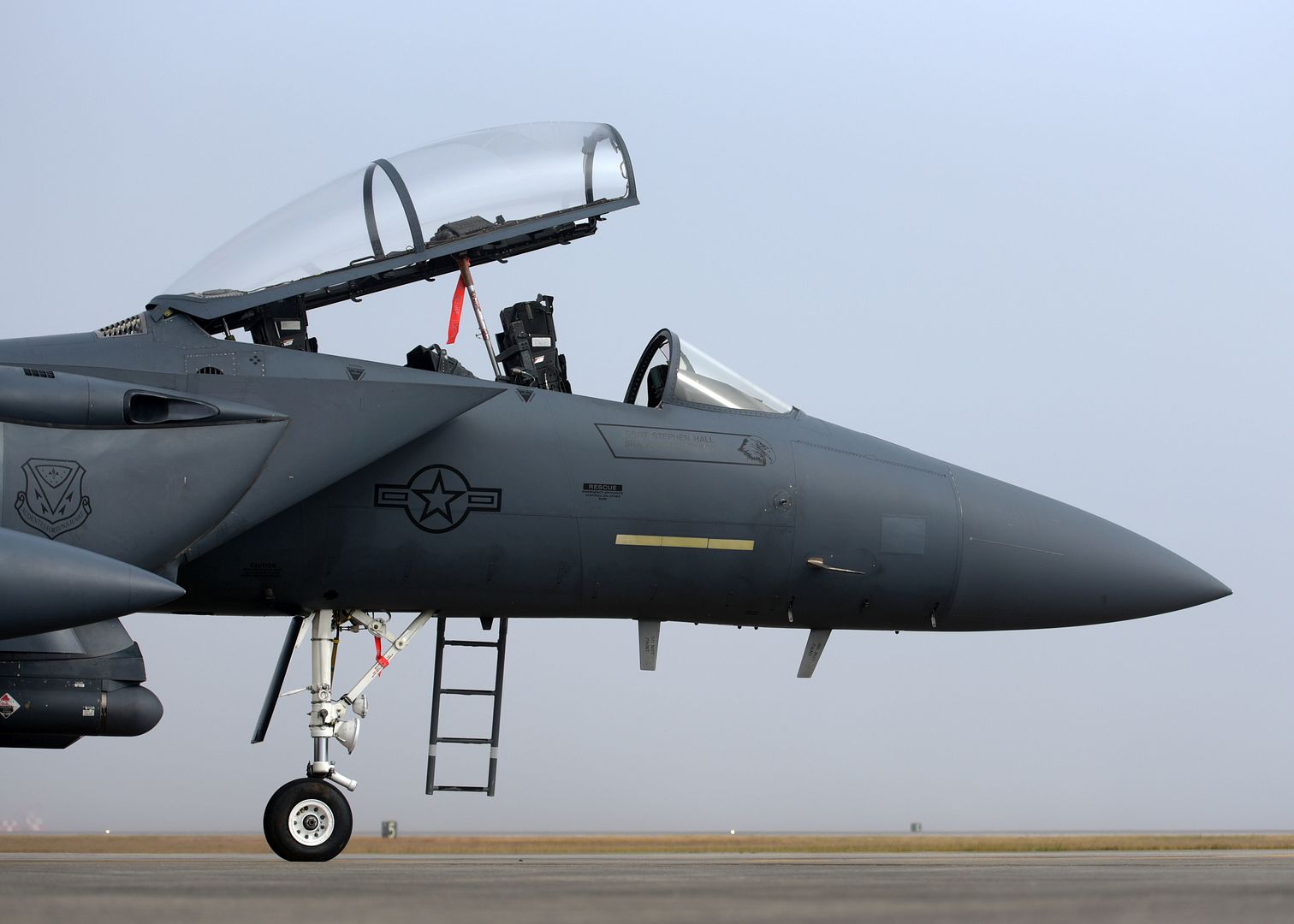
A U.S. Air Force F-22 Raptor from the 525th Fighter Squadron, Joint Base Elmendorf-Richardson, Alaska, taxis down the flightline at Tyndall Air Force Base, Fla., Nov. 3, 2017. The 525th FS F-22 Raptors came to Tyndall to participate in exercise Checkered Flag 18-1 and Combat Archer from Nov. 6-17. (U.S. Air Force photo by Airman 1st Class Isaiah J. Soliz/Released)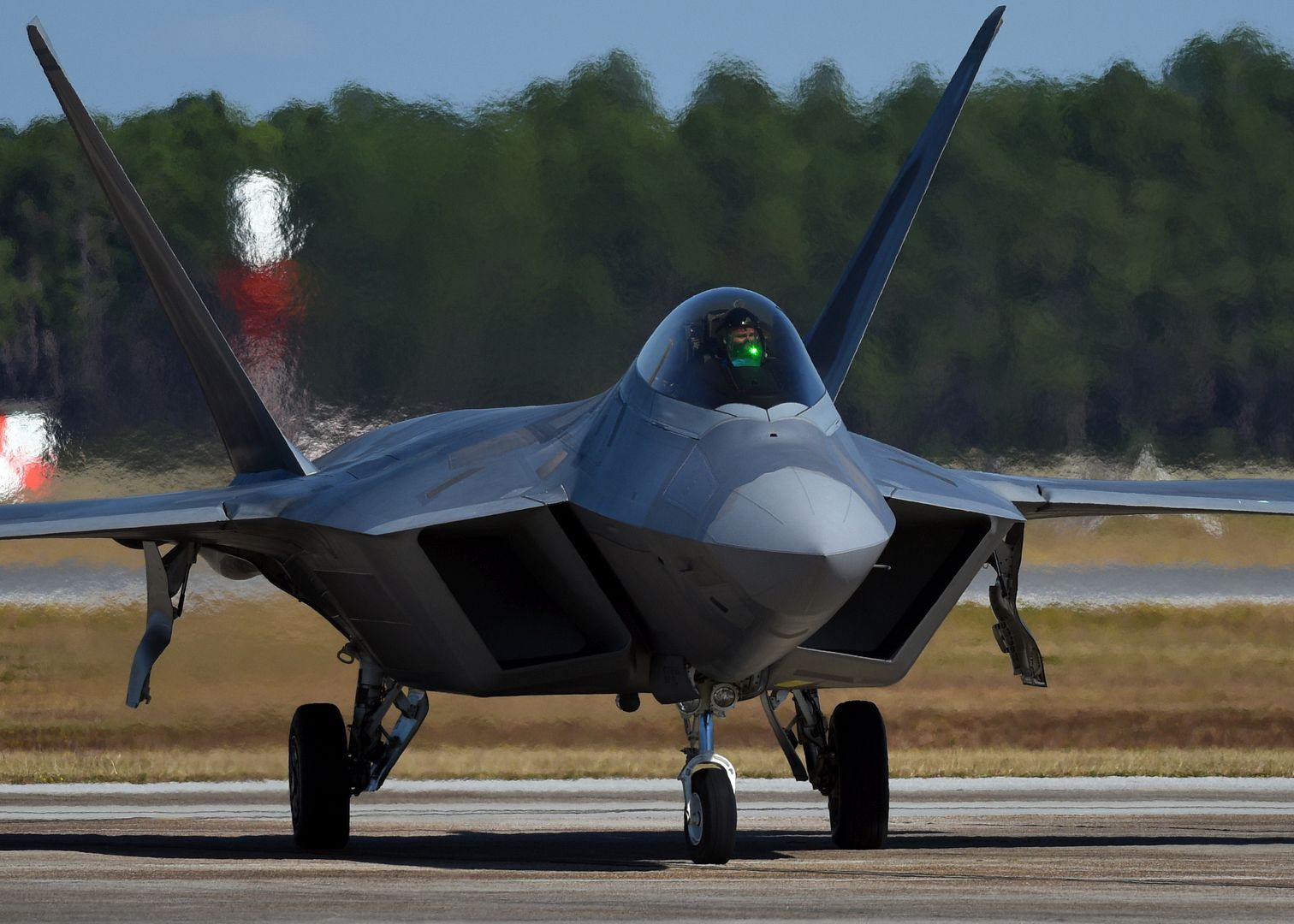
November 8, 2017 Montr?al Commercial Aircraft, Press Release
Bombardier Commercial Aircraft will celebrate the CS300 exceptional first year in service by showcasing airBaltic?s newest aircraft at the 2017 Dubai Airshow from November 12 to 16.
?We are very proud to bring a C Series in airBaltic?s livery at this year?s Dubai Airshow, and to celebrate alongside airBaltic the recent launch of the new route between Riga and Abu Dhabi with a CS300 aircraft,? said Fred Cromer, President, Bombardier Commercial Aircraft. ?We are thrilled to see our CS300 aircraft exceeding performance targets and opening up new opportunities for our operators.?
Bombardier also lands with a forecast of growth for airlines in the Middle East region over the next 20 years. During the Dubai Airshow, Bombardier will update customers and media alike on its forecast of 450 aircraft deliveries in the 60- to 150-seat category to Middle East operators.
?Middle East airline capacity continues to grow despite decreasing yields due to emergence of low-cost carriers in the region.? said Jean-Paul Boutibou, Vice President, Sales, Middle-East and Africa. Right-sizing of the fleet will lead to market penetration and profitability in an increasingly competitive Middle East airline market, which will create an equivalent demand for efficient aircraft such as the C Series aircraft.?
Bombardier Commercial Aircraft?s footprint has grown steadily in the Middle-East with about 15 operators and over 70 aircraft. The high-performing Q400 turboprop has notably enabled operators in the region to successfully improve intra-regional connectivity, and the new C Series family of aircraft is a great complement to the region?s widebody fleets, and provides unique growth opportunities.
Bombardier will also emphasize its presence at the airshow with a display of Q400 aircraft in the colours of Falcon Aviation, as well as a super-midsize Challenger 650 jet and an ultra-long range Global 6000 business aircraft.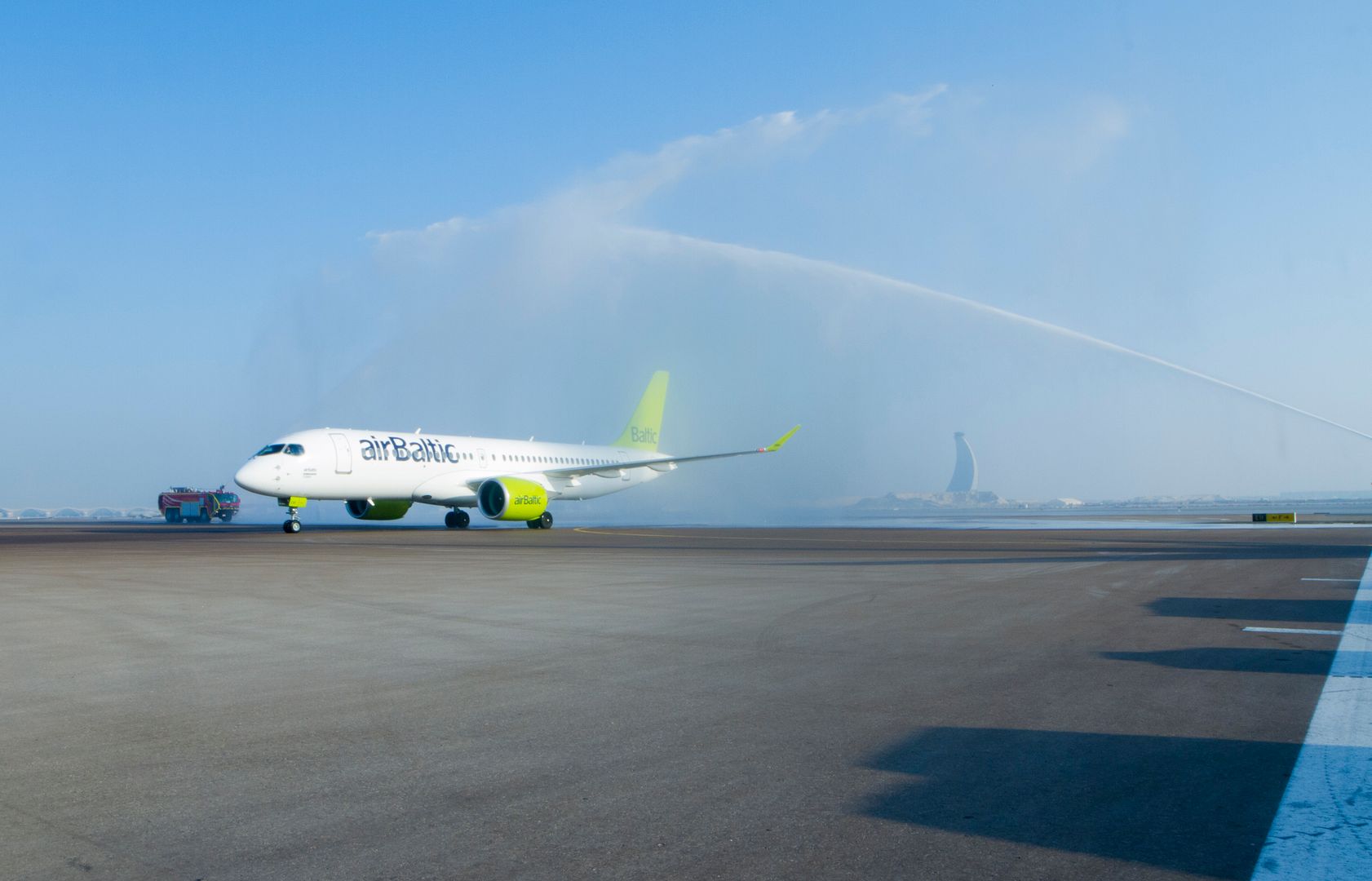
The First Secretary of State unveiled a frontline Scots-based Typhoon fast jet renamed ?Sir Roderic? in honour of an RAF tradition born of one family?s tragedy in 1941 at RAF Lossiemouth today, Wednesday, 8 November 2017.
In 1941, Lady MacRobert lost two sons who flew with the RAF within six weeks of each other: Roderic (25) was killed when leading a Hurricane aircraft attack on German positons in Iraq; Ian (24) was declared missing in action after his Blenheim aircraft failed to return from a search and rescue mission flown from Shetland ? his body was never found. Their older brother Alasdair had also been killed in a civil aviation accident in 1938.
The indomitable response of Lady MacRobert to these tragedies was to buy a ?25,000 Stirling bomber aircraft for the RAF that same year, stipulating that it be called MacRobert?s Reply, and which flew 12 operational missions.
In 1942, Lady MacRobert donated a further ?20,000 to purchase four Hurricane fighters, which were sent to RAF operations in the Middle East, with three named after her sons and the fourth after her.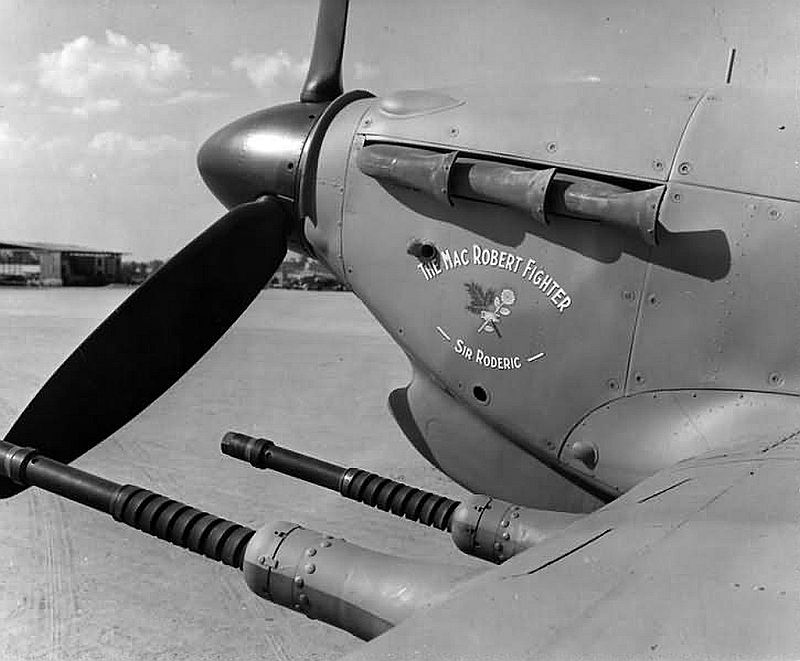
A succession of RAF aircraft has carried the MacRobert?s name ever since. The MacRobert Trust has donated millions of pounds to charitable organisations, created a variety of prizes, awards, traineeships and endowments, and paid for building works across the country.
Damian Green MP said:
?In this season of remembrance, the MacRobert?s legacy epitomises the contribution made by Scotland and the Scots to the defence and national security of the United Kingdom, both historically and today.
?The new Sir Roderic belongs to 6 Squadron which maintains the Quick Reaction Alert (Interceptor) mission, alongside sister aircraft from RAF Coningsby in Lincolnshire. Together they protect UK airspace from rogue aircraft and other threats by providing crews and aircraft at high states of readiness 24 hours a day, 365 days a year.?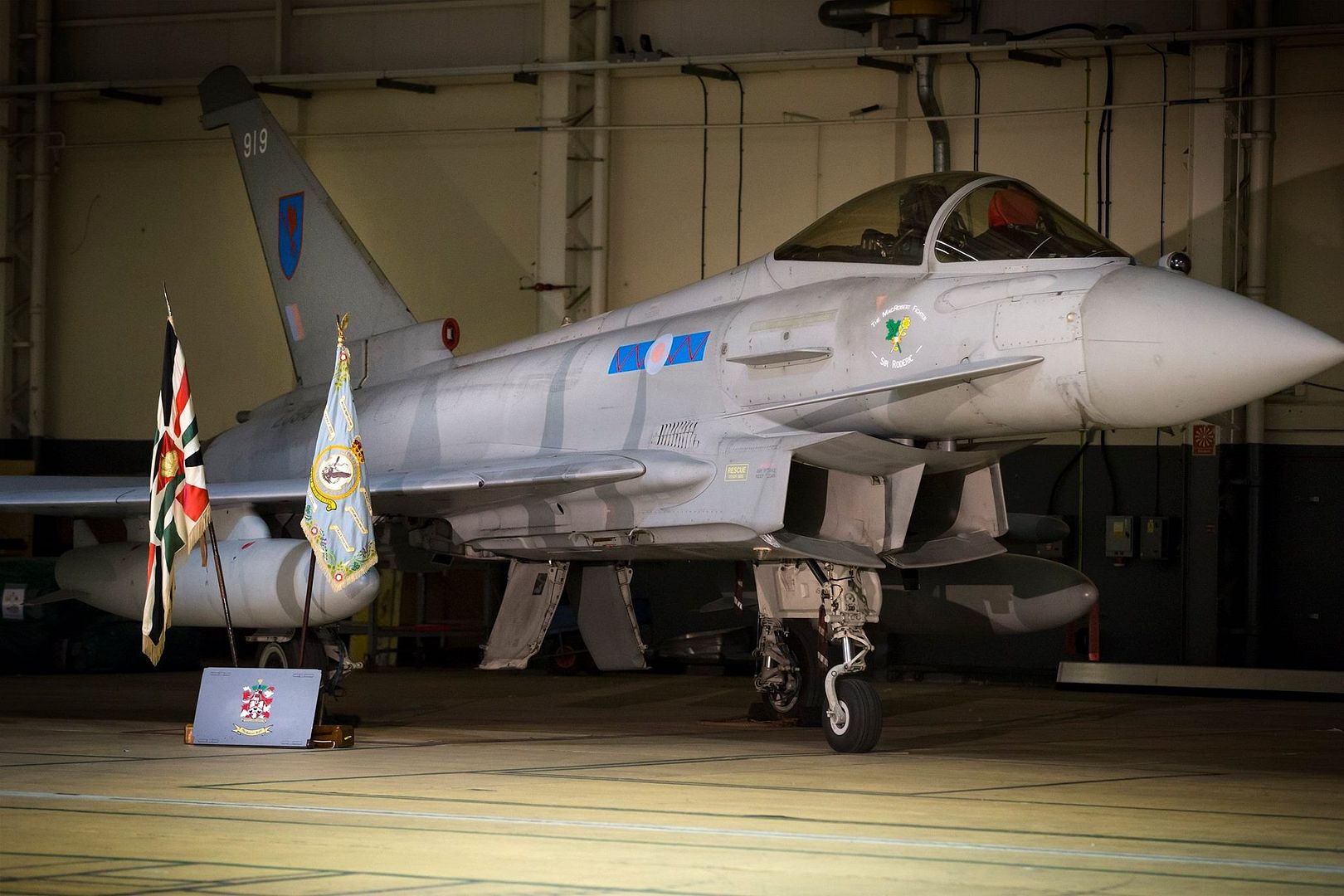
-
 Main AdminA French Air Force Rafale conducts refueling operations with a KC-135 Stratotanker from the 340th Expeditionary Air Refueling Squadron over Iraq in support of Operation Inherent Resolve, Nov. 1, 2017. The Rafale is capable of supporting the full mission spectrum: Air superiority, fighter escort, reconnaissance, aerial refueling, close air support, air defense suppression and precision strikes. (U.S. Air Force photo by Tech. Sgt. Gregory Brook)
Main AdminA French Air Force Rafale conducts refueling operations with a KC-135 Stratotanker from the 340th Expeditionary Air Refueling Squadron over Iraq in support of Operation Inherent Resolve, Nov. 1, 2017. The Rafale is capable of supporting the full mission spectrum: Air superiority, fighter escort, reconnaissance, aerial refueling, close air support, air defense suppression and precision strikes. (U.S. Air Force photo by Tech. Sgt. Gregory Brook)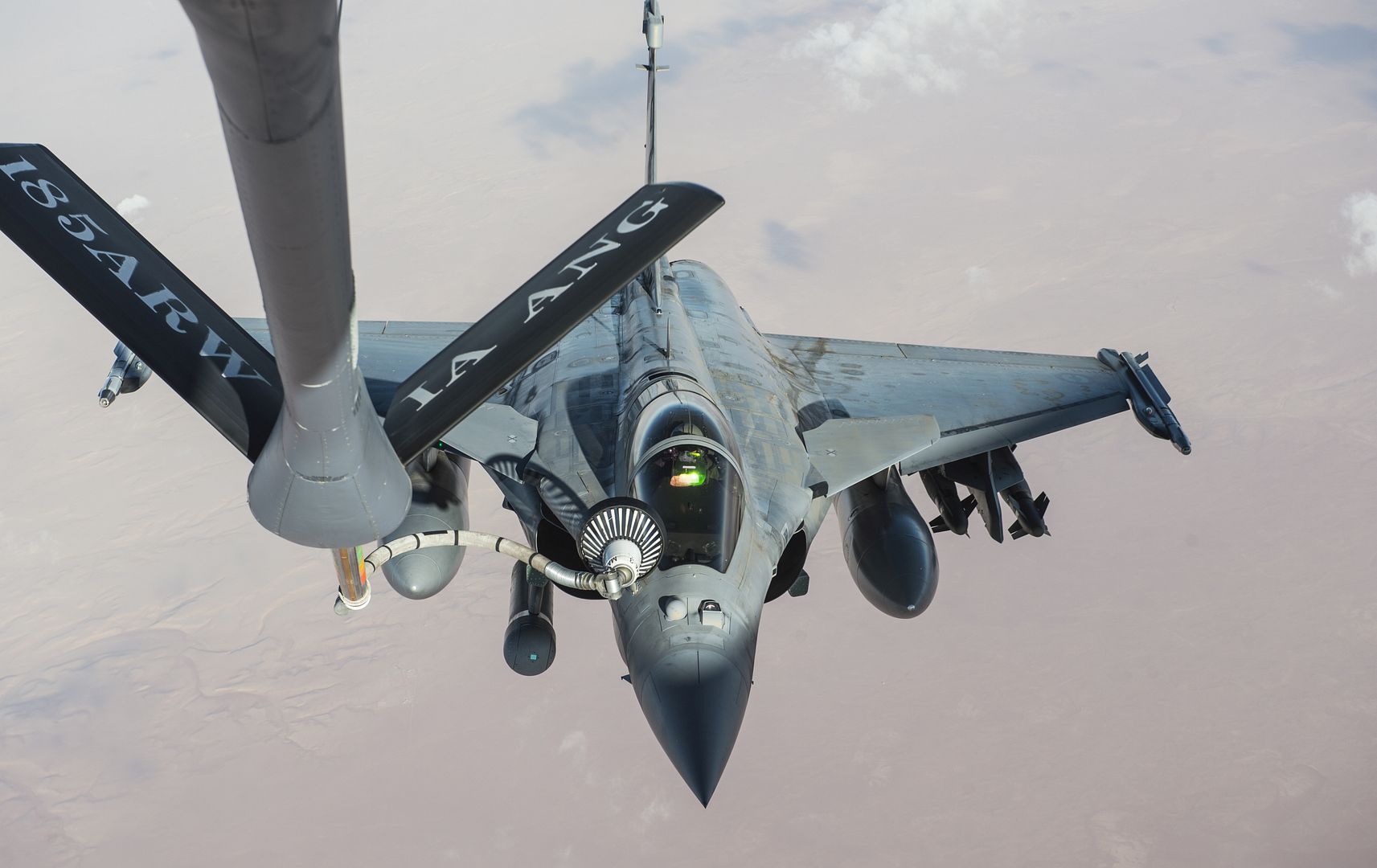
A U.S. Navy E/A-18 Growler conducts aerial refueling operations with a KC-135 Stratotanker from the 340th Expeditionary Air Refueling Squadron over Iraq, Nov. 1, 2017. The E/A-18 Growler is capable of supporting the full mission spectrum: Air superiority, fighter escort, reconnaissance, aerial refueling, close air support, air defense suppression and precision strikes, through its electronic warfare capabilities. (U.S. Air Force photo's by Tech. Sgt. Gregory Brook)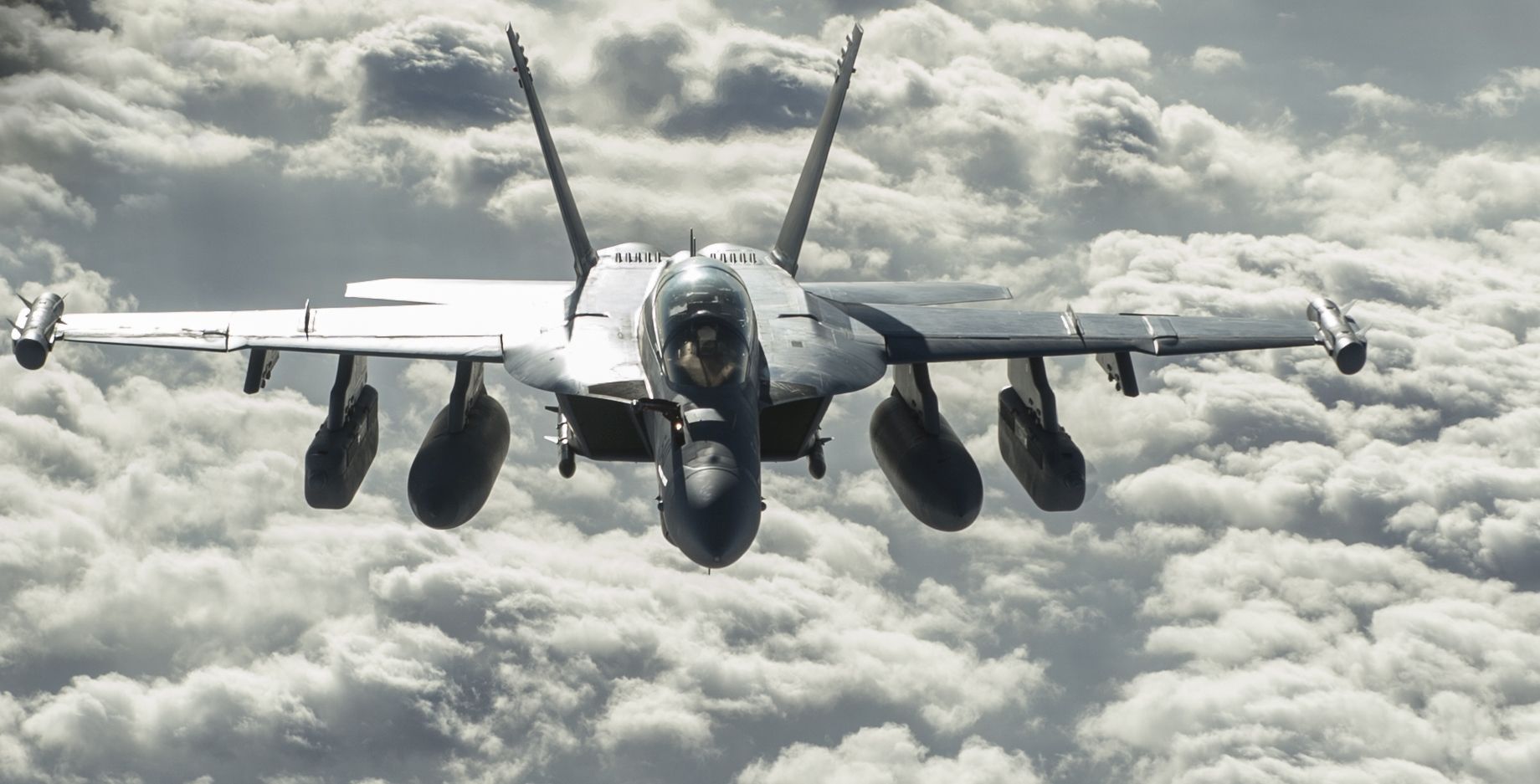

A F-22 Raptor performs a demonstration of capability, Nov. 5, 2017, at Naval Air Station Jacksonville, Fla. The Raptor, Flown by Maj. Daniel Dickinson, F-22 Raptor Demo Team pilot, performed display of capabilities before joining the Heritage Flight Formation. (U.S. Air Force photo by Staff Sgt. Eric Summers Jr.)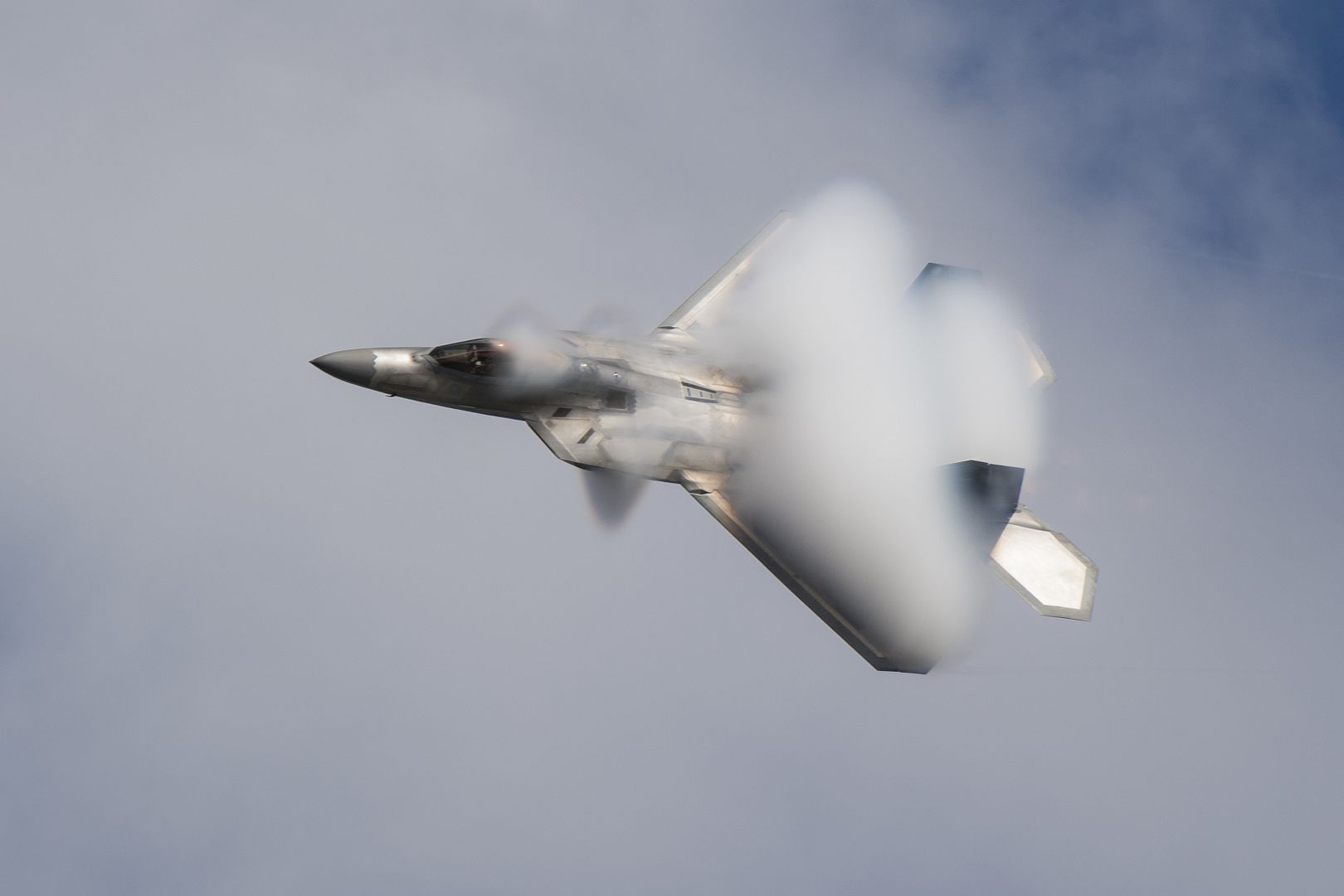
An F-15E Strike Eagle from the 492nd Fighter Squadron, takes off from the flight line for a training sortie at Royal Air Force Lakenheath, England, Nov. 6. The 492nd FS recently returned from a six-month deployment to an undisclosed location in Southwest Asia. (U.S. Air Force photo/Staff Sgt. Emerson Nu?ez)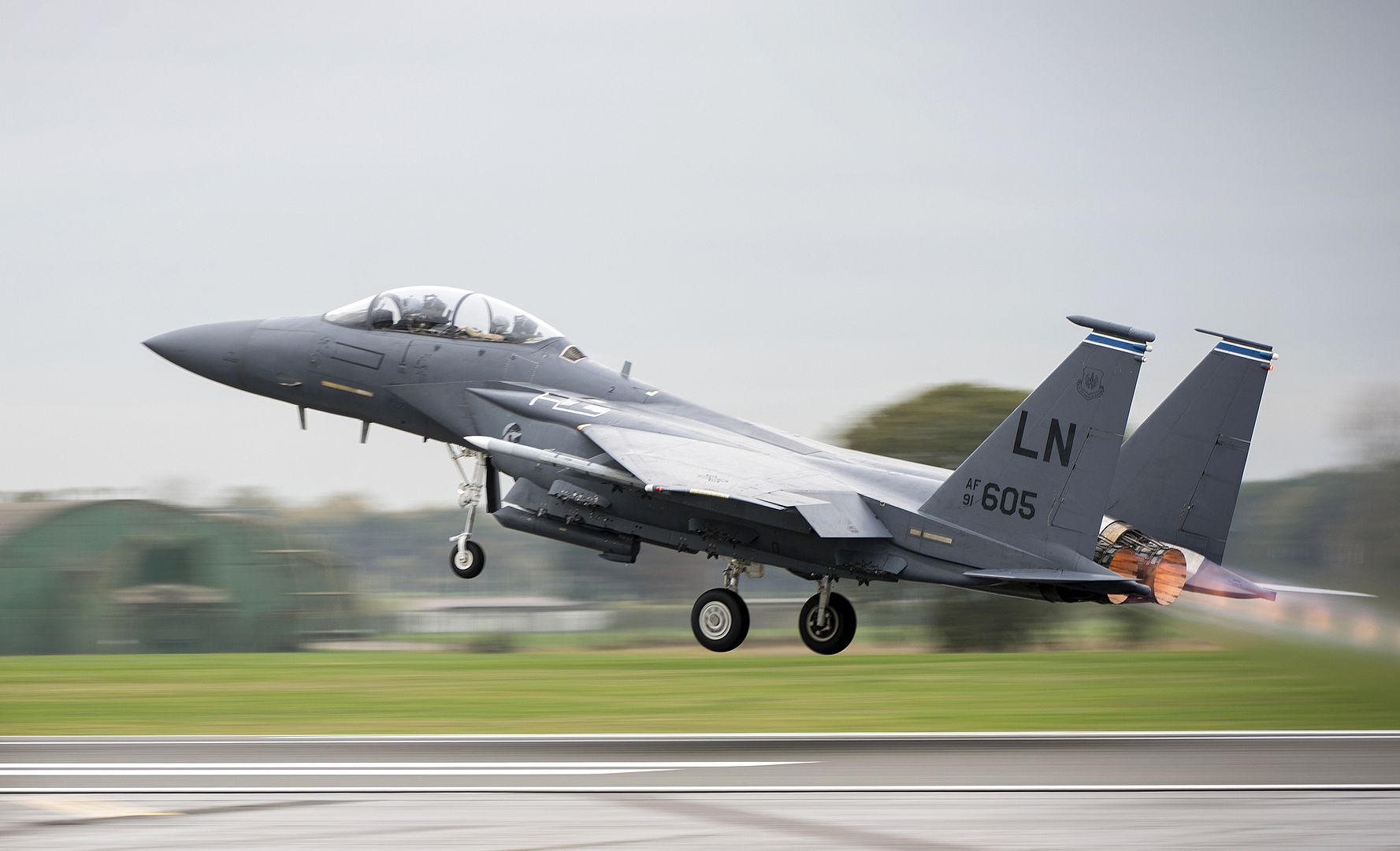
Four F-16C Fighting Falcons assigned to the 510th Fighter Squadron, Aviano Air Base, Italy, prepare to take off at Uvda Air Force Base, Israel, Nov. 6, during Blue Flag 2017. This biennial exercise is essential to building and maintaining defensive interoperability. (U.S. Air Force photo/Senior Airman Abby L. Finkel)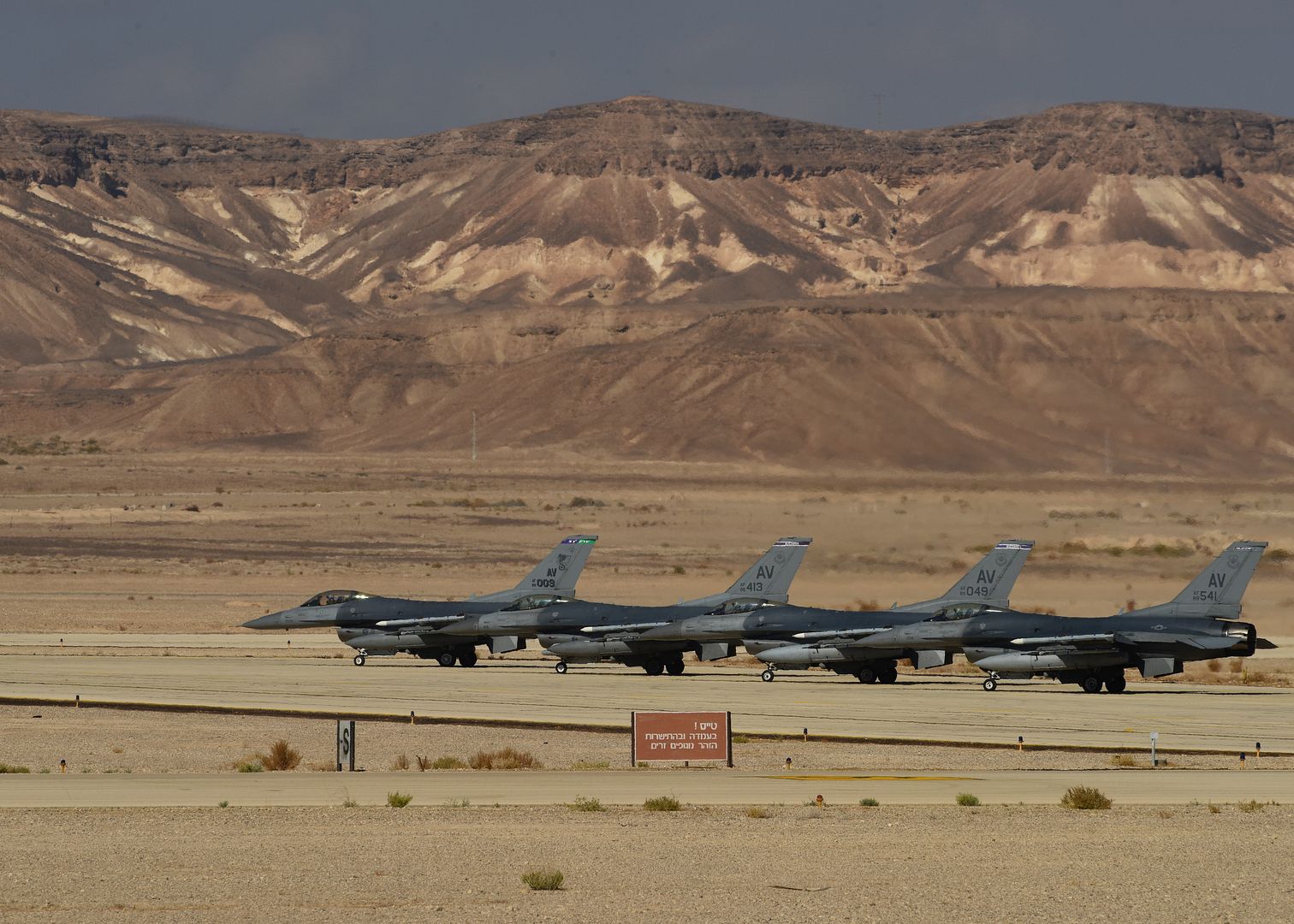
A 43rd Fighter Squadron, Tyndall Air Force Base, Fla., F-22 Raptor goes down the Tyndall flightline Nov. 9, 2017. Tyndall Raptors participated in Checkered Flag 18-1, a large-scale aerial exercise designed to integrate fourth and fifth-generation airframes to enhance the capabilities of Airmen while providing training to rapidly respond to current, real-world conflicts and preparing for the future of air superiority. (U.S. Air Force photo by Senior Airman Sergio A. Gamboa/Released)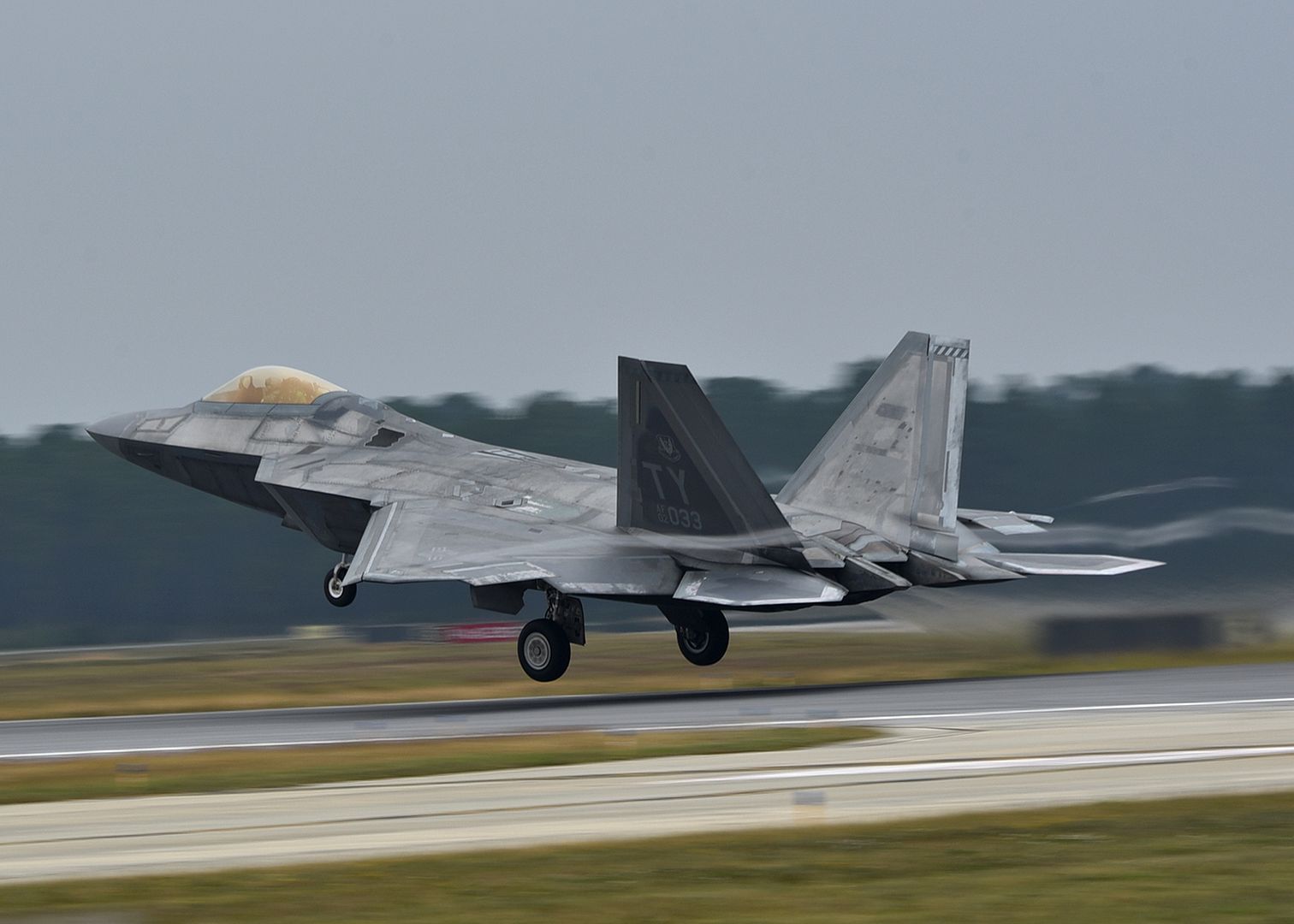
ATLANTIC OCEAN (Nov. 7, 2017) A U.S. Marine Corps MV-22B Osprey assigned to Marine Medium Tiltrotor Squadron 162 (Reinforced), 26th Marine Expeditionary Unit (MEU), takes off from the amphibious assault ship USS Iwo Jima (LHD-7) as part of combined composite training unit exercise (COMPTUEX) in the Atlantic Ocean. The exercise allows all elements of the Marine Air Ground Task Force to join and train in realistic scenarios so the MEU as a whole can meet its Pre-Deployment Training Program objectives prior to their upcoming deployment at sea. (U.S. Marine Corps photo by Cpl. Jon Sosner/Released)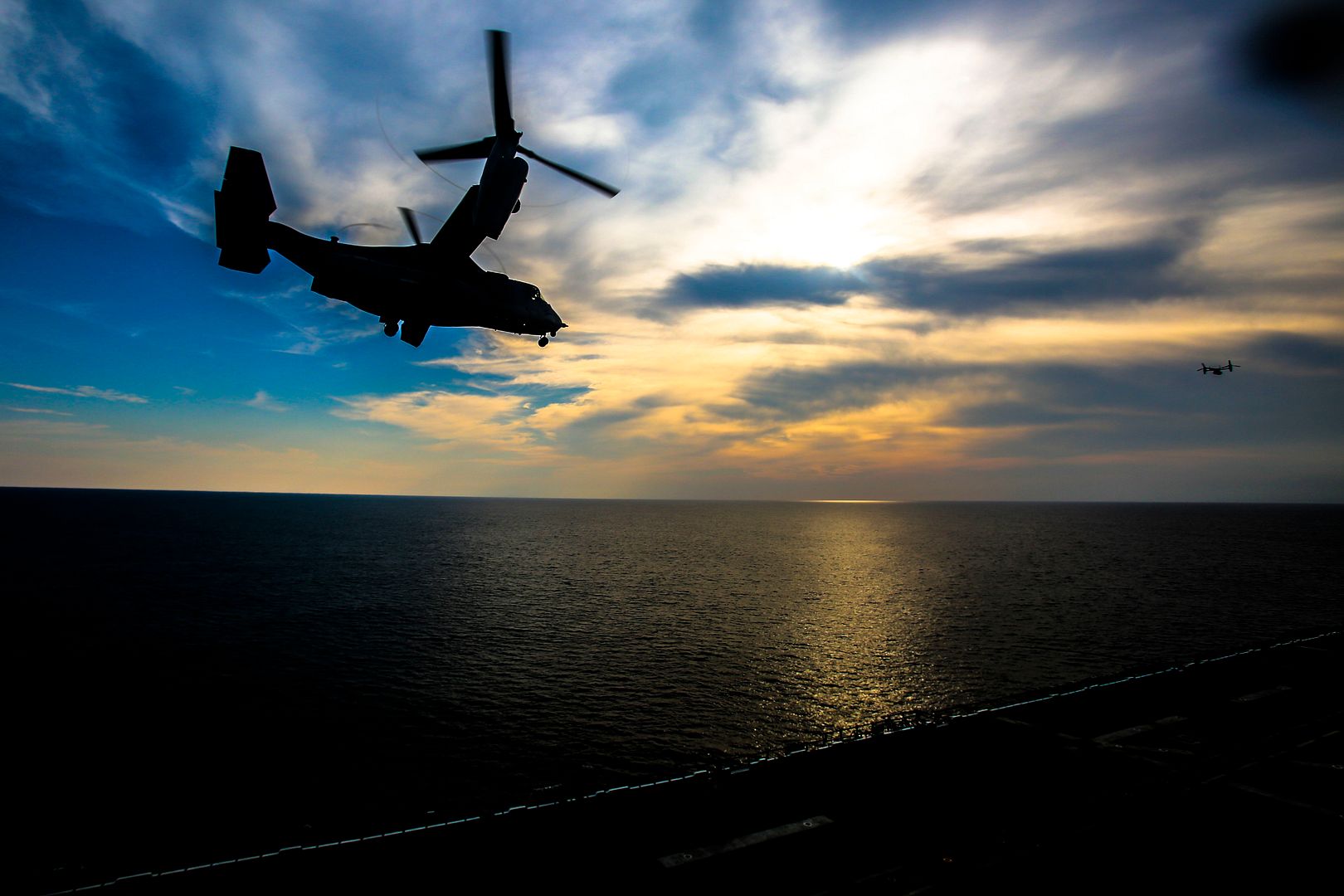
SEATTLE, Nov. 9, 2017 /PRNewswire/ -- Boeing [NYSE:BA] and CDB Aviation today finalized an order for 42 737 MAX 8s, 10 737 MAX 10s and eight 787-9 Dreamliners.
The order, valued at $7.4 billion at current list prices, was announced as a Memorandum of Understanding (MOU) at the 2017 Paris Air Show. The order includes a conversion of six 737 MAX 8 orders, to the 737 MAX 10.
CDB Aviation, one of the largest and most influential Chinese-owned aviation leasing companies, is part of the launch customer group for the 737 MAX 10, the newest member of Boeing's 737 MAX family.
"The 737 MAX and the 787 Dreamliner are some of the most advanced, most fuel-efficient airplanes in the world today," said CDB Aviation President and Chief Executive Officer Peter Chang. "We're confident that the reliability, efficiency and superior economics of the MAX and Dreamliner families will be very appealing to our customers."
Based in Dublin, Ireland, CDB Aviation operates as a wholly owned Irish subsidiary of China Development Bank Financial Leasing Co., LTD (CDB Leasing) (HKEX stock code:1606) and features a committed fleet of over 300 aircraft.
"CDB Aviation is a leader in the leasing market and we're excited the 737 MAX and 787 Dreamliner will be the pillars of its growing fleet," said Boeing Commercial Airplanes President & CEO Kevin McAllister.
The 737 MAX family is the fastest-selling airplane in Boeing history with over 4,000 orders from 93 customers worldwide. Boeing has delivered more than 30 737 MAX airplanes this year.
"Being one of the launch customers of the MAX 10 and bringing the MAX family's orders over the 4,000 milestone further demonstrates CDB Aviation's steadfast efforts to advance its global mission and deliver the latest technology aircraft to current and prospective customers," added Chang.
The Boeing 787 Dreamliner is the fastest-selling twin-aisle airplane in history. Boeing has delivered more than 600 787s entering service in 2011, flying more than 200 million people on more than 610 unique routes, saving over 19 billion pounds of fuel.
About CDB Aviation
CDB Aviation Lease Finance DAC (CDB Aviation) is a wholly owned Irish subsidiary of China Development Bank Financial Leasing Co., Limited (CDB Leasing) a 33-year-old Chinese leasing company that is backed mainly by the China Development Bank. China Development Bank is under the direct jurisdiction of the State Council of China and is the world's largest development finance institution. It is also the largest Chinese bank for foreign investment and financing cooperation, long-term lending and bond issuance, enjoying Chinese sovereign credit rating. www.CDBAviation.AERO
CDB Leasing is the only leasing arm of the China Development Bank and a leading company in China's leasing industry that has been engaged in aircraft, infrastructure, ship, commercial vehicle and construction machinery leasing and enjoys a Chinese sovereign credit rating. It took an important step in July 2016 to globalize and marketize its business ? listing on the Hong Kong Stock Exchange (HKEX STOCK CODE: 1606).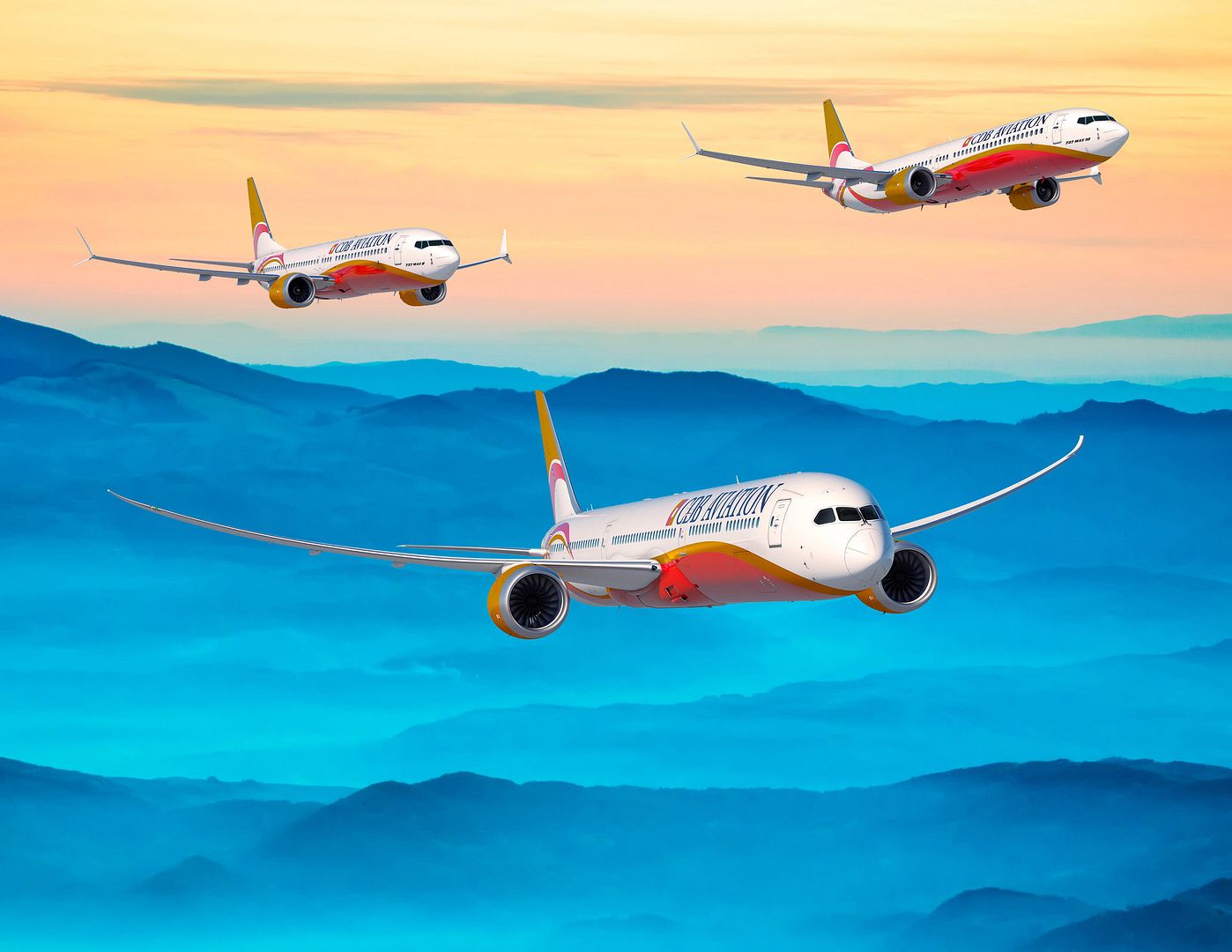
Donauw?rth ? Airbus Helicopters has recently completed a ballistic development test of an HForce weapon system on a H145M on P?pa Airbase in Hungary. The tested system included guns (FN Herstal HMP400), unguided rockets (Thales FZ231) and cannons (Nexter NC621) as well as an electro-optical targeting system by Wescam (MX15) and a helmet mounted sight display by Thales (Scorpion). All planned and required tests were performed in a tight and demanding time schedule.
?This is an important milestone towards the qualification of HForce on the H145M, which is planned for end 2018?, said Axel Humpert, Head of H145 Programme. ?The positive results of this first ballistic development test are the outcome of a very good and professional cooperation between all parties involved, especially with the Hungarian Ministry of Defence.?
Next steps prior to the qualification of HForce on the H145M are the development testing of laser-guided rockets in Sweden before the end of the year as well as additional live-firing trials in summer 2018.
HForce is an innovative, incremental and integrated high performance weapon system that can easily be fitted (?plug and play?) into Airbus Helicopter?s military platforms such as H125M, H145M and H225M for ambitious and smart military operations where flexibility of mission equipment is a vital criterion. It is designed to meet the requirements of defence agencies seeking light attack mission capabilities or a complement to their existing fleet of specialized attack helicopters. Meanwhile, qualification of the core HForce system is on track for end 2017, following an extensive flight-test campaign carried out on a H225M testbed.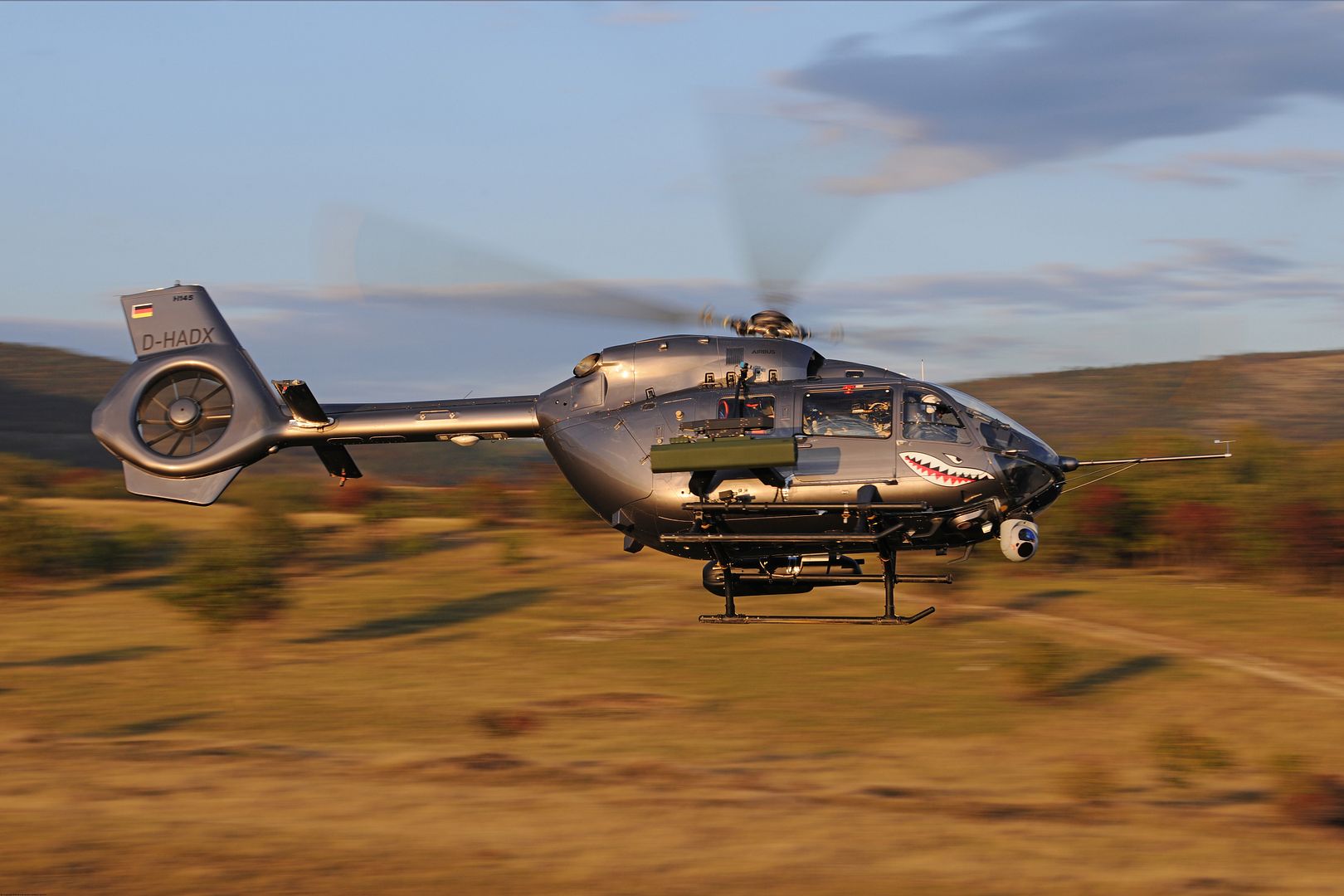
The H145M is a proven military helicopter, derived from the H145, a rugged workhorse and best in its class for rough EMS and police missions. First delivery of the H145 took place in 2014. The entire H145 fleet has now clocked up more than 80,000 flight hours. With a maximum take-off weight of 3.7 tonnes the H145M is an agile light attack helicopter. It perfectly matches the needs of Special Forces, can be used for a wide range of tasks, including armed reconnaissance, ground fire support, anti-tank warfare, escort, tactical transport, MEDEVAC and CASEVAC. Customers for the H145M include Germany ? which in June received their 15th and final H145M LUH SOF helicopter on time and on budget ? as well as the Republic of Serbia and the Kingdom of Thailand.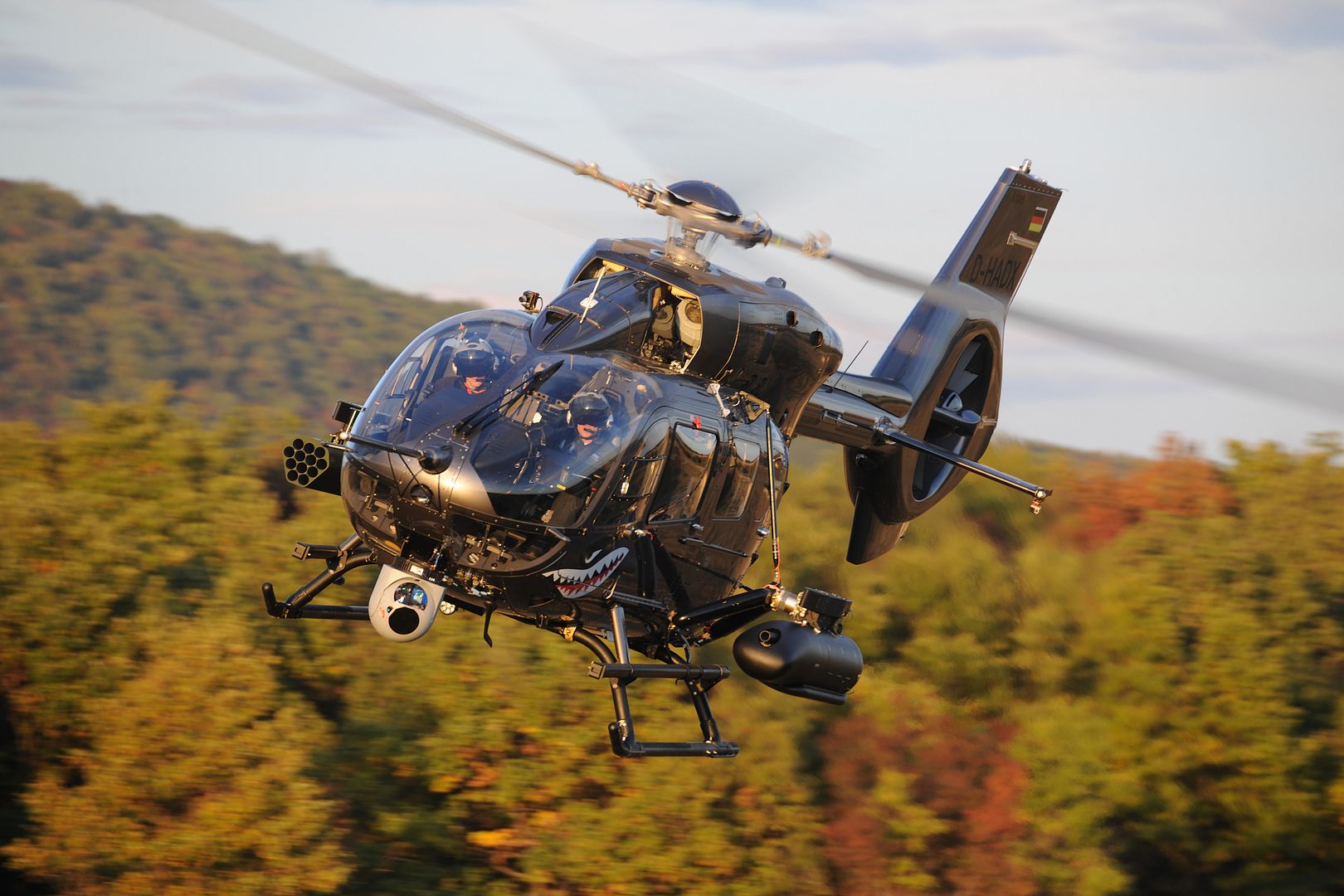
-
 Main AdminU.S. Air Force Airmen inspect the underbelly of an F-15E Strike Eagle from the 389th Fighter Squadron, Mountain Home Air Force Base, Idaho, at the Tyndall Air Force Base, Fla., flightline Nov. 9, 2017. Mountain Home was at Tyndall to participate Checkered Flag 18-1, a large-scale aerial exercise designed to integrate fourth and fifth-generation airframes and to Combat Archer, a Weapon System Evaluation Program. The 389th FS sent approximately 240 operations and maintenance Airmen and 14 F-15E Strike Eagles to the two-week long exercise. (U.S. Air Force photo by Senior Airman Sergio A. Gamboa/Released)
Main AdminU.S. Air Force Airmen inspect the underbelly of an F-15E Strike Eagle from the 389th Fighter Squadron, Mountain Home Air Force Base, Idaho, at the Tyndall Air Force Base, Fla., flightline Nov. 9, 2017. Mountain Home was at Tyndall to participate Checkered Flag 18-1, a large-scale aerial exercise designed to integrate fourth and fifth-generation airframes and to Combat Archer, a Weapon System Evaluation Program. The 389th FS sent approximately 240 operations and maintenance Airmen and 14 F-15E Strike Eagles to the two-week long exercise. (U.S. Air Force photo by Senior Airman Sergio A. Gamboa/Released)
A 43rd Fighter Squadron, Tyndall Air Force Base, Fla., F-22 Raptor goes down the Tyndall flightline Nov. 9, 2017. Tyndall Raptors participated in Checkered Flag 18-1, a large-scale aerial exercise designed to integrate fourth and fifth-generation airframes to enhance the capabilities of Airmen while providing training to rapidly respond to current, real-world conflicts and preparing for the future of air superiority. (U.S. Air Force photo by Senior Airman Sergio A. Gamboa/Released)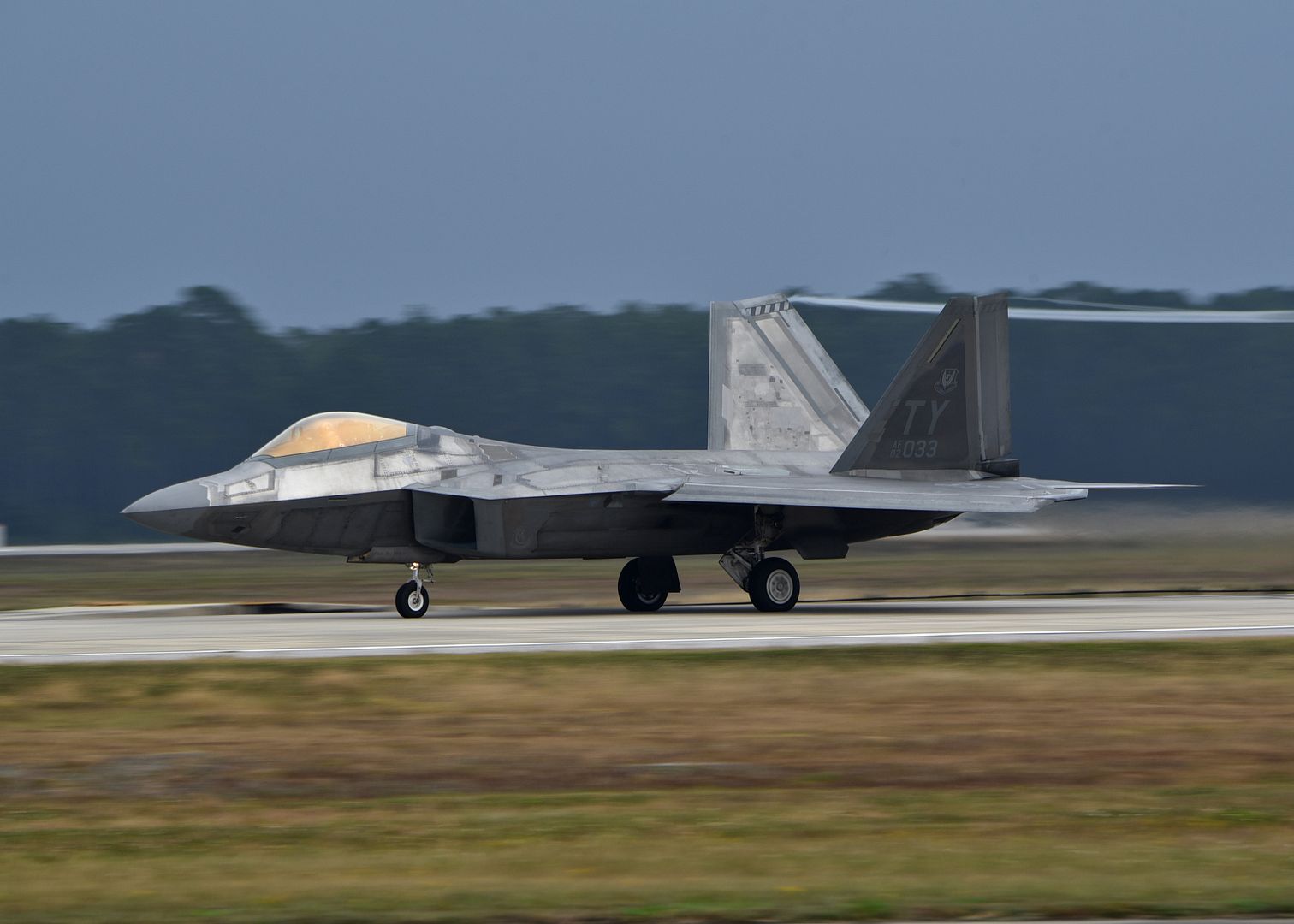
EIELSON AIR FORCE BASE, Alaska --
Approximately 150 personnel and 11 F-16 Fighting Falcons assigned to the 18th Aggressor Squadron traveled to Nellis Air Force Base, Nevada, to support the F-16 weapons instructor course (WIC) at the U.S. Air Force Weapons School.
?The course was founded as a center of excellence for tactical aviation,? said Lt. Col. Ryan Nudi, the 354th Operations Group deputy commander. ?In an effort to provide the most demanding tactical aviation course, the school needs world-class adversary air. The aggressors support this course by partnering with other adversary squadrons to provide the WIC students a premier near-peer adversary to train against.?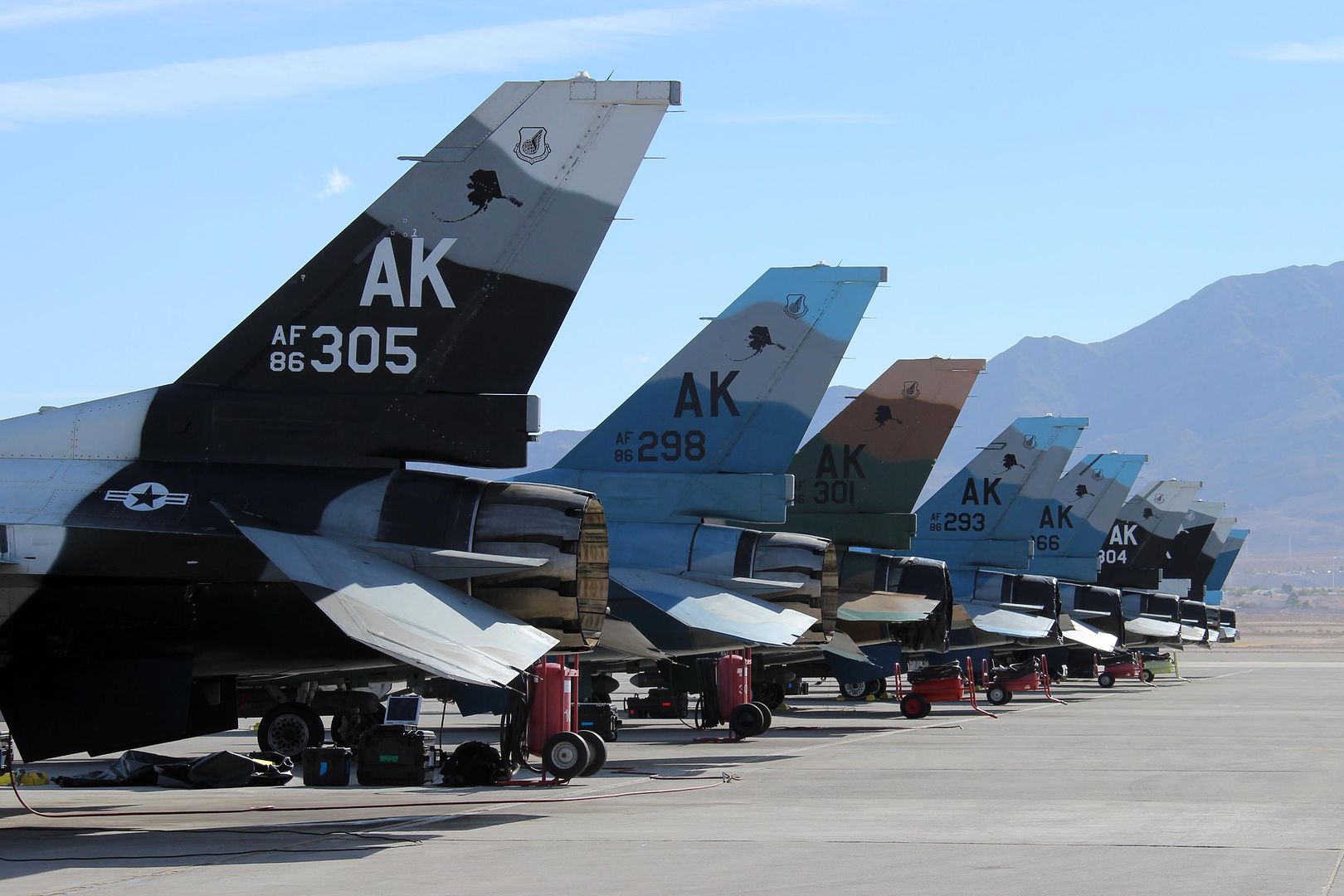
The temporary 6-month assignment to Nellis directly supports the wing commander?s priority of premier air exercises and adversary support.
According to Lt. Col. Gregory Keller, the 18th AGRS commander, aggressor participation is essential in providing the most realistic adversary threat replication possible.
Not only does the course train in adversary support, but it also prepares U.S. forces for the dynamic, ever-changing challenges of 21st century combat.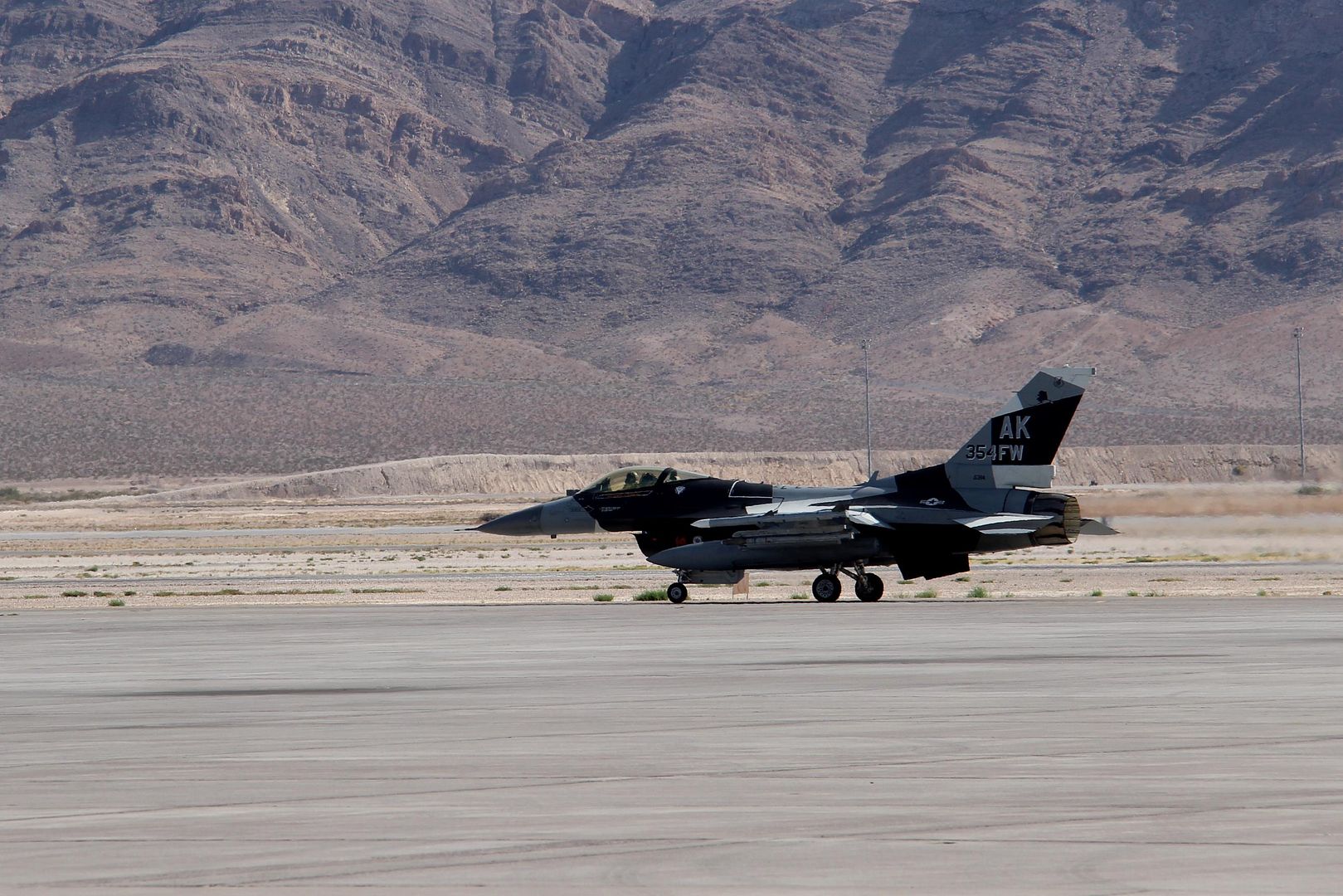
?The WIC teaches students the skills necessary to integrate combat power across multiple domains,? Keller said. ?In modern warfare, it is impossible to win a war by focusing on only one aspect of combat power. The course challenges students become tactical experts in their own weapons system and also how to integrate their unique skill sets with those of other Air Force and sister service units.?
While the aggressors are primarily a support asset at the weapons school, they still benefit from the course and are able to take their newfound knowledge back to the snow-covered Eielson landscape.
?We challenge ourselves with new scenarios and new environments during every TDY,? Keller said. ?Additionally, TDYs allow our operations and maintenance teams to work in collaboration to accomplish the mission without the comforts and advantages our home station provides.?
The aggressors are scheduled to participate in several more exercises before the upcoming RED FLAG-Alaska season, which will entail four joint exercises during the 2018 calendar year.
An F-16 Fighting Falcon from Nellis Air Force Base, Nev., flies over the outskirts of Las Vegas, Nev., Nov. 9, 2017. The Fighting Falcon features a Vegas Strong paint scheme which pays tribute to those affected by the Route 91 Harvest Festival shooting and the resiliency of the Las Vegas community. The aircraft, along with an F-15A Eagle, will be on display at the Nellis AFB Air and Space Expo Nov. 11-12. (U.S. Air Force Photo's by Tech. Sgt. Christopher Boitz)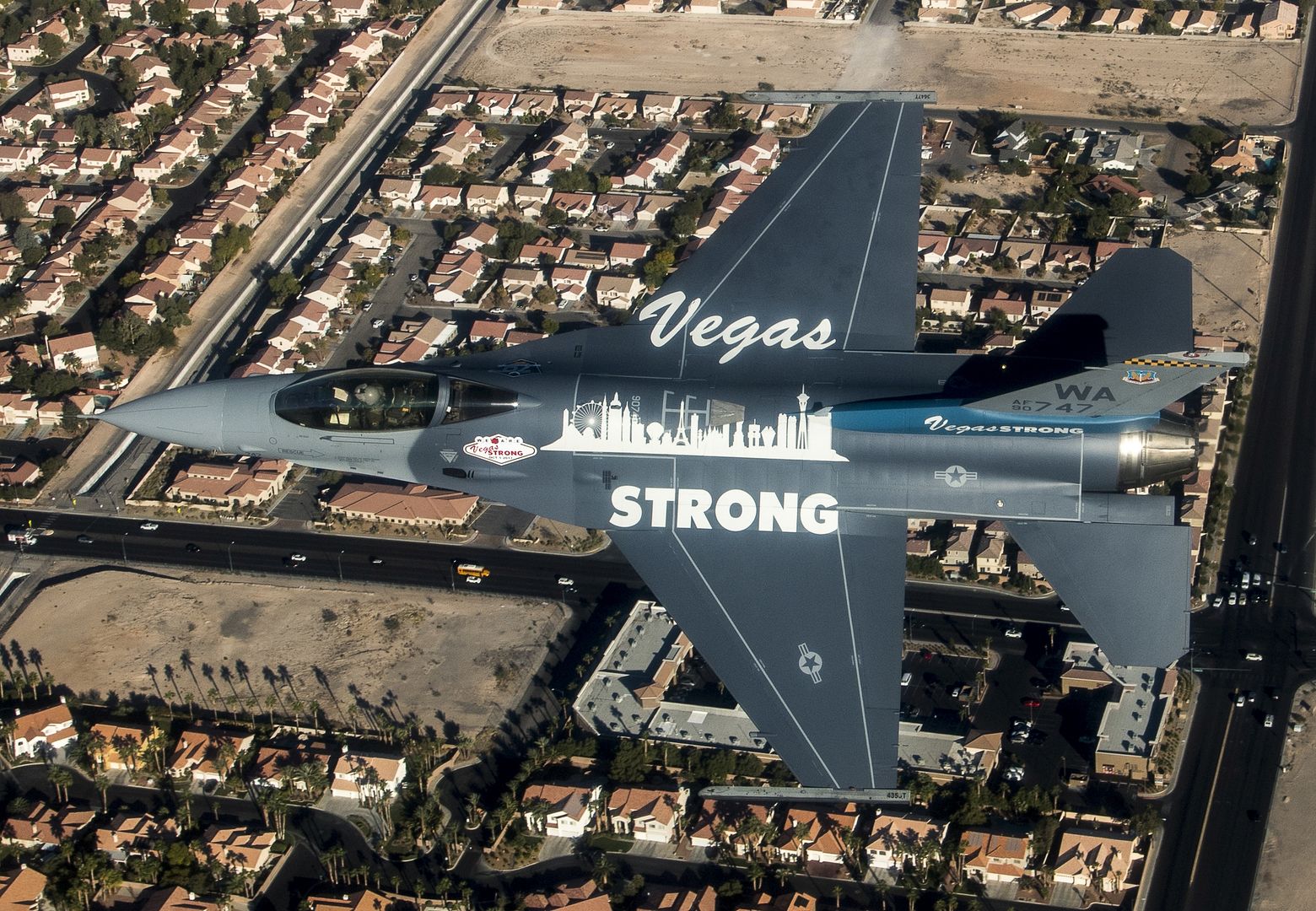
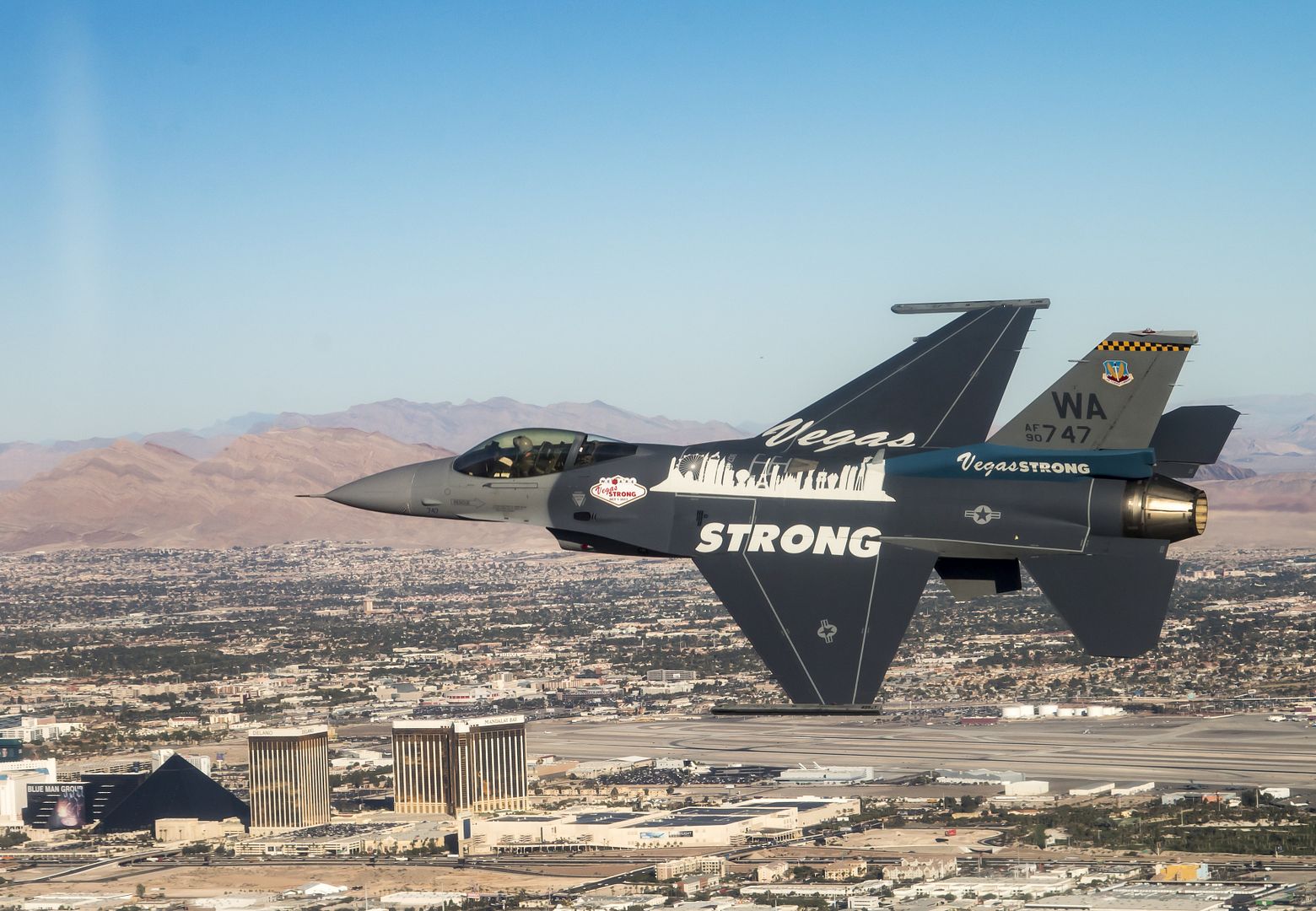
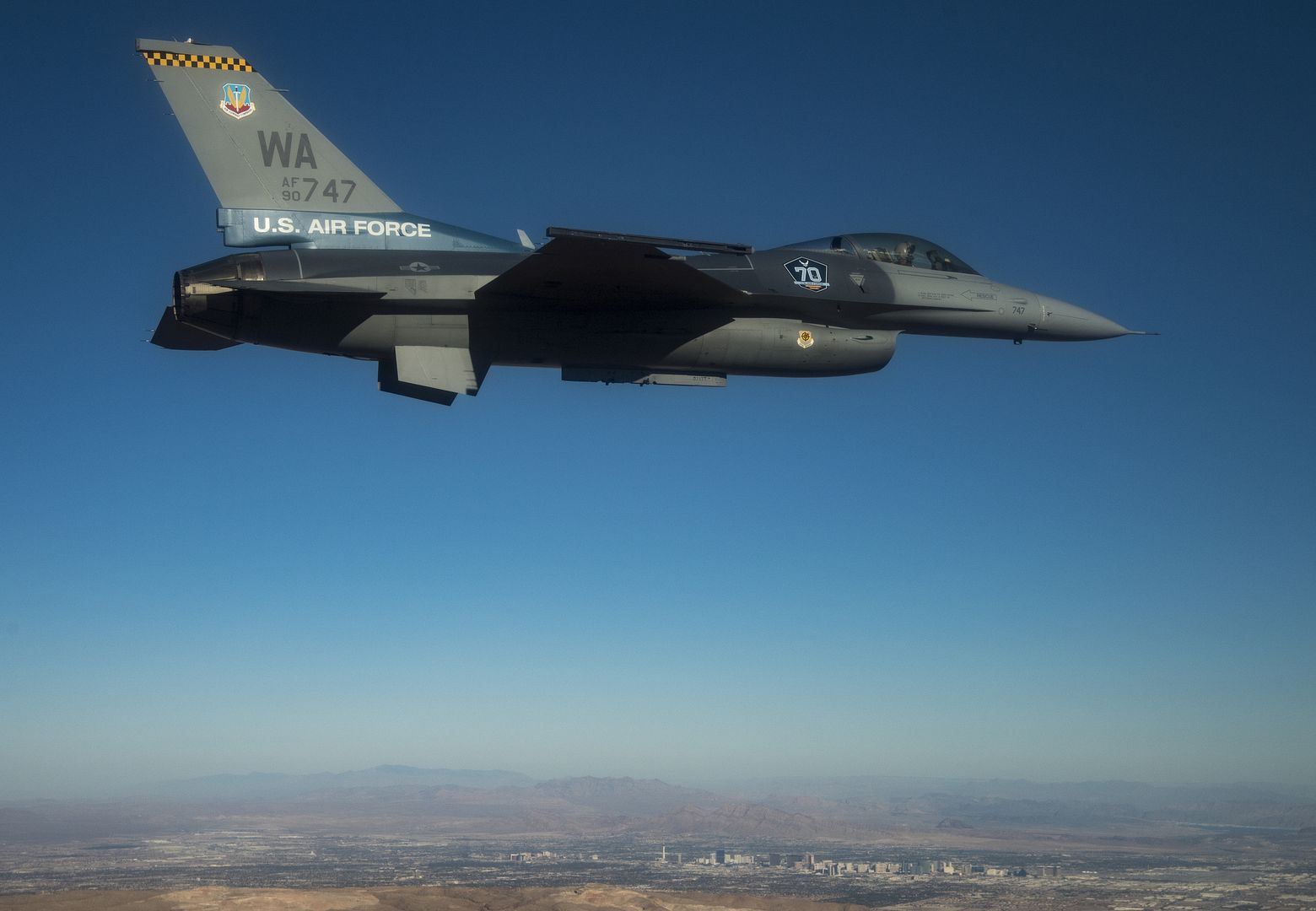
PHILIPPINE SEA (Nov. 8, 2017)
An F/A-18 Super Hornet flies over USS Nimitz (CVN 68). The aircraft carrier and its strike group are on a regularly scheduled deployment in the 7th Fleet area of operations in support of maritime security operations and theater security cooperation efforts. U.S. Navy photo by Mass Communication Specialist 2nd Class Elesia K. Patten (Released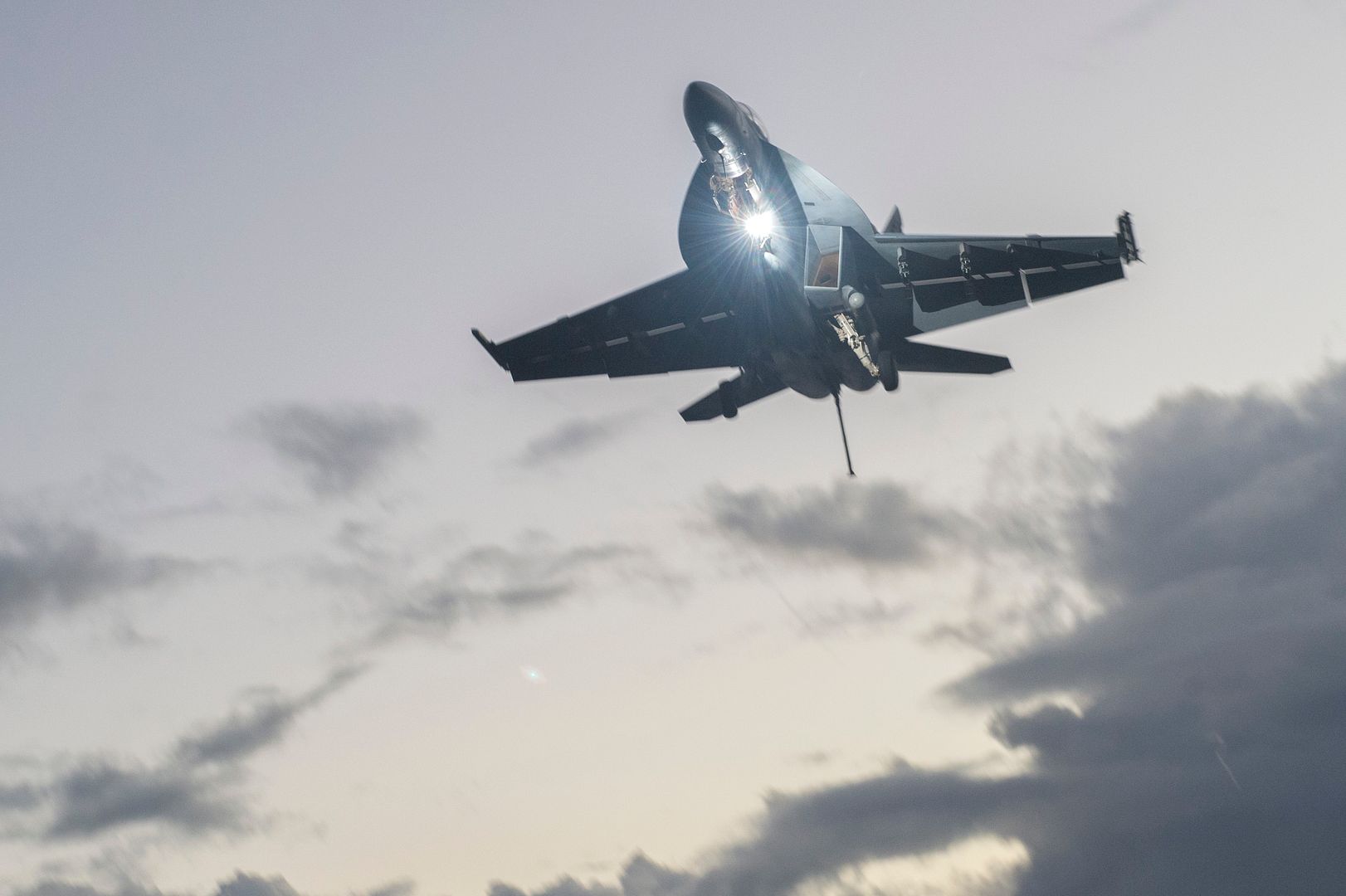
-
 Main AdminWESTERN PACIFIC (Nov. 12, 2017) The aircraft carriers USS Ronald Reagan (CVN 76), USS Theodore Roosevelt (CVN 71) and USS Nimitz (CVN 68) and their strike groups are underway, conducting operations, in international waters as part of a three-carrier strike force exercise. The U.S. Navy has patrolled the Indo-Asia Pacific region routinely for more than 70 years promoting regional security, stability and prosperity. (U.S. Navy photo by Lt. j.g. James Griffin/Released)
Main AdminWESTERN PACIFIC (Nov. 12, 2017) The aircraft carriers USS Ronald Reagan (CVN 76), USS Theodore Roosevelt (CVN 71) and USS Nimitz (CVN 68) and their strike groups are underway, conducting operations, in international waters as part of a three-carrier strike force exercise. The U.S. Navy has patrolled the Indo-Asia Pacific region routinely for more than 70 years promoting regional security, stability and prosperity. (U.S. Navy photo by Lt. j.g. James Griffin/Released)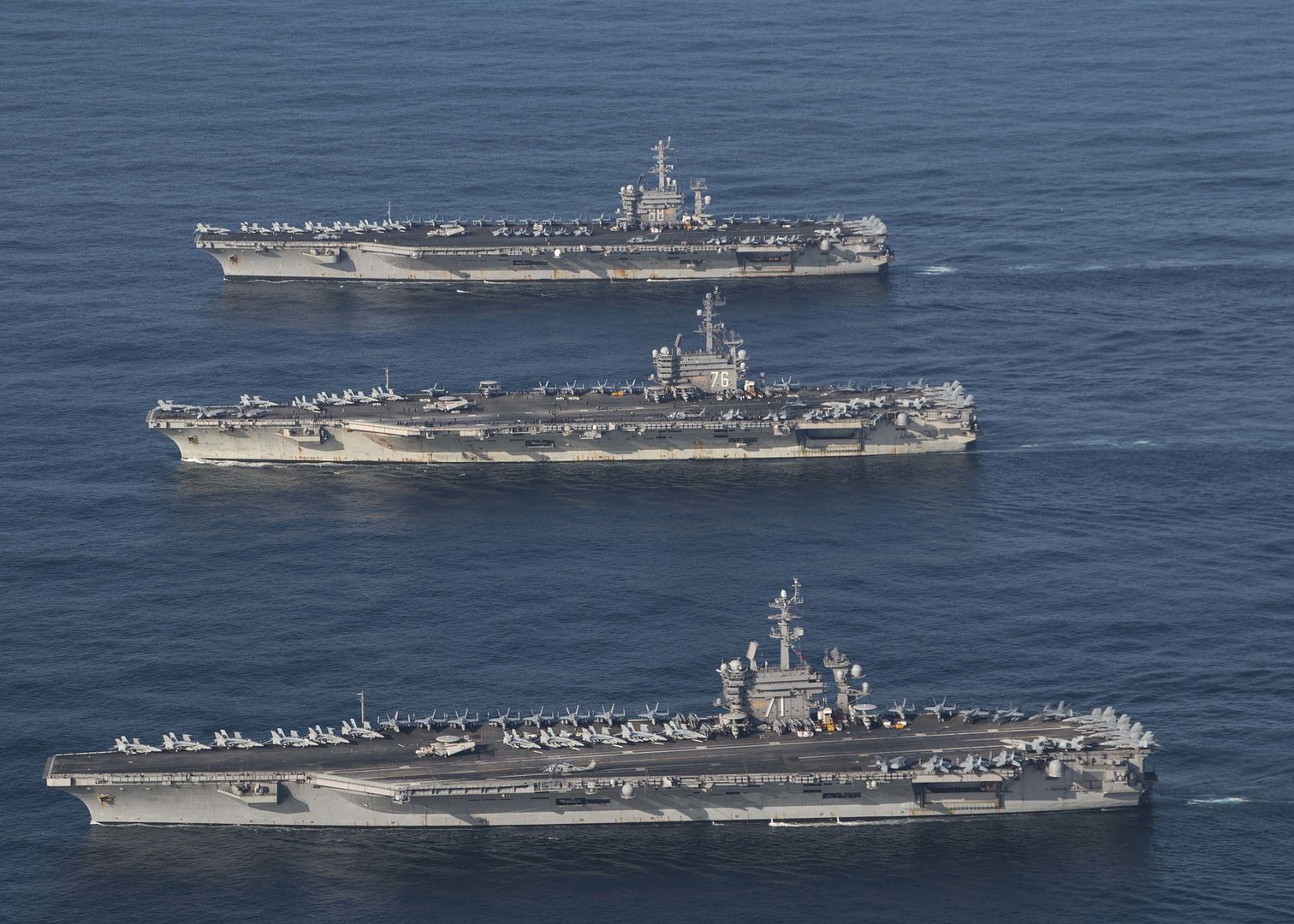
WESTERN PACIFIC (Nov. 12, 2017) Three F/A-18E Super Hornets, assigned to the Eagles of Strike Fighter Attack Squadron (VFA) 115, fly in formation over the aircraft carriers USS Ronald Reagan (CVN 76), USS Theodore Roosevelt (CVN 71), USS Nimitz (CVN 68) and their strike groups along with ships from the Republic of Korea Navy as they transit the Western Pacific. The strike groups are underway and conducting operations in international waters as part of a three-carrier strike force exercise. The U.S. Navy has patrolled the Indo-Asia Pacific region routinely for more than 70 years promoting regional security, stability and prosperity. (U.S. Navy photo by Lt. Aaron B. Hicks/Released)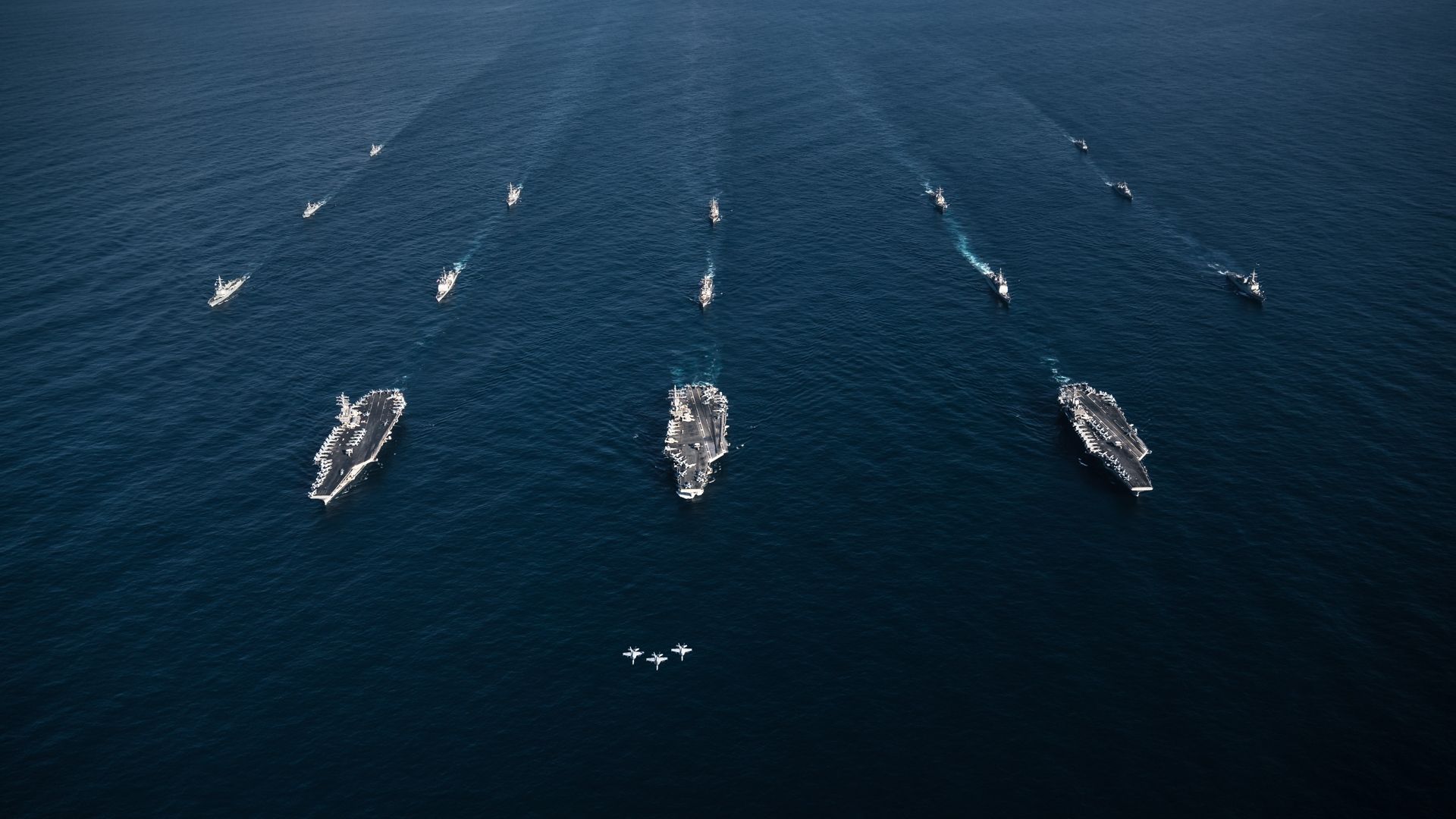
Two U.S. Air Force B-l B Lancers assigned to the 37th Expeditionary Bomb Squadron, deployed from Ellsworth Air Force Base, South Dakota, along with U.S. Navy F/A-18 Hornet fighter jets, perform a flyover of the USS Ronald Reagan (CVN 76), USS Nimitz (CVN 68), and USS Theodore Roosevelt (CVN 71) Carrier Strike Groups in the Western Pacific, Nov. 11, 2017. Joint missions provide units the opportunity to improve service-to-service interoperability and advanced combat capabilities, while demonstrating the U.S. commitment to peace and security in the Indo-Asia-Pacific region. (U.S. Navy photo by Lt. j.g. James Griffin)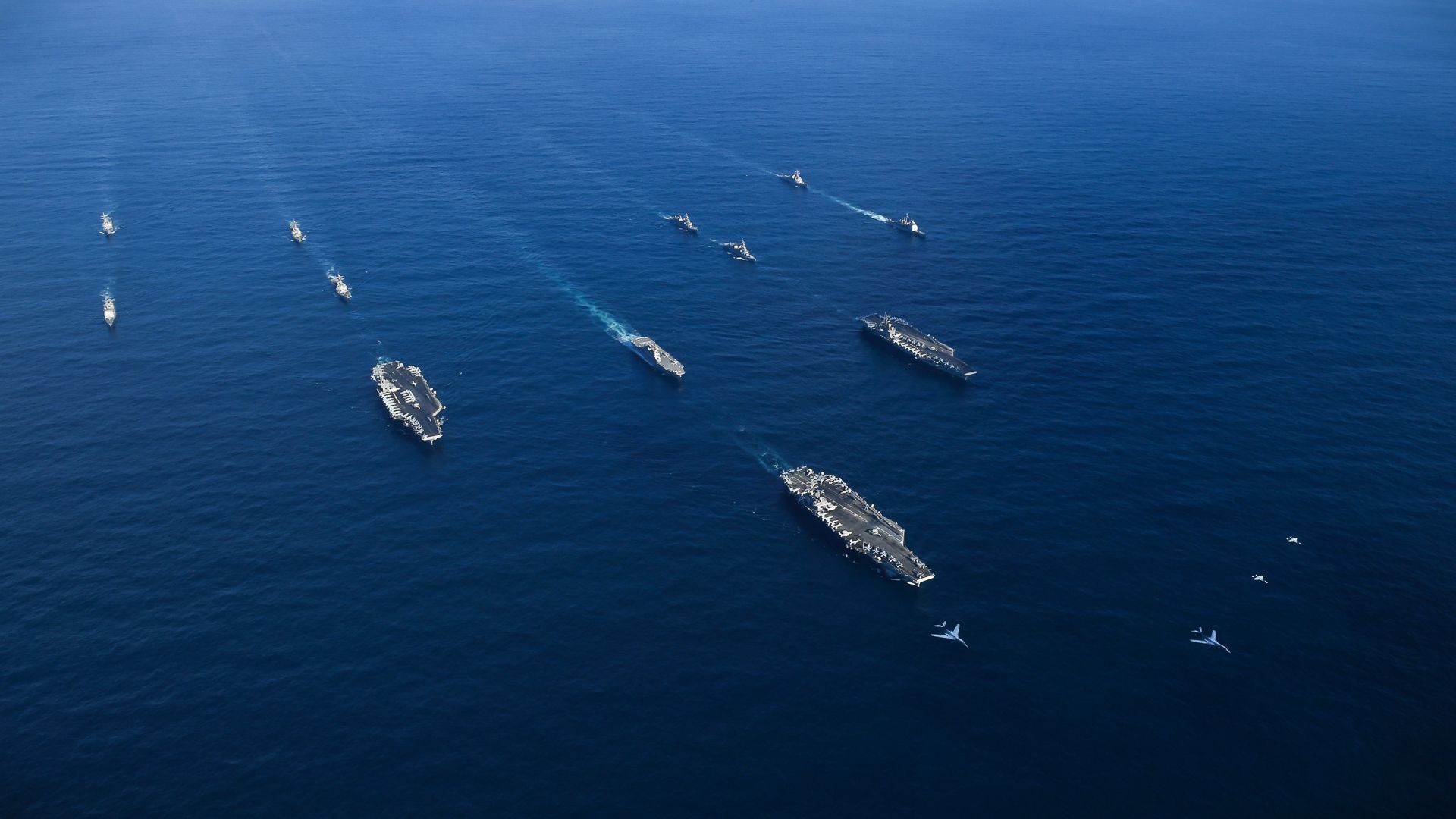
WESTERN PACIFIC (Nov. 11, 2017) An F/A-18E Super Hornet of Strike Fighter Squadron (VFA) 115 launches from the flight deck of the Navy's forward-deployed aircraft carrier, USS Ronald Reagan (CVN 76) in the western Pacific Ocean. Aircraft carriers Ronald Reagan, Theodore Roosevelt and Nimitz strike groups are underway conducting flight operations in international waters as part of a three-carrier strike force exercise. The U.S. Pacific Fleet has patrolled the Indo-Pacific region routinely for more than 70 years promoting regional security, stability and prosperity. (U.S. Navy photo by Mass Communication Specialist 2nd Class Janweb B. Lagazo/Released)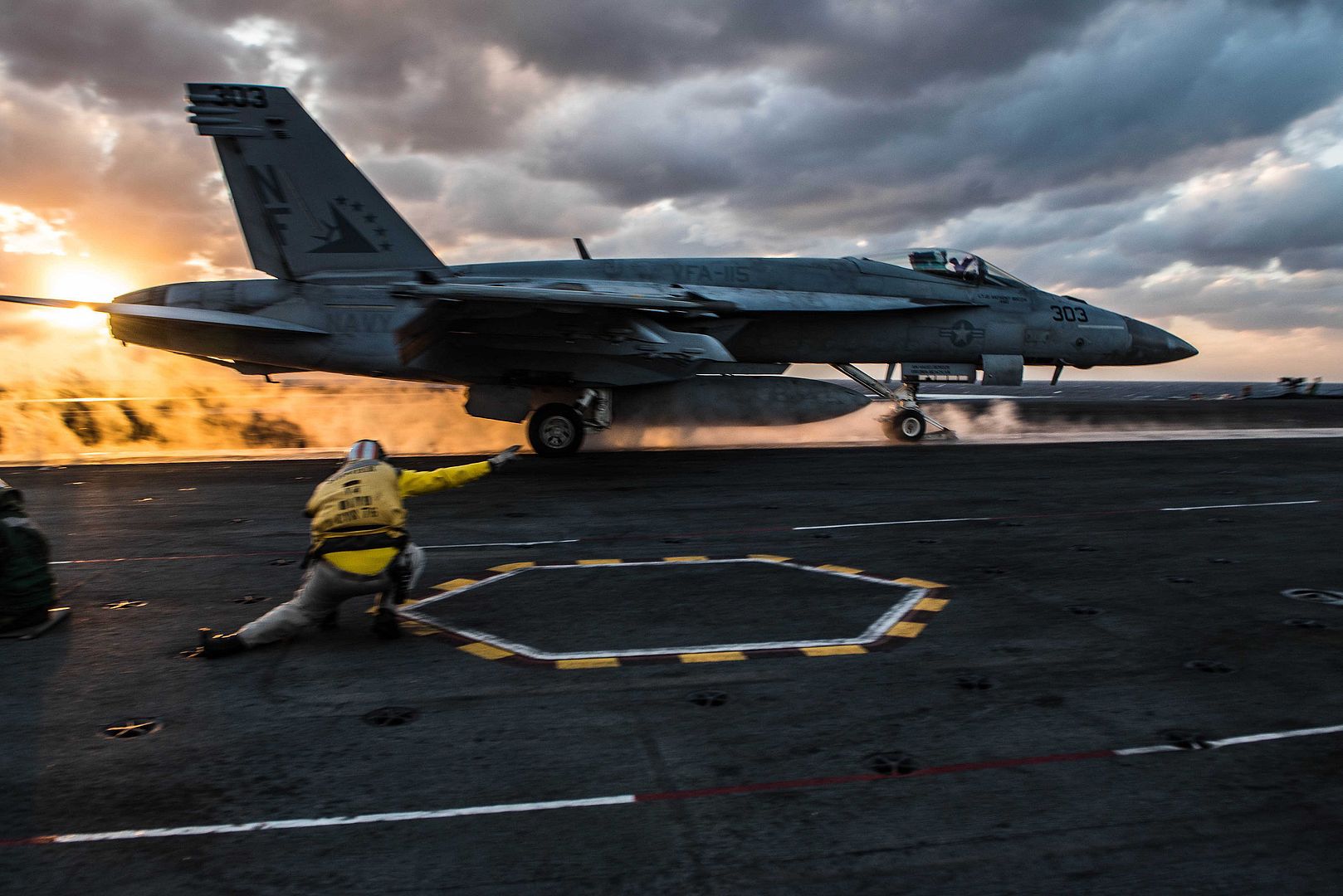
-
 Main AdminATLANTIC OCEAN (Nov. 13, 2017) The sun rises over AV-8B Harrier II jets attached to Marine Medium Tiltrotor Squadron 162 on the flight deck of the amphibious assault ship USS Iwo Jima (LHD 7). Iwo Jima, components of the Iwo Jima Amphibious Ready Group and the 26th Marine Expeditionary Unit are conducting a Combined Composite Training Unit Exercise that is the culmination of training for the Navy-Marine Corps team and will certify them for deployment. (U.S. Navy photo by Mass Communication 3rd Class Daniel C. Coxwest/Released)
Main AdminATLANTIC OCEAN (Nov. 13, 2017) The sun rises over AV-8B Harrier II jets attached to Marine Medium Tiltrotor Squadron 162 on the flight deck of the amphibious assault ship USS Iwo Jima (LHD 7). Iwo Jima, components of the Iwo Jima Amphibious Ready Group and the 26th Marine Expeditionary Unit are conducting a Combined Composite Training Unit Exercise that is the culmination of training for the Navy-Marine Corps team and will certify them for deployment. (U.S. Navy photo by Mass Communication 3rd Class Daniel C. Coxwest/Released)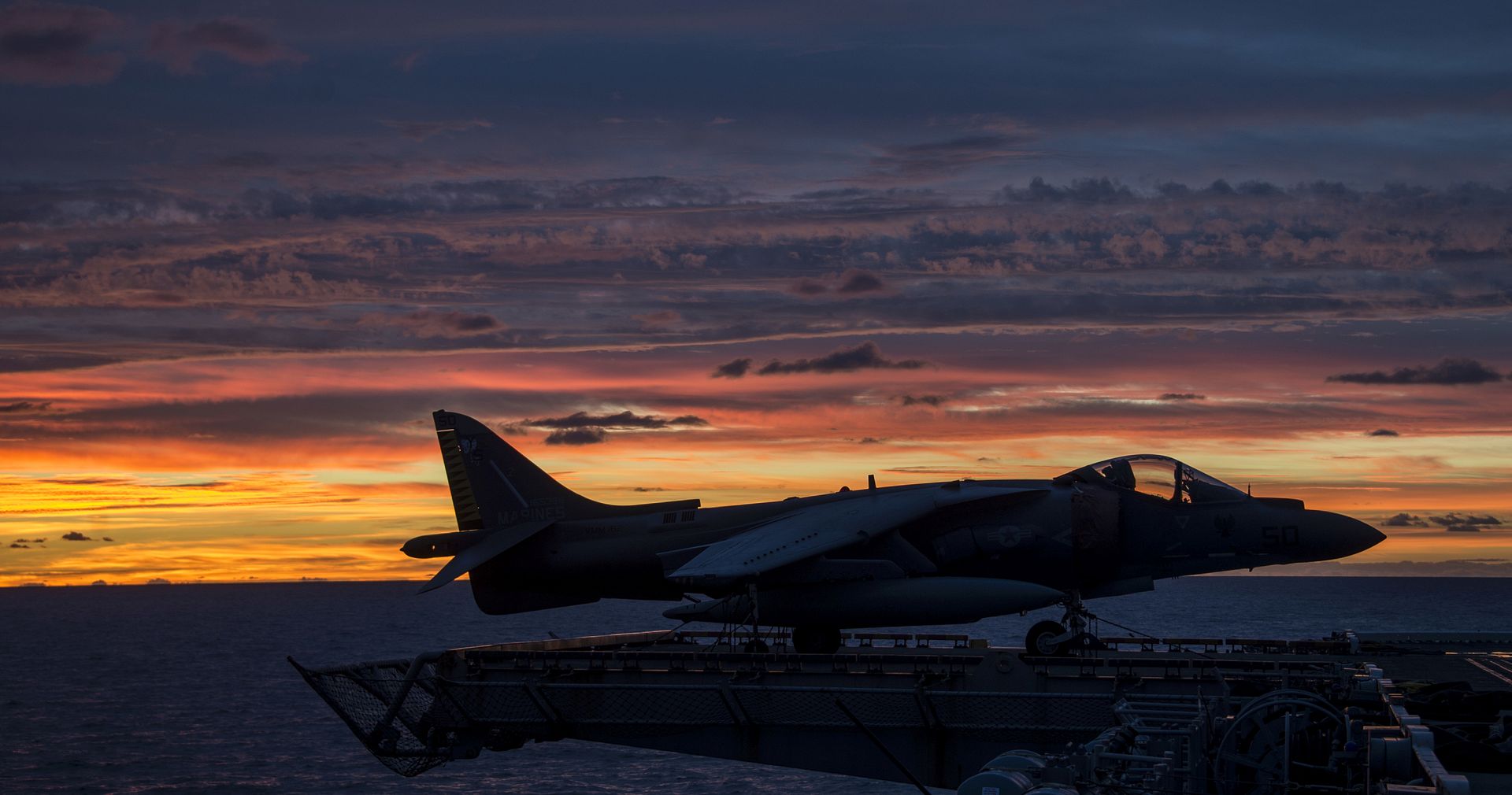
A U.S. Air Force B-1B Lancer assigned to the 37th Expeditionary Bomb Squadron, deployed from Ellsworth Air Force Base, South Dakota, takes off from Andersen AFB, Guam for a mission flying in the Western Pacific, Nov. 13. Two bombers integrated with F-16 Fighting Falcons from Misawa Air Base, Japan and Osan AB, Republic of Korea, and two KC-135s from Andersen AFB, Guam, and performed a flyover of the USS Ronald Reagan (CVN 76), USS Nimitz (CVN 68) and USS Theodore Roosevelt (CVN 71) Carrier Strike Groups during the training. (U.S. Air Force photo's by Airman 1st Class Gerald R. Willis)
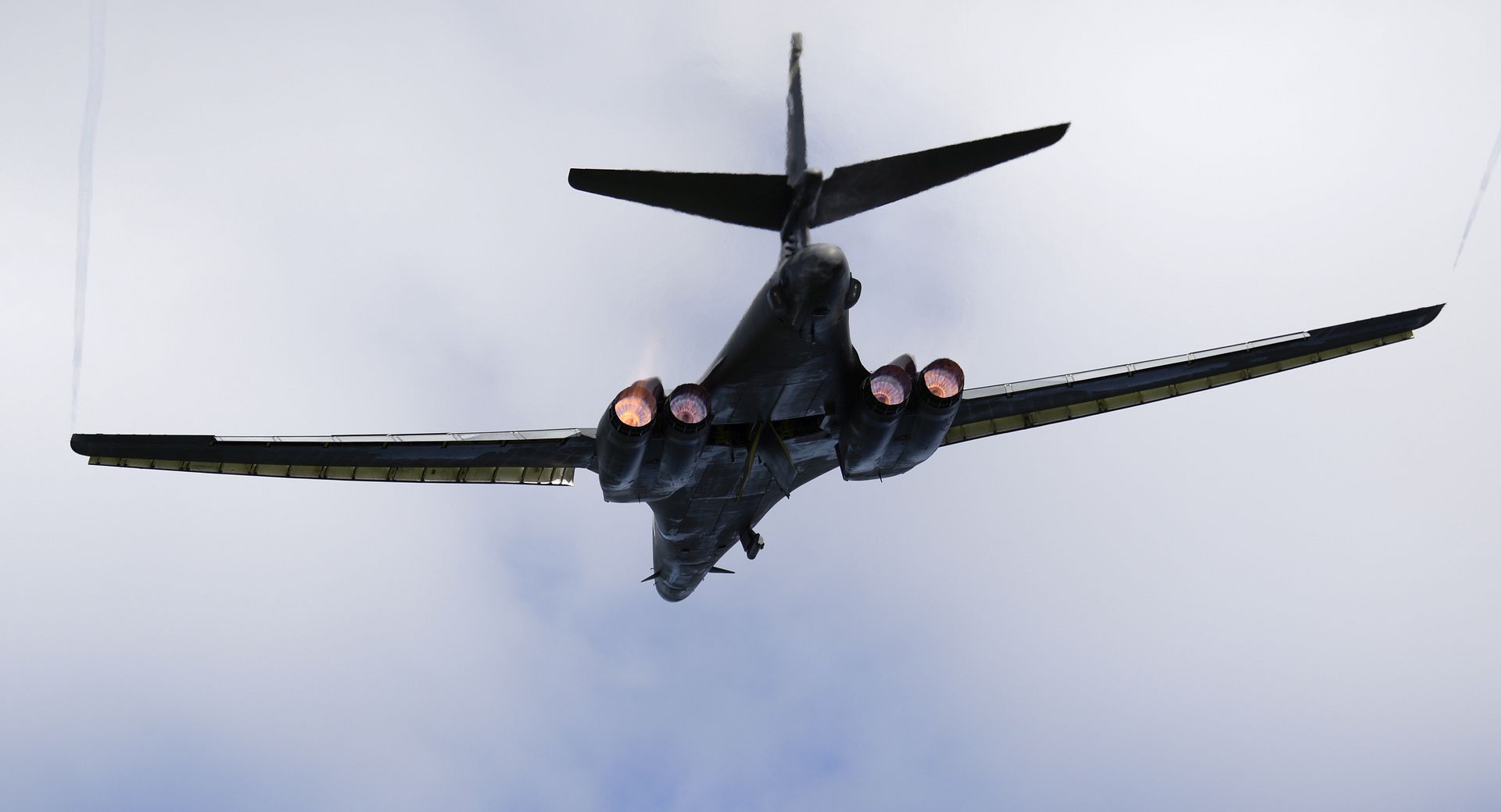
SAN DIEGO (Nov. 12, 2017)
An MH-60R Sea Hawk helicopter assigned to the "Blue Hawks" of Helicopter Maritime Strike Squadron (HSM) 78 flies over San Diego Bay while conducting training near the Nimitz-class aircraft carrier USS Carl Vinson (CVN 70). Members of Carrier Strike Group (CSG) 1 are participating in a sustainment training exercise in preparation for an upcoming deployment. U.S. Navy photo by Mass Communication Specialist 2nd Class Sean M. Castellano (Released)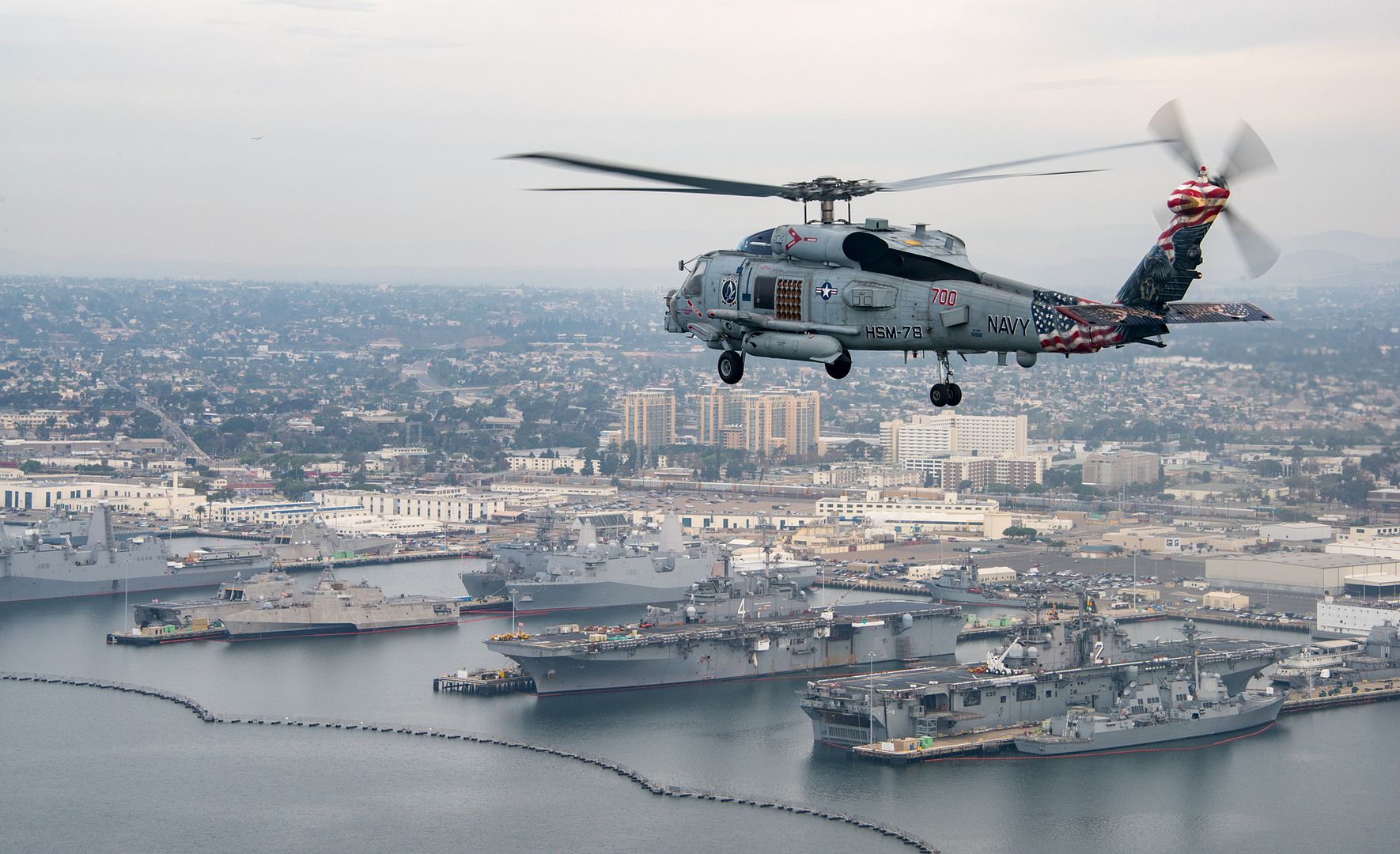
PACIFIC OCEAN (Nov. 8, 2017) An F/A-18F Super Hornet assigned to the "Bounty Hunters" of Strike Fighter (VFA) 2 prepares to launch from the flight deck of the Nimitz-class aircraft carrier USS Carl Vinson (CVN 70). Carl Vinson is participating in a sustainment training exercise in preparation for an upcoming deployment. (U.S. Navy photo by Mass Communication Specialist 3rd Class Jake Cannady/Released)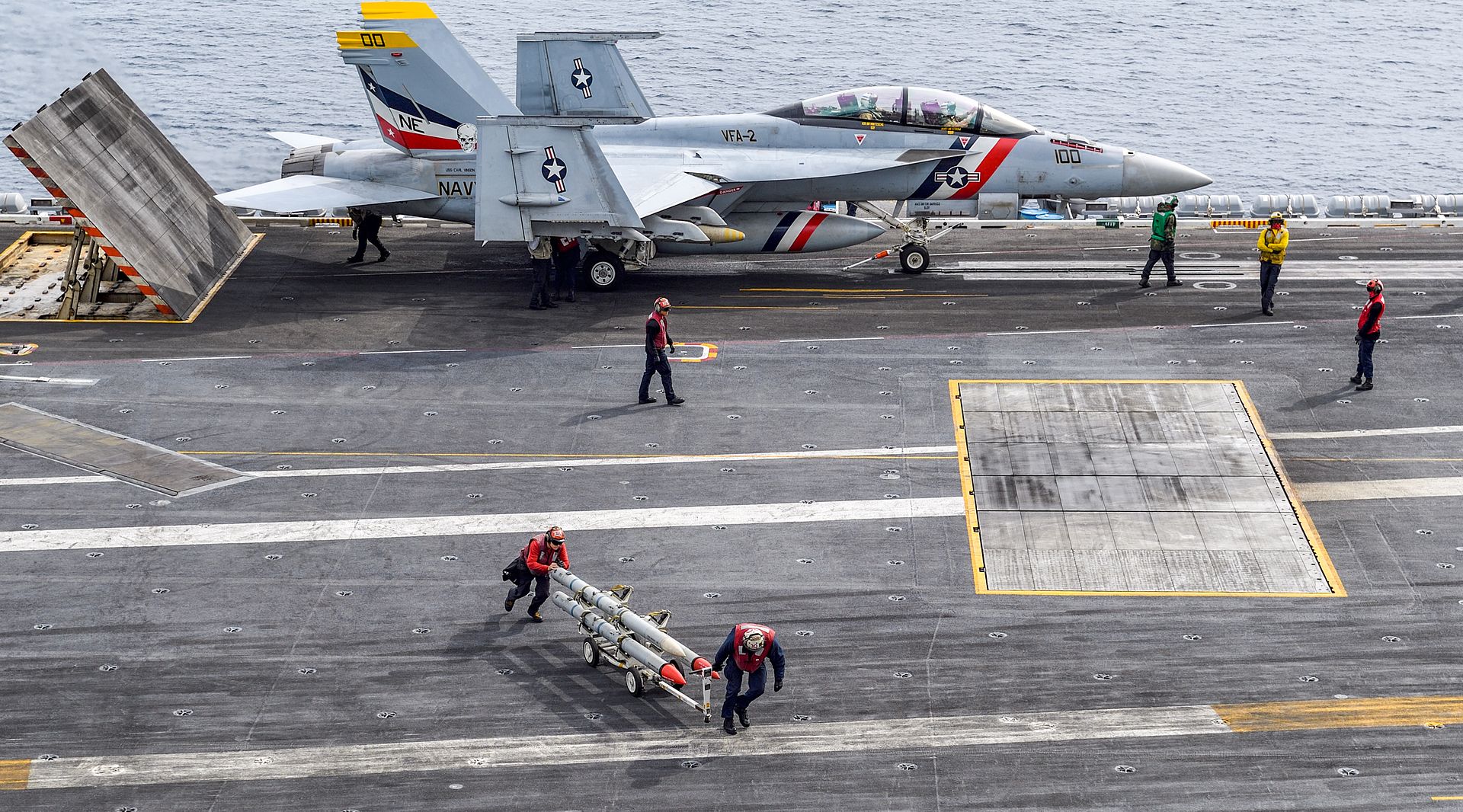
STRATFORD, Conn., Nov. 14, 2017 /PRNewswire/ -- Mexico's Directorate General of Civil Aeronautics (DGAC) approved the Offshore and Utility Type Certificate for the Sikorsky S-92? helicopter. The certificate enables the operation of S-92 helicopters in Mexico, in all production configurations including offshore oil and gas transportation, search and rescue, as well as regional airline passenger service and VIP transportation.
DGAC signed the certificate Nov. 6, capping an intensive three-year effort to introduce the S-92 helicopter manufactured by Sikorsky, a Lockheed Martin Company (NYSE: LMT), to Mexico.
"Sikorsky has been excited to watch the evolution of the offshore oil and gas industry in Mexico," said Sikorsky Vice President, Oil & Gas, David Martin. "As the industry expands into new territory, safe and reliable offshore transportation will ensure they remain on schedule and on budget. With this new certification of the S-92 aircraft, operators and oil and gas companies can select a true heavy helicopter that has the proven reliability and safety to support their success."
"This moves us another step forward in our overall Latin America strategy," said Sikorsky Vice President, Latin America, Adam Schierholz. "The region has long had faith in Sikorsky products, specifically the Black Hawk. It's a natural progression, as oil markets expand in Mexico and Colombia, that the S-92 would start to play a prominent role in that sector."
The S-92 was certified in Colombia in November 2016.
Sikorsky has delivered nearly 300 S-92 helicopters since 2004. With a best-in-class safety record and industry-leading dispatch availability, the multi-mission S-92 aircraft is the preferred aircraft of its size class for offshore oil worker transportation. These helicopters also perform search and rescue missions, head of state missions, and a variety of transportation missions for utility and airline passengers.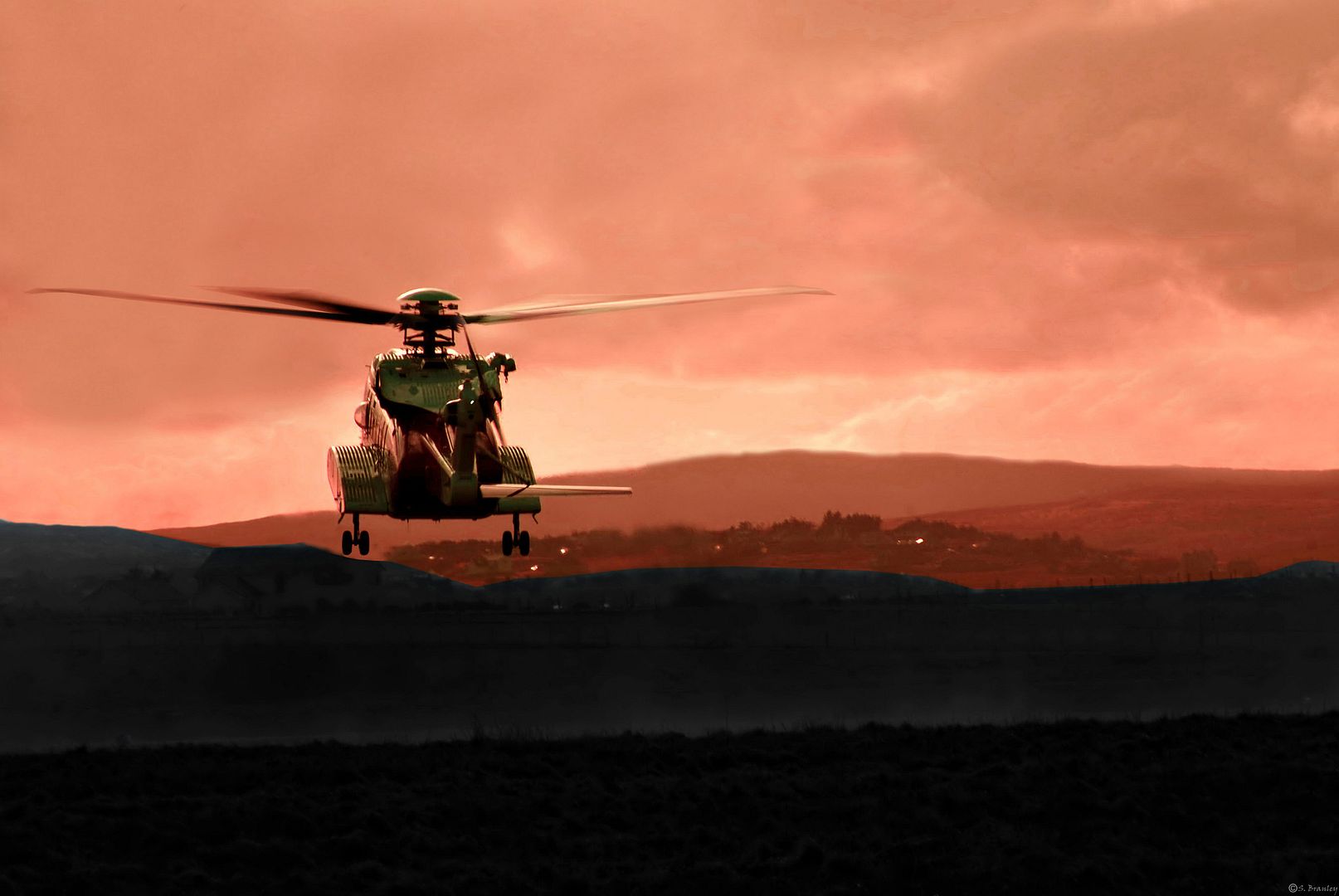
Naval Base Ventura County, Calif. ? Nov. 10, 2017 ? Northrop Grumman Corp. (NYSE: NOC) delivered the first operational MQ-4C Triton aircraft to the U.S. Navy facility at Point Mugu, providing the service with unparalleled endurance and 360 degree coverage that allows for a vastly expanded maritime intelligence, surveillance and reconnaissance (ISR) mission.
?This aircraft represents the beginning of a new era for Naval aviation,? said Doug Shaffer, vice president, Triton programs, Northrop Grumman. ?Triton is a high-altitude, long-endurance unmanned system that delivers a critical autonomous capability to the Navy, expanding the service?s maritime patrol mission. We are proud to be a part of this historic program.?
Northrop Grumman is expected to deliver the second operational Triton aircraft later this year. Naval Base Ventura County Point Mugu is home to the maintenance detachment of Unmanned Patrol Squadron (VUP)19. Maintainers will prepare the first two operational Triton aircraft for its employment to Guam, scheduled next year. VUP-19, the Navy?s first unmanned patrol squadron, is based at Naval Air Station Jacksonville, Florida. Pilots and operators will fly the unmanned Triton aircraft from NAS Jacksonville.
The Navy has announced plans to deploy Triton to NAS Mayport, Florida, NAS Sigonella, Italy and the Middle East in the future.
Flying upwards of 55,000 feet for up to 24 hours at a time, Triton provides unprecedented, persistent 360 degree maritime domain awareness through vessel detection, classification and tracking. Triton aircraft can combine to fly an orbit, with one plane on station and another en route, providing the Navy with near-constant coverage of huge swaths of ocean and littorals. The program of record ultimately calls for Northrop Grumman to deliver 68 aircraft to the Navy.
PHILADELPHIA, Nov. 14, 2017 ? Boeing [NYSE: BA] and Bell Helicopter Textron Inc. [NYSE: TXT] company announced today the Bell Boeing V-22 fleet of tiltrotor aircraft, including both CV-22 and MV-22 variants, has surpassed the 400,000 flight hour milestone.
The V-22 Osprey has been continuously deployed since entering service in 2007 with the United States Marine Corps (USMC) and the Air Force Special Operations Command (AFSOC) in 2009. The aircraft has seen extensive action in Afghanistan as part of Operation Enduring Freedom, in Iraq as part of Operation Iraqi Freedom, and as part of a U.S. Central Command (USCENTCOM) Special Purpose Marine Air Ground Task Force (SPMAGTF) supporting a long-range rapid reaction/crisis response force.
?As the number of flight hours indicate, the V-22 Osprey is a mature platform that projects a versatile mission capability for military operations as well as humanitarian relief efforts,? said U.S. Marine Corps Col. Matthew Kelly, V-22 Joint Program manager.
MV-22B Osprey are operating around the globe today, transforming the way the USMC conducts assault support, humanitarian relief operations and the broad spectrum of SPMAGTF missions.
The Bell Boeing V-22 is continuing to achieve outstanding mission success, performing missions only capable with tiltrotor technology. Since entering service, the V-22 has been deployed in numerous missions around the world, including casualty evacuation, tactical recovery of aircraft and personnel, humanitarian assistance/disaster relief, resupply, VIP transport, and theater security cooperation.
?The versatile V-22 Osprey is in demand and indispensable among commanders worldwide,? said Kristin Houston, vice president, Boeing Tiltrotor Programs and deputy director, Bell Boeing V-22 Program. ?In order to improve readiness for our servicemen and women, we are significantly investing for the long term through modifications and upgrades to our V-22 factory in Philadelphia. Together with Bell Helicopter, we are proud of achieving this flight hour milestone. Our strategic alliance enables the continued success of this program.?
?This 400,000-flight hour milestone is an incredible testament to the V-22?s leap-ahead capability and is a tribute to the men and women of Bell Helicopter and Boeing who build and support tiltrotor aircraft,? said Vince Tobin, executive vice president of Military Programs at Bell Helicopter. ?The Osprey brings unprecedented range, speed and survivability to the warfighter and will continue to excel in combat and in executing some of the most difficult humanitarian operations.?
The Bell Boeing V-22 Osprey is a joint-service, multirole combat aircraft that uses tiltrotor technology to combine the vertical performance of a helicopter with the speed and range of a fixed-wing aircraft. With its nacelles and rotors in vertical position, it can take off, land and hover like a helicopter. Once airborne, its nacelles can be rotated to transition the aircraft to a turboprop airplane capable of high-speed, high-altitude flight.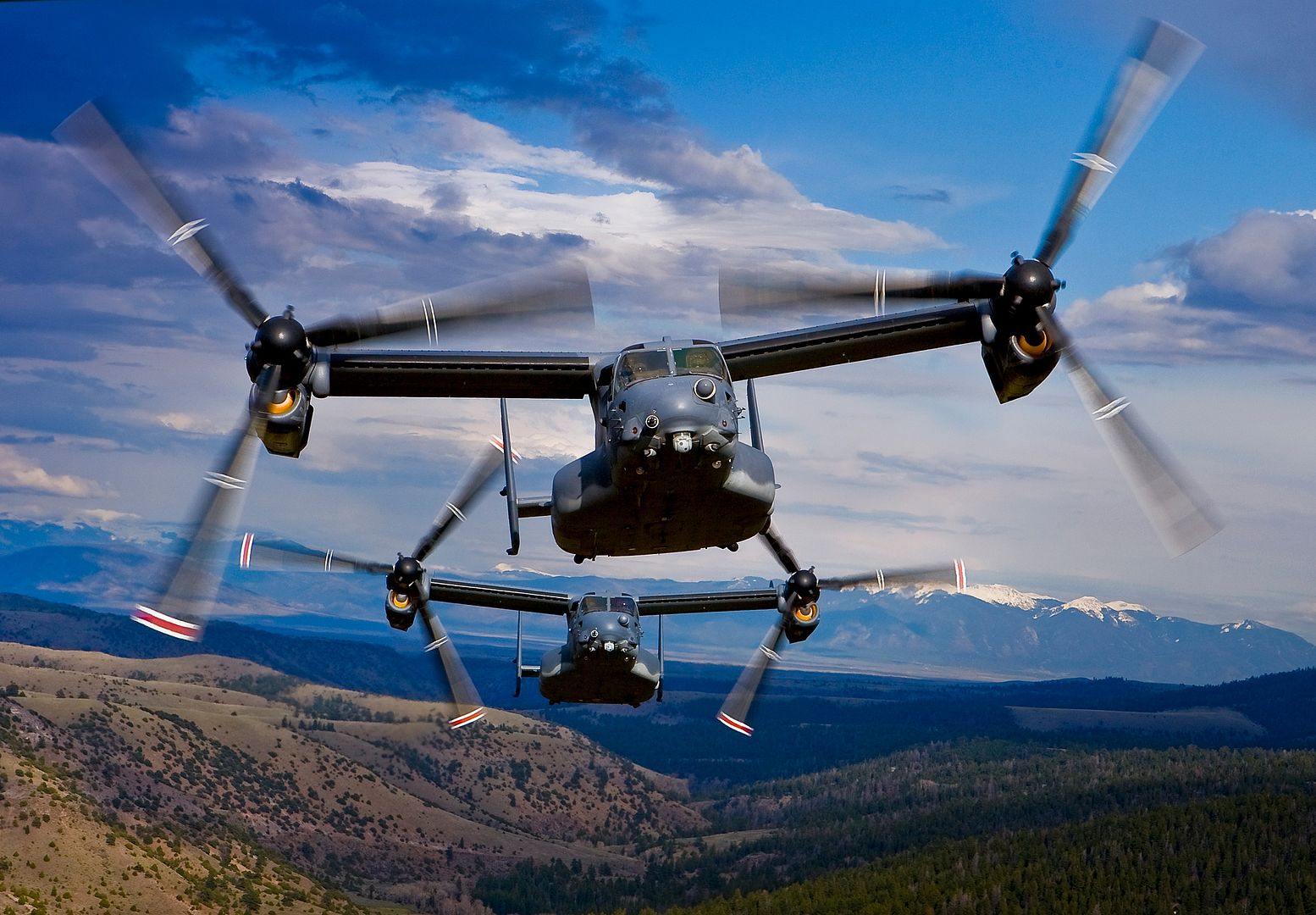
November 14, 2017 Montr?al Commercial Aircraft, Press Release
Bombardier Commercial Aircraft announced today, from the Dubai Airshow, that it has signed a letter of intent (LOI) for up to 24 CS300 aircraft with EgyptAir Holding Company, of Cairo. This includes 12 CS300 aircraft with purchase rights for an additional 12 aircraft.
?Based on the list price of the CS300 airliner, a firm-order contract would be valued at approximately $1.1 billion US. Should EgyptAir also exercise the 12 purchase rights for CS300 aircraft, the contract value would increase to nearly $2.2 billion US.
n the presence of His Excellency Minister of Civil Aviation of Egypt Mr. Sherif Fathi, a press conference was held at the Dubai Airshow where Safwat Musallam, Chairman and CEO of EgyptAir Holding Company and Fred Cromer, President, Bombardier Commercial Aircraft celebrated the signature of the letter of intent, which opens a new chapter in the relationship between the two companies.
?It is our pleasure to have this new partnership with Bombardier, which came as a continuation of our fleet modernization strategy. We undertook a thorough evaluation process of our fleet and realized that the CS300 would fit perfectly into our business plans and growth strategy,? said Safwat Musallam.
?We selected the C Series aircraft because its excellent range will allow us to best serve domestic and regional destinations, including neighboring Arab cities, the Middle East as well as several European destinations. This is in addition to the CS300 aircraft?s exceptional economics and outstanding cabin. We look forward to expanding our network with the CS300 and we are happy to see that the partnership announced with Airbus will bring added support to the C Series program.?
?We?re thrilled that EgyptAir selected the CS300 aircraft to renew its fleet,? said Fred Cromer. ?Bombardier?s 20-year market outlook foresees demand for 450 airplanes in the 60- to 150-seat category for the region and this LOI confirms the need for right-sized aircraft in the Middle East. We are confident that our small single-aisle C Series is ideally-suited to serve the hot temperature environments of the region and will undoubtedly provide performance and economics that will drive higher profitability.?
About EgyptAir
EgyptAir is the national airline of Egypt, based in Cairo. It was established on May 7th, 1932 as the first airline in the Middle East and Africa and the seventh in the world to join IATA. EgyptAir network reaches more than 70 destinations to about 60 countries around the world to meet the needs of its customers. EgyptAir is a Star Alliance member since July 2008.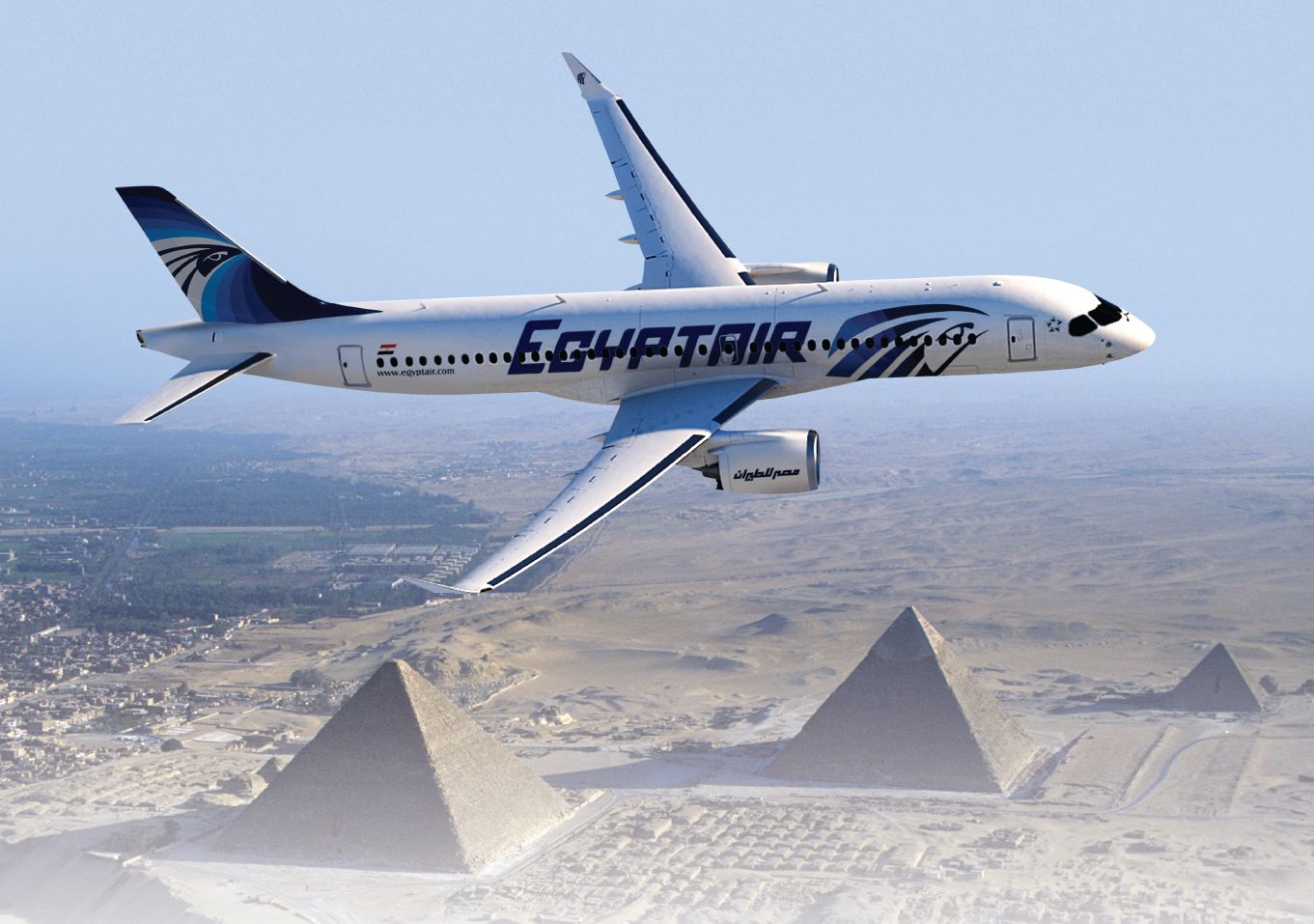
Leonardo?s M-346FA (Fighter Attack) makes its debut at the Dubai Airshow, one of the most important global defence and aerospace events, held from 12 to 16 November.
The M-346FA, for which several international air force?s have already demonstrated their interest, represents a further evolution ? after the AJT (Advanced Jet Trainer) for the advanced training of military pilots and the multi-role M-346FT (Fighter Trainer) ? of a family concept designed to create a common baseline, able to rapidly answer to the different requirements.
Thanks to the integration of the Grifo multi-mode fire control radar, designed and manufactured by Leonardo and already chosen by several customers in the world, the M-346FA offers advanced operational capabilities.
The M-346FA?s characteristics make it not only an excellent advanced trainer, but also a light fighter aircraft capable of carrying out operational missions at far lower costs than those of front-line fighters.
With seven pylons for external loads, the M-346FA is able to operate very effectively as multi-role tactical aircraft, capable of air-to-surface, air-to-air and tactical reconnaissance missions.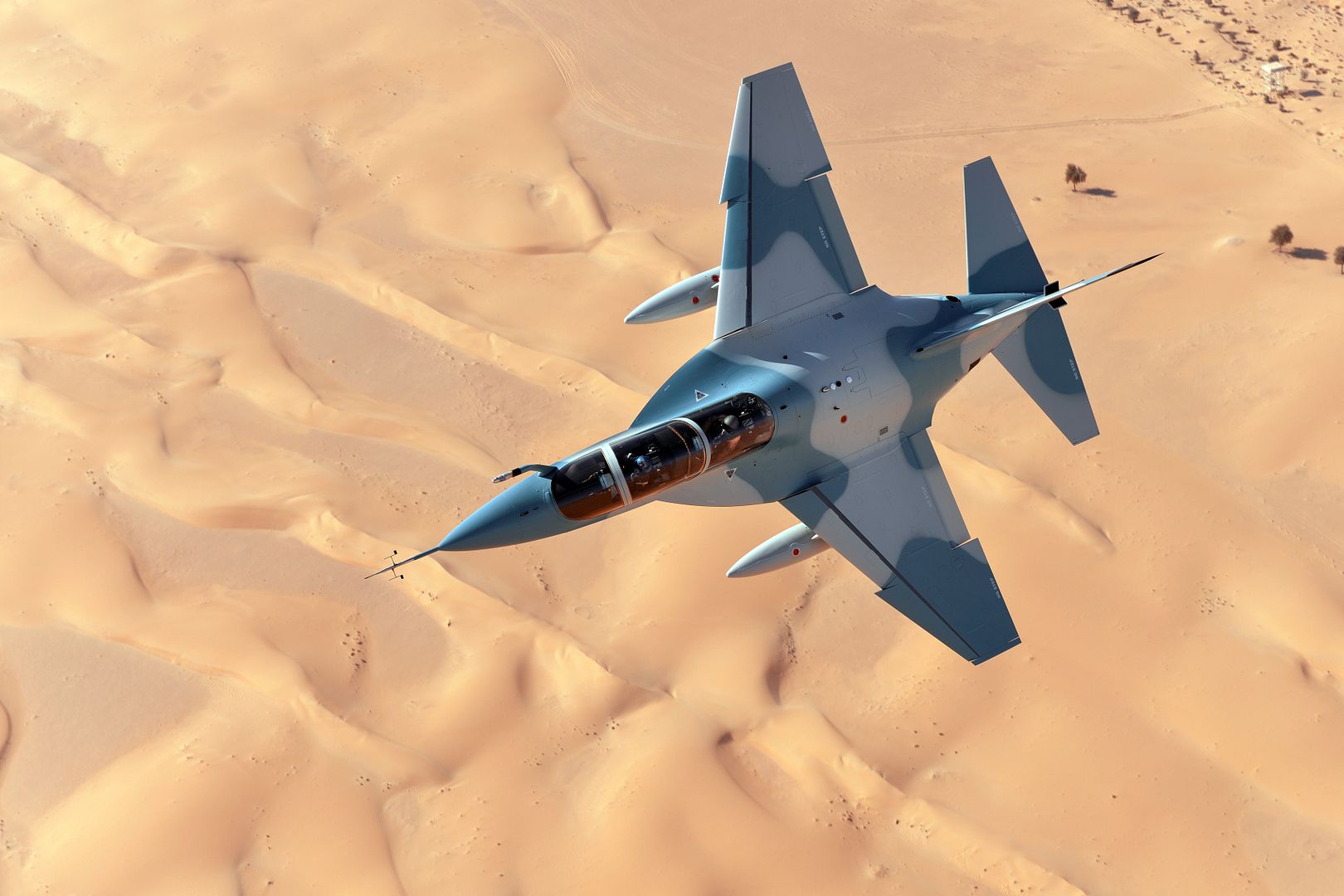
-
 Main AdminA U.S. Marine Corps F-35B Lightning II aircraft with Marine Fighter Attack Squadron (VMFA) 121 arrives at Marine Corps Air Station (MCAS) Iwakuni, Japan, Nov. 9, 2017. The remaining aircraft represent the last installment of F-35B Lightning IIs assigned to VMFA-121. The F-35B Lightning II is a fifth-generation fighter, which is the world?s first operational supersonic short takeoff and vertical landing aircraft. The F-35B brings strategic agility, operational flexibility and tactical supremacy to III MEF with a mission radius greater than that of the F/A-18 Hornet and AV-8B Harrier II in support of the U.S. ? Japan alliance. (U.S. Marine Corps photo/video by Sgt. N.W. Huertas)
Main AdminA U.S. Marine Corps F-35B Lightning II aircraft with Marine Fighter Attack Squadron (VMFA) 121 arrives at Marine Corps Air Station (MCAS) Iwakuni, Japan, Nov. 9, 2017. The remaining aircraft represent the last installment of F-35B Lightning IIs assigned to VMFA-121. The F-35B Lightning II is a fifth-generation fighter, which is the world?s first operational supersonic short takeoff and vertical landing aircraft. The F-35B brings strategic agility, operational flexibility and tactical supremacy to III MEF with a mission radius greater than that of the F/A-18 Hornet and AV-8B Harrier II in support of the U.S. ? Japan alliance. (U.S. Marine Corps photo/video by Sgt. N.W. Huertas)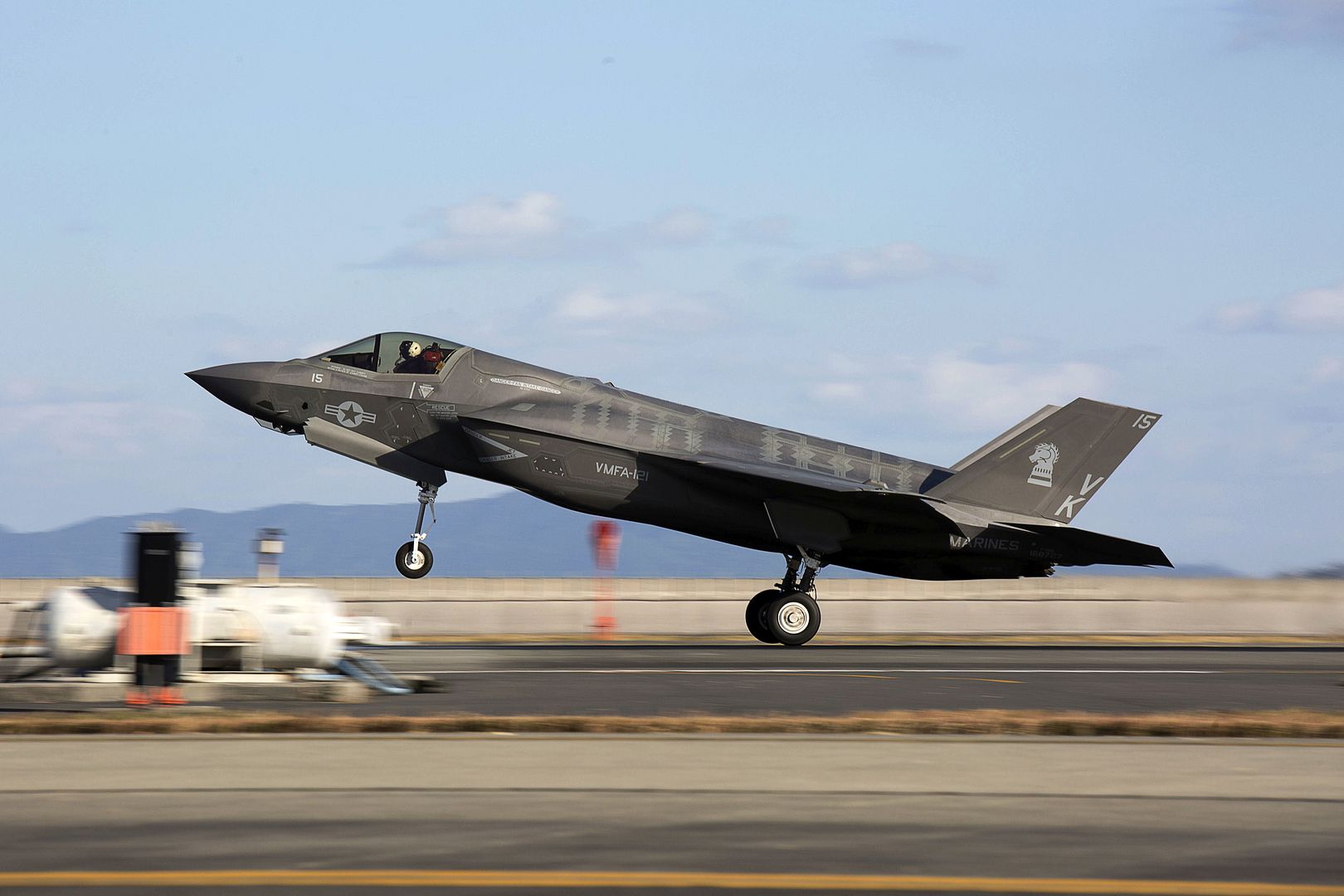
A U.S. Marine Corps F/A-18A Hornet assigned to Marine Fighter Attack Squadron 115 taxis on the flight line during Integrated Training Exercise (ITX) 1-18 aboard Marine Corps Air Ground Combat Center, Twentynine Palms, Calif., Nov. 11, 2017. ITX is a large-scale, combined-arms training exercise intended to produce combat-ready forces capable of operating as an integrated Marine Air Ground Task Force. (U.S. Marine Corps photo by Staff Sgt. Kowshon Ye)
U.S. Marines from Marine Medium Tiltrotor Squadron 161 (Rein) inspect an AV-8B Harrier II at Al Udeid Air Base, Qatar, on Nov. 9, 2017. The Harrier is known for its vertical / short take off and landing attack capability. VMM-161 is here to support Operation Inherent Resolve and Operation Freedom?s Sentinel. (U.S. Air National Guard photo by Master Sgt. Phil Speck)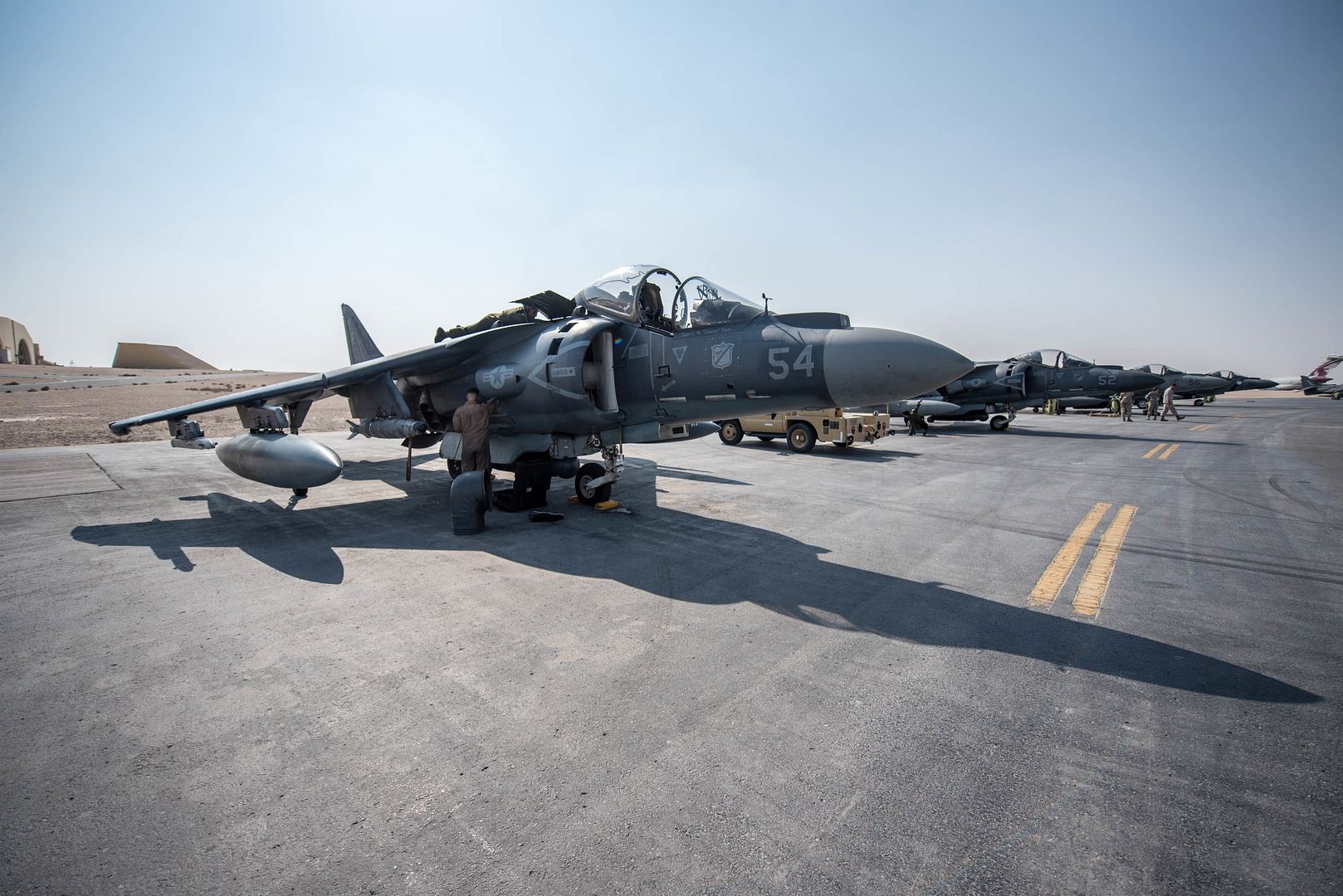
MISAWA AIR BASE, Japan --
A Defense Contract Management Agency government flight representative landed the first Japanese-made F-35A on Misawa AB's runway, Nov. 2.
Maj. Elijah Supper piloted the brand-new aircraft from the Mitsubishi Heavy Industries Komaki South F-35 Final Assembly and Check Out facility, and was quickly joined by two F-16 Fighting Falcons from the 115th Fighter Wing, Wisconsin National Guard, there to escort the new jet across the Pacific.
?This F-35 is one of the most clean and well-built aircraft I have ever seen,? Supper said. ?The Japanese take great pride in this aircraft and have ensured it?s made to the highest standard."
Although the aircraft is a Japanese Air Self-Dense Force-owned jet, it is required to go through final function tests in the United States to ensure all future F-35A's produced in Japan are up to standard.
To ensure the jet arrives securely in the United States, Supper stopped at here to undergo safety checks on the F-35A before flying across the ocean.
"After our final inspections, the JASDF will roll out the F-35 in their fleet," explained Supper. "This will only further enhance our strong bilateral ties, allowing us to win future wars.?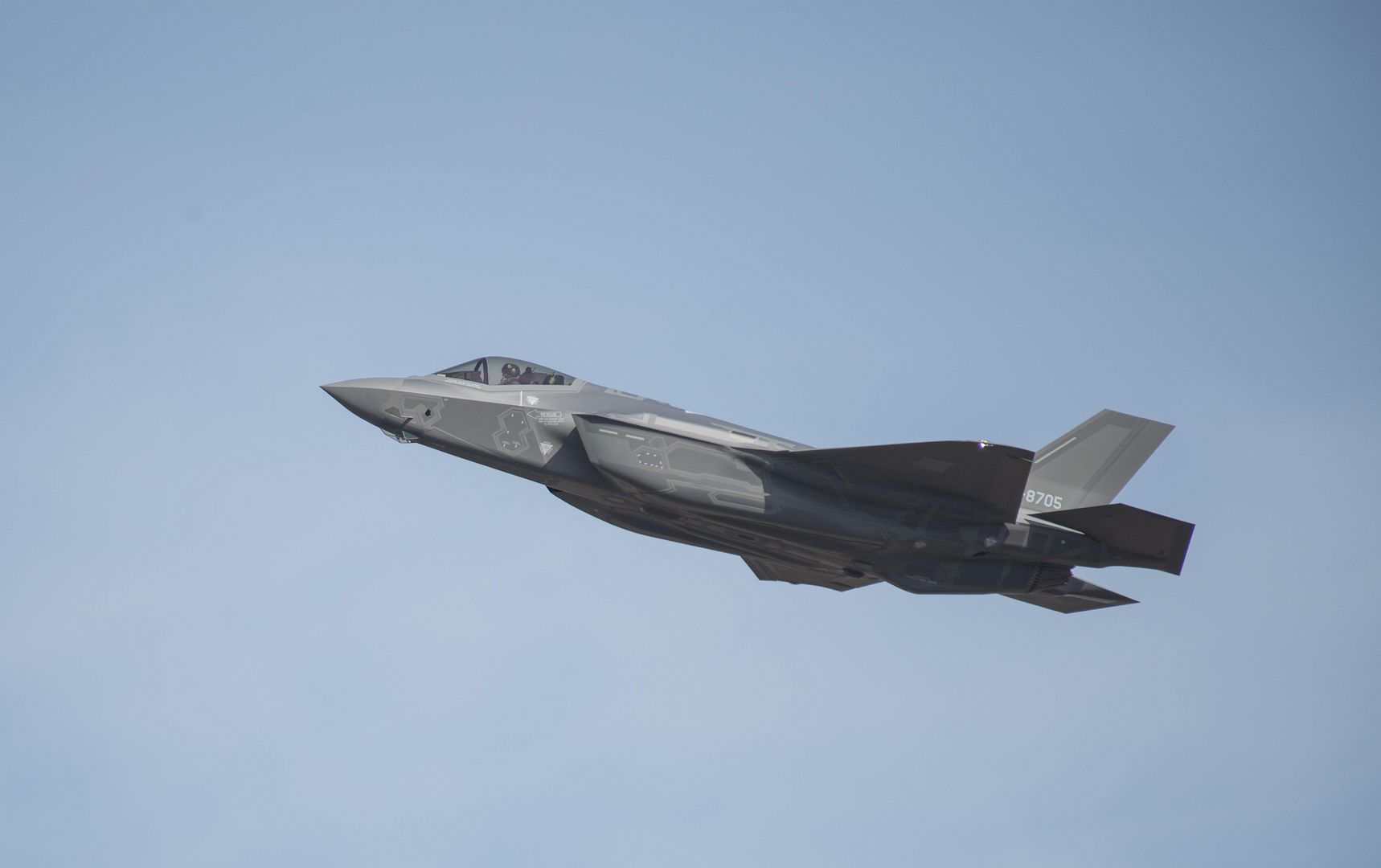
Dubai, 15 November 2017 ? The United Arab Emirates Air Force & Air Defence has ordered five Airbus C295 medium transport aircraft.
The agreement, announced at the Dubai Airshow, takes the C295 orderbook past 200, underlining the type?s market leadership in its class.
The aircraft will serve with the UAE Air Force replacing the existing CN235s still in operation. Deliveries will begin in the fourth quarter of 2018.
Orders for the C295 in the Middle East and North Africa (MENA) region now total 51. Bernhard Brenner, Airbus Defence and Space Head of Marketing & Sales said: ?The C295 is a tough and reliable aircraft that is thoroughly proven in the Middle East operating environment. Passing the milestone of 200 sales ? now 203 following this order ? is a clear demonstration of its widely recognized capabilities and excellent value. We look forward to placing many more C295s in this region and beyond.?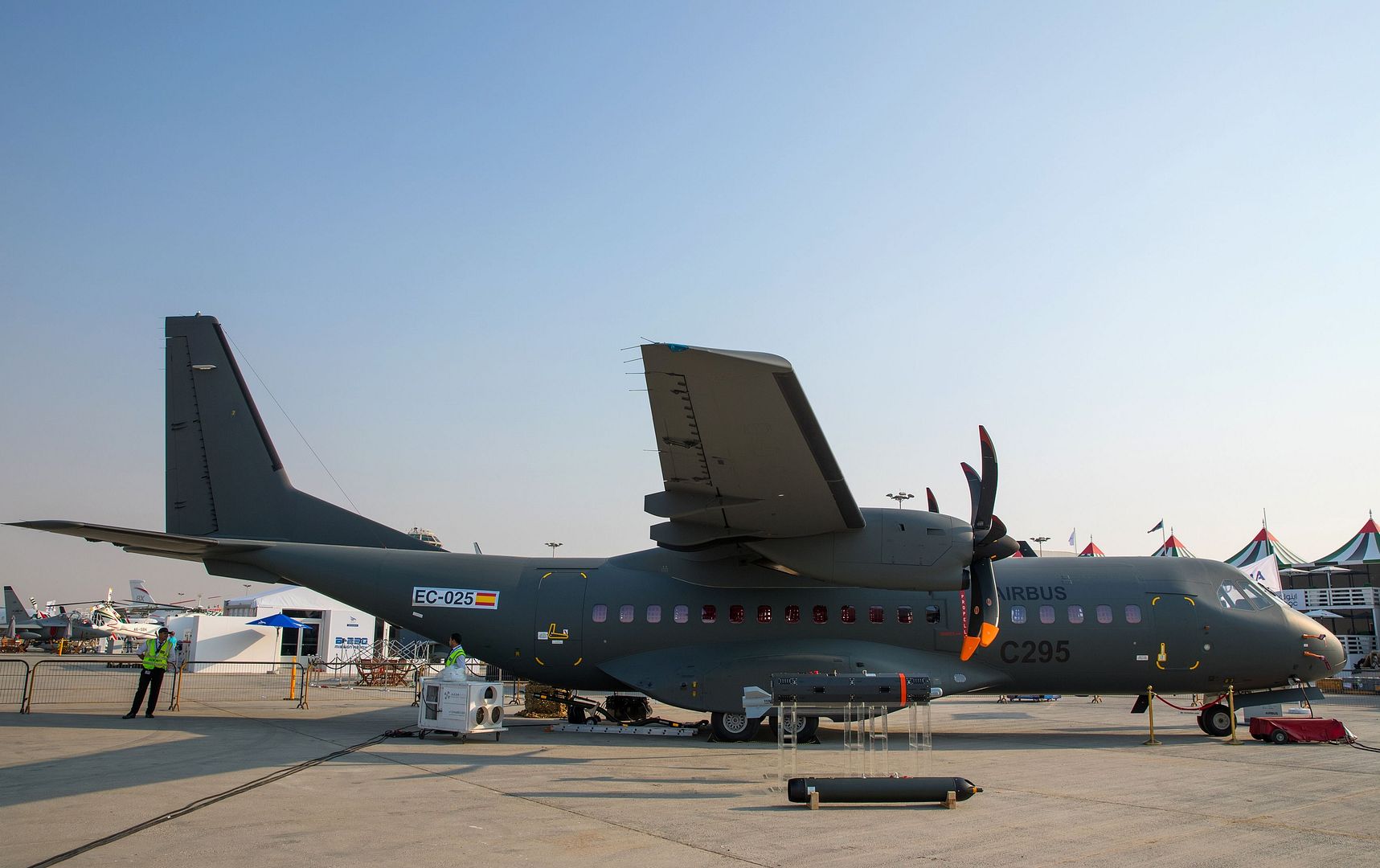
-
 Main AdminPACIFIC OCEAN (Nov. 15, 2017) An F/A-18C Hornet, assigned to the Checkerboards of Marine Strike Fighter Attack Squadron (VMFA) 312, prepares to land on the flight deck of the aircraft carrier USS Theodore Roosevelt (CVN 71). Theodore Roosevelt is deployed to the U.S. 7th Fleet area of operations in support of maritime security operations and theater security cooperation efforts. (U.S. Navy photo by Machinist Mate 3rd Class Andrew Langholf/Released)
Main AdminPACIFIC OCEAN (Nov. 15, 2017) An F/A-18C Hornet, assigned to the Checkerboards of Marine Strike Fighter Attack Squadron (VMFA) 312, prepares to land on the flight deck of the aircraft carrier USS Theodore Roosevelt (CVN 71). Theodore Roosevelt is deployed to the U.S. 7th Fleet area of operations in support of maritime security operations and theater security cooperation efforts. (U.S. Navy photo by Machinist Mate 3rd Class Andrew Langholf/Released)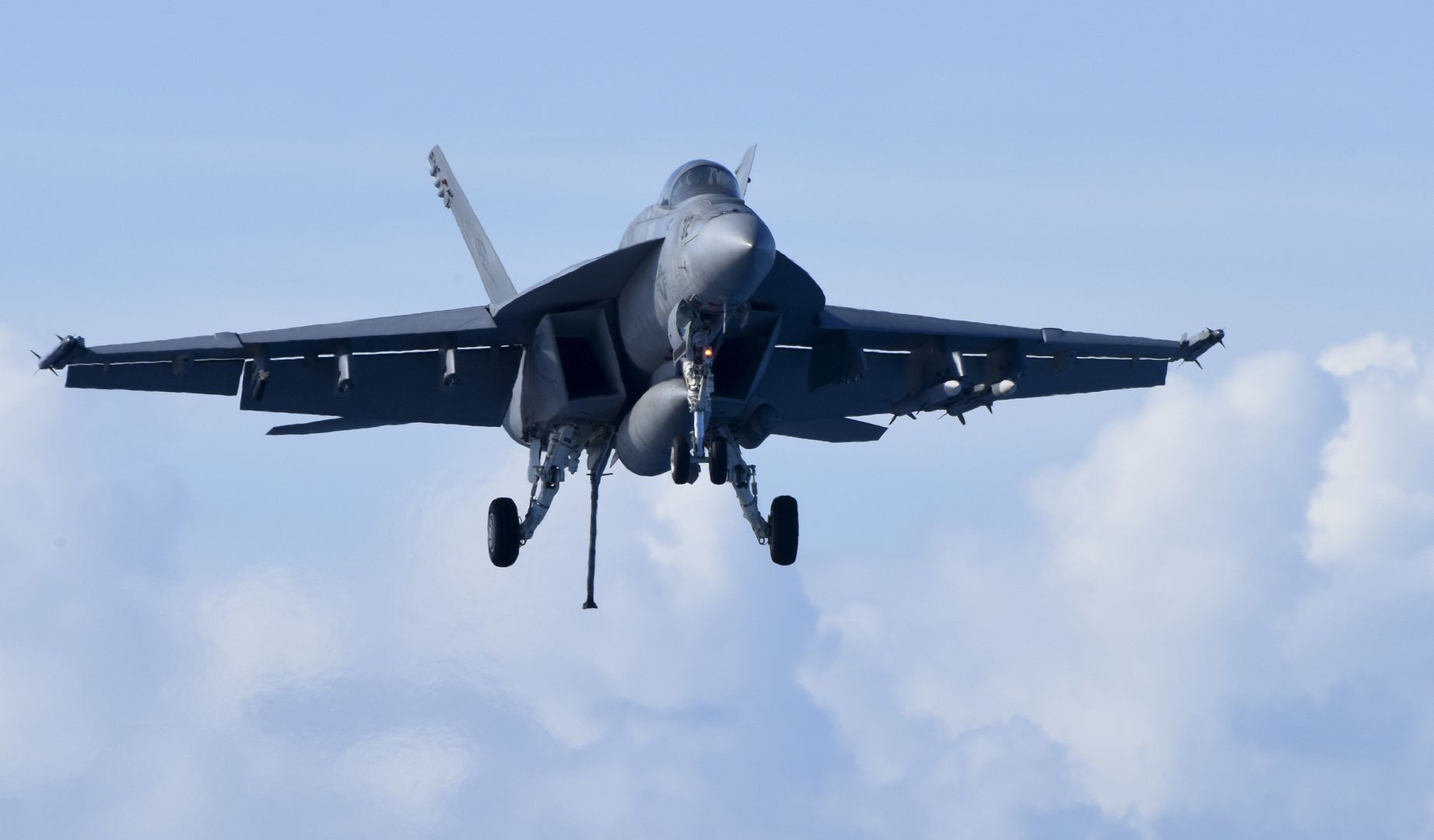
An Israeli F-15D Buzz lands after a morning sortie at Uvda Air Force Base, Israel, Nov. 5, during Blue Flag 2017. The U.S. and Israel share a strong and long-lasting relationship in addition to a close military partnership, and exercises like this further strengthen the relationship of our nations and promote regional peace and stability. (U.S. Air Force photo/Senior Airman Abby L. Finkel)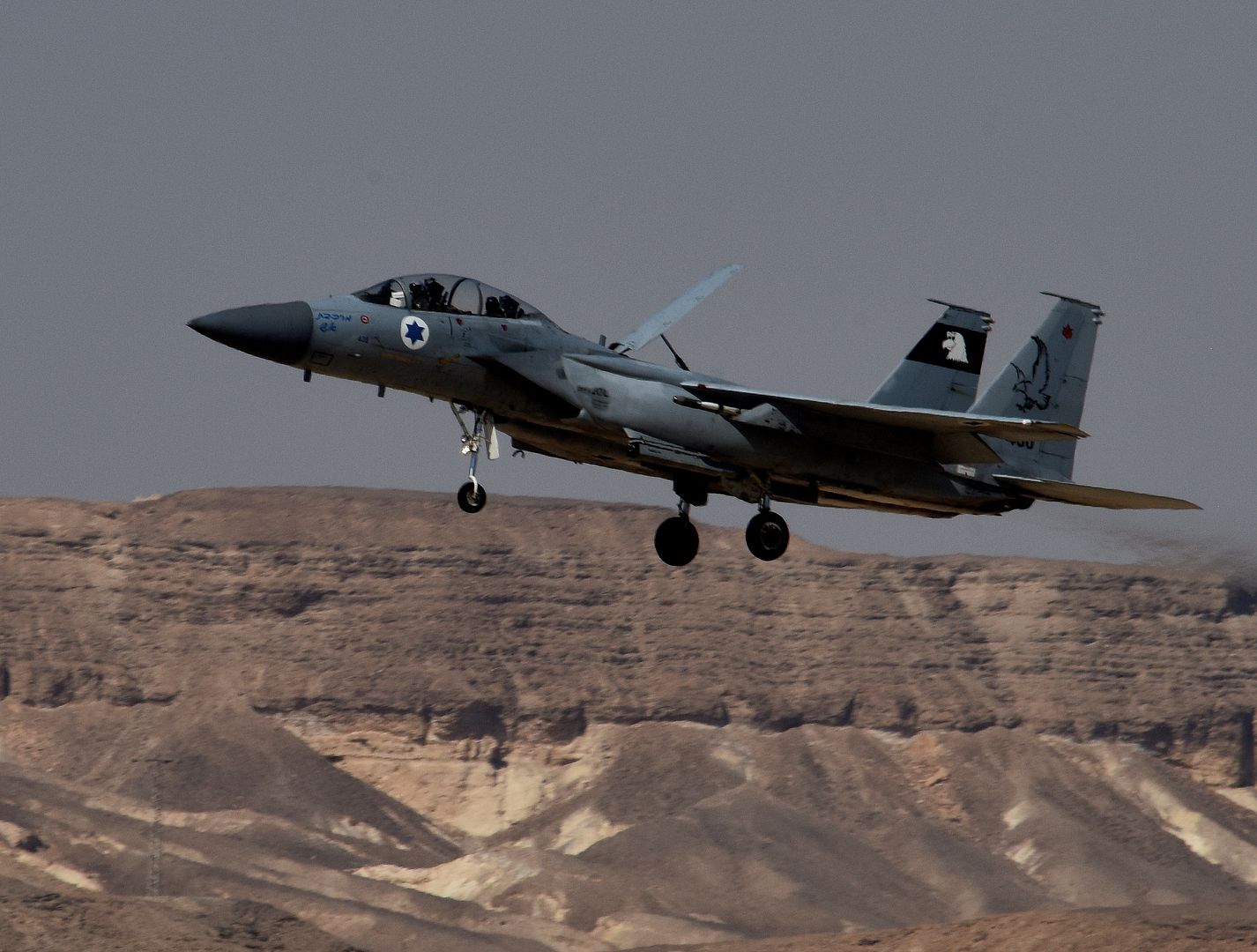
PACIFIC OCEAN (Nov. 15, 2017) An E-2C Hawkeye, assigned to the Sunkings of Carrier Airborne Early Warning Squadron (VAW) 116, prepares to land on the flight deck of the aircraft carrier USS Theodore Roosevelt (CVN 71). Theodore Roosevelt is deployed to the U.S. 7th Fleet area of operations in support of maritime security operations and theater security cooperation efforts. (U.S. Navy photo by Machinist Mate 3rd Class Andrew Langholf/Released)
A U.S. Air Force F-15C Eagle takes off for a joint training mission flying in the vicinity of Okinawa, Japan, Nov. 16, 2017, at Kadena Air Base, Japan. The fighters integrated with B-1B Lancers assigned to the 37th Expeditionary Bomb Squadron, deployed from Ellsworth Air Force Base, South Dakota, to perform joint training with the USS Ronald Reagan (CYN 76) Carrier Strike Group. (U.S. Air Force photo by Senior Airman Quay Drawdy)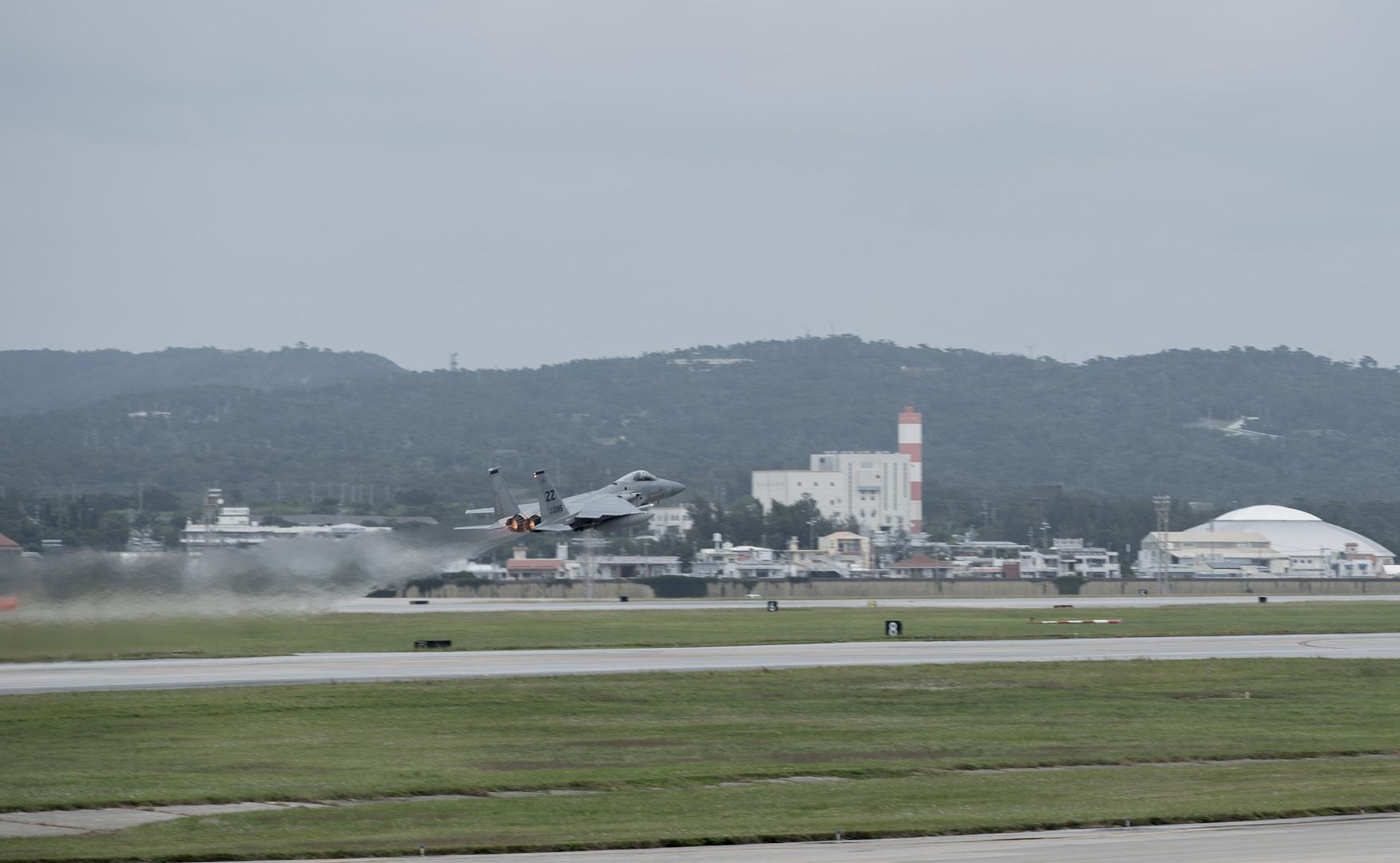
A U.S. Air Force pilot goes through pre-flight inspections on an F-15C Eagle Nov. 16, 2017, at Kadena Air Base, Japan. The fighters integrated with B-1B Lancers assigned to the 37th Expeditionary Bomb Squadron, deployed from Ellsworth Air Force Base, South Dakota, to perform joint training with the USS Ronald Reagan (CYN 76) Carrier Strike Group. (U.S. Air Force photo by Senior Airman Quay Drawdy)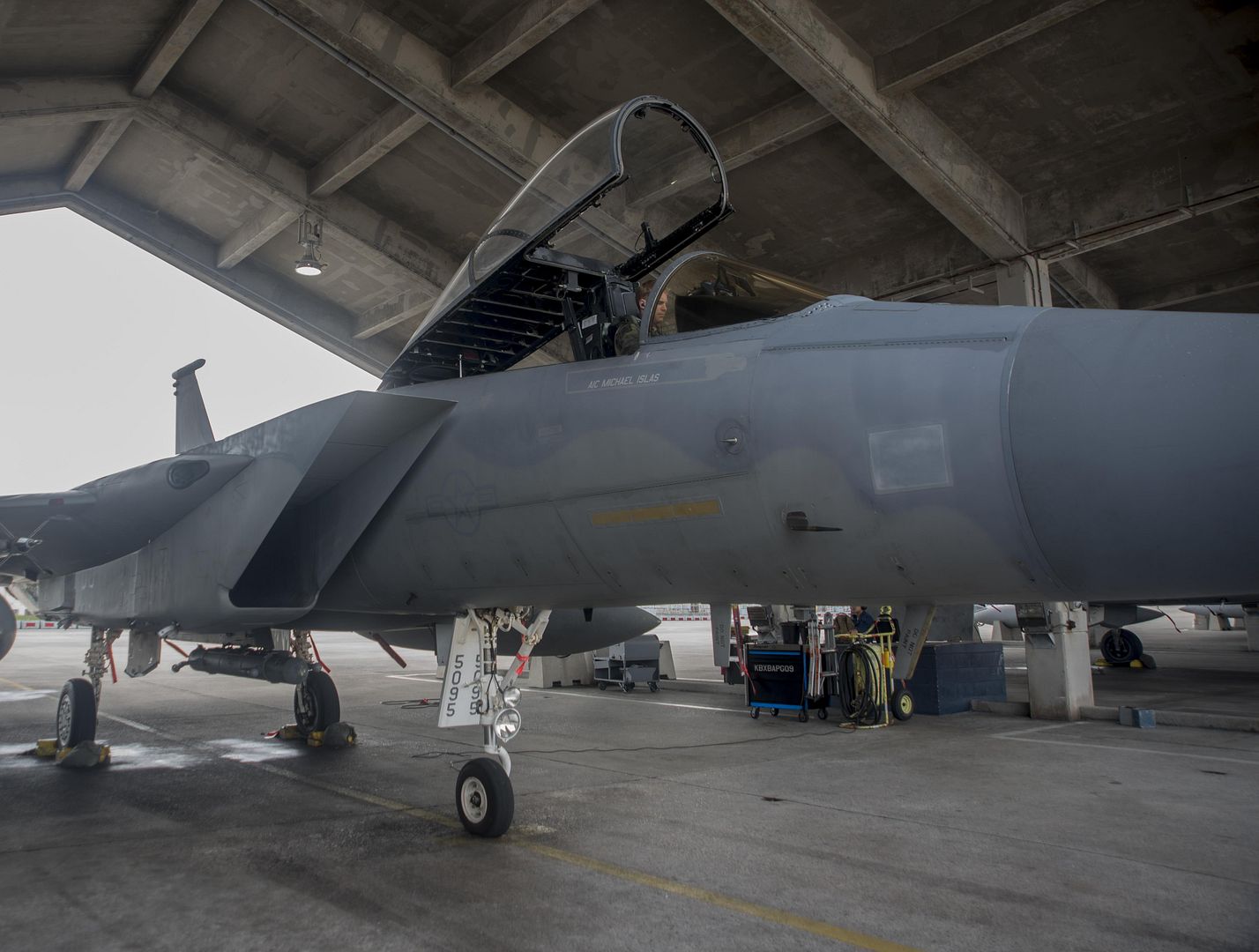
A U .S. Air Force B-l B Lancers assigned to the 37th Expeditionary Bomb Squadron, deployed from Ellsworth Air Force Base, South Dakota, prepares for a mission at Andersen Air Force Base, Guam, Nov. 16, 2017. The U.S. military has maintained a deployed Continuous Bomber Presence in the Pacific since March 2004. CBP capabilities provide the commander, U.S. Pacific Command, a flexible response capability throughout the theater and beyond. (U.S. Air Force photo by Tech. Sgt. Richard P. Ebensberger)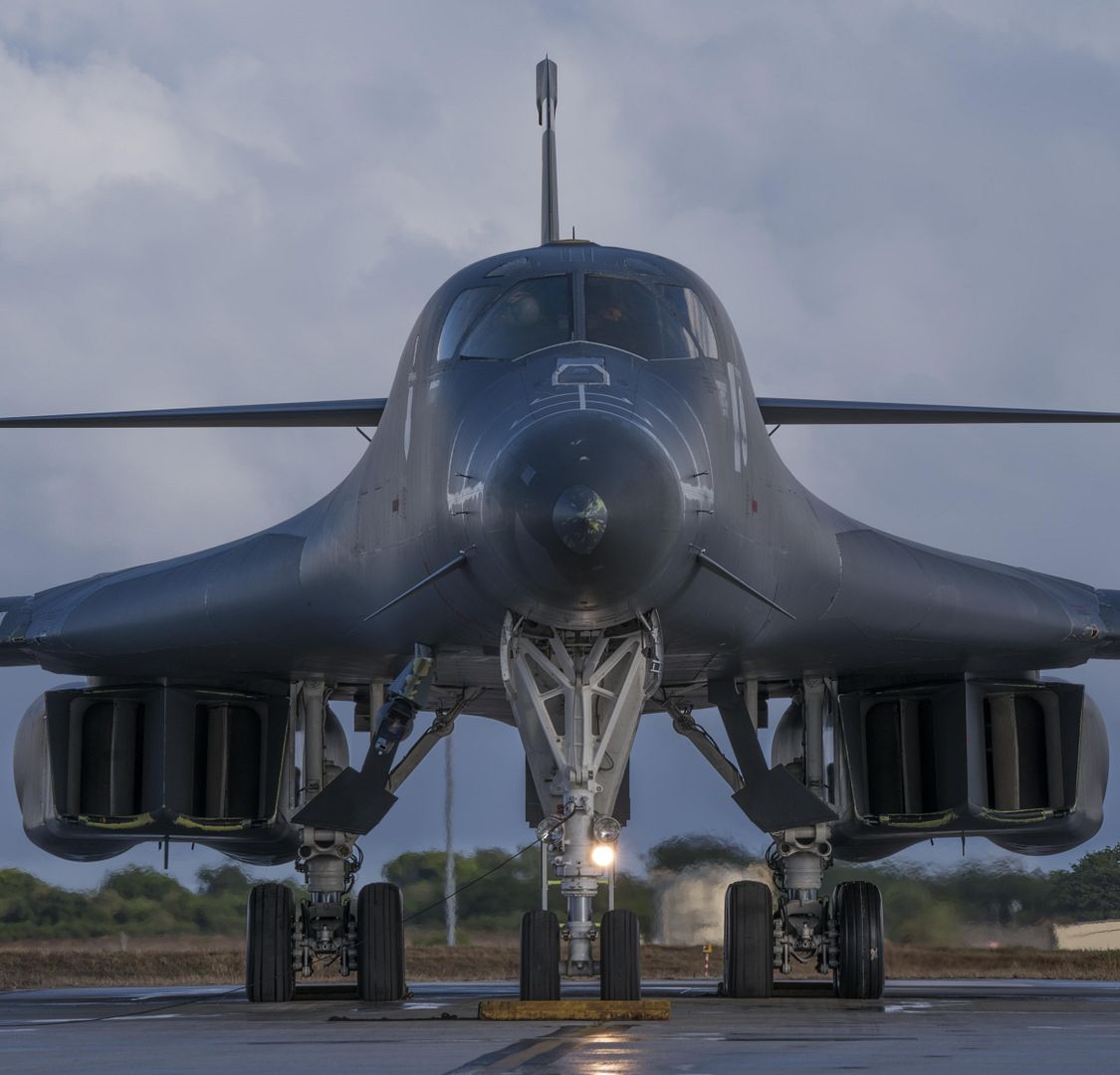
PACIFIC OCEAN (Nov. 14, 2017) An F/A-18F Super Hornet assigned to the "Bounty Hunters" of Strike Fighter Squadron (VFA) 2 launches from the flight deck of the Nimitz-class aircraft carrier USS Carl Vinson (CVN 70). Carl Vinson is participating in a sustainment training exercise in preparation for an upcoming deployment. (U.S. Navy photo by Mass Communication Specialist 3rd Class Jake Cannady/Released)
ST. AUGUSTINE, Fla.? Nov. 13, 2017 ? Northrop Grumman Corporation (NYSE: NOC) successfully completed the first flight of Japan?s E-2D Advanced Hawkeye (AHE) at the company?s Aircraft Integration Center of Excellence in St. Augustine, Florida, Oct. 9.
?The successful first flight of Japan?s E-2D Advanced Hawkeye is a significant milestone in delivering advanced airborne early warning and surveillance capabilities to the country,? said Jane Bishop, vice president, E-2D Advanced Hawkeye programs, Northrop Grumman. ?The augmentation of the Japan Air Self Defense Force?s (JASDF) current Hawkeye fleet with the E-2D AHE further strengthens its ability to meet Japan?s evolving security and intelligence needs.?
The Japan Ministry of Defense selected the E-2D Advanced Hawkeye in 2014 to fulfill the nation's airborne early warning requirements. Northrop Grumman began production in 2016 on two aircraft now in the final production phase.
As the largest Hawkeye operator outside of the U.S. Navy, JASDF also has 13 E-2C aircraft operating since 1983.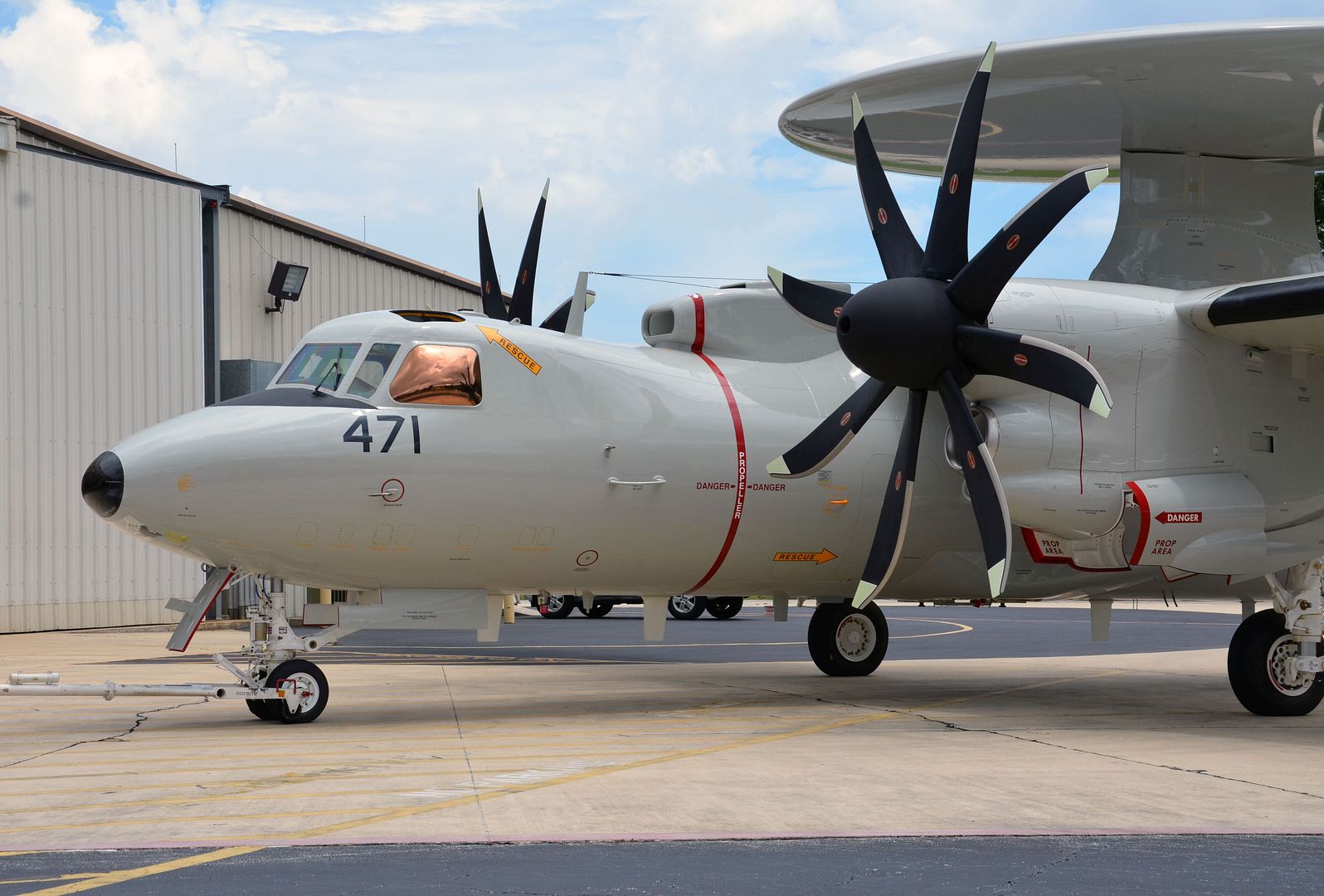
DUBAI, United Arab Emirates, Nov. 16, 2017 ? Boeing [NYSE: BA] and Kazakhstan-based SCAT Airlines announced an order for six 737 MAX 8s on the final day of the 2017 Dubai Airshow.
The agreement, valued at $674 million at current list prices, also includes purchase rights for five additional 737 MAX 8s.
?The 737 MAX 8 fits our network strategy as we expand to include destinations in Europe, Russia and the Far East,? said Vladimir Denssov, President, SCAT Airlines. ?The reliability and low operating costs of the airplane as well as the passenger experience were the main factors in selecting the 737 MAX.?
SCAT Airlines currently operates a fleet of 737s, 757s and 767s.
?We value our partnership with SCAT Airlines and their ongoing confidence in Boeing products,? said Marty Bentrott, vice president of Sales, Middle East, Turkey, Russia Central Asia and Africa, Boeing Commercial Airplanes. ?We look forward to supporting their expansion plans and continuing to play an integral role in their long-term success.?
The 737 MAX is the fastest selling airplane in Boeing history. The MAX family incorporates the latest technology CFM International LEAP-1B engines, Advanced Technology winglets and other improvements to deliver the highest efficiency, reliability and passenger comfort in the single-aisle market.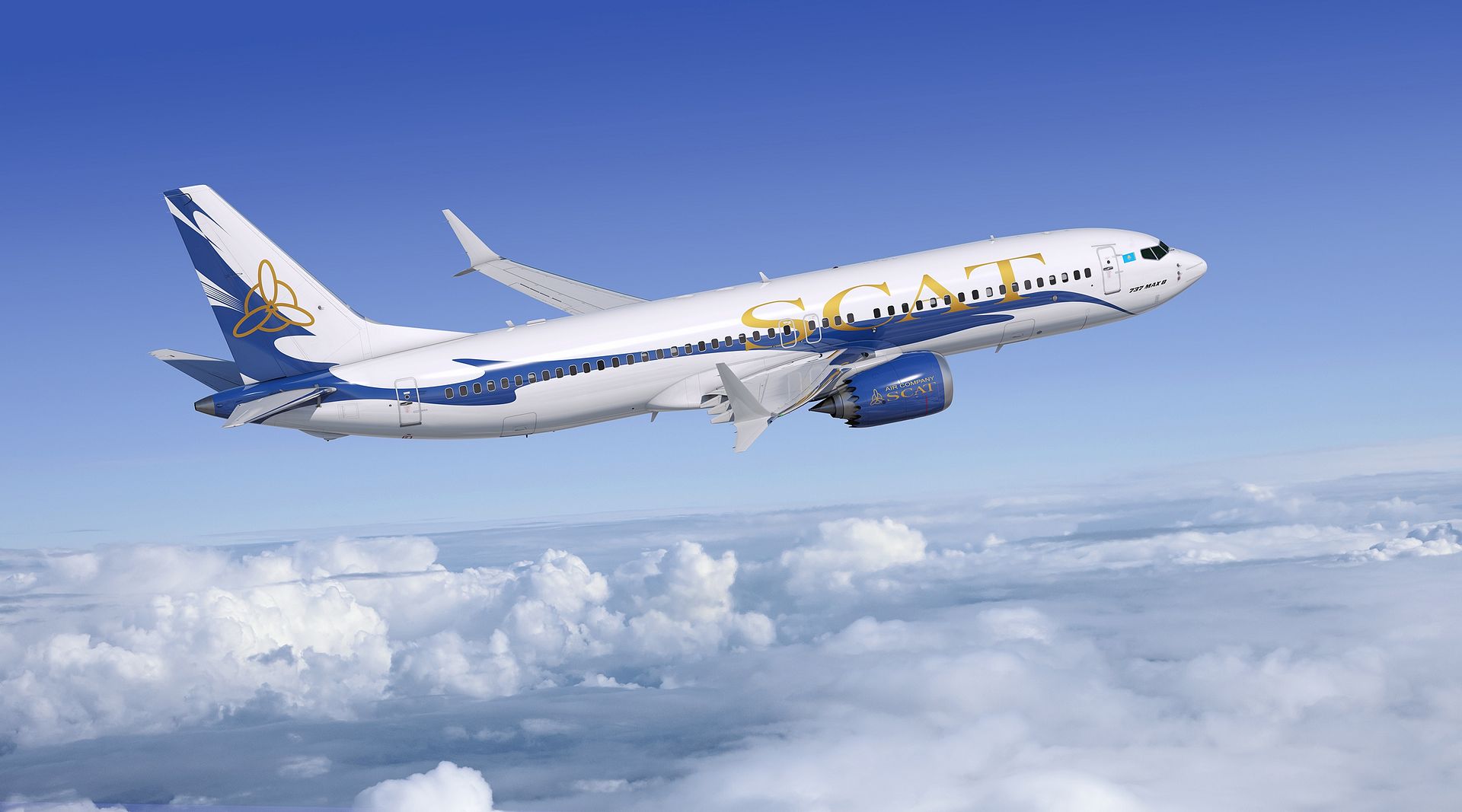
First airline in Africa to purchase the latest fuel-efficient widebody aircraft
Air S?n?gal, the national carrier of Senegal has signed a Memorandum of Understanding (MoU) for two A330neo aircraft, which is the new re-engined version of the best-selling A330 widebody airliner. The A330neo will benefit the airline?s growth and business expansion in the future. The agreement makes Air S?n?gal the first airline in Africa to select the A330neo.
The agreement was announced during a signing ceremony at the Dubai Airshow in the presence of Maimouna Ndoye Seck, Minister of Air transport and Development of Airport Infrastructure, Senegal. Air Senegal will launch operations in 2018, the airline plans to use the A330neo to develop its medium and long-haul network with the aircraft offering cutting-edge technology along with more efficient operations.
Philippe Bohn, CEO Air S?n?gal said ?Aviation is a catalyst for economic development and this purchase demonstrates Senegal?s ambitions for economic growth in line with the country?s strategy to accelerate progress towards emergence (Plan Emerging Senegal). The A330neo has proven itself to be the right aircraft, combining low operating costs, long range flying capability and high levels of comfort. We are looking forward to launch operations and offer our customers best-in-class service?
??We are very pleased to welcome Air S?n?gal among our A330neo customers. The A330neo offers the latest in fuel saving technologies combined with best-in-class comfort, reliability and operational efficiency. The A330 is the ideal choice for Air S?n?gal to build its network and become West Africa?s fastest growing airline,?? said John Leahy, Chief Operating Officer Customers, Airbus Commercial Aircraft.
Launched in July 2014, the latest generation of Airbus? widebody family, the A330neo builds on the A330?s proven economics, versatility and reliability while reducing fuel consumption by 25 per cent per seat. Powered by the latest-generation Rolls-Royce Trent 7000 engines, offering new ?Airspace? cabin amenities, and feature a new larger span wing with Sharklet wingtip devices.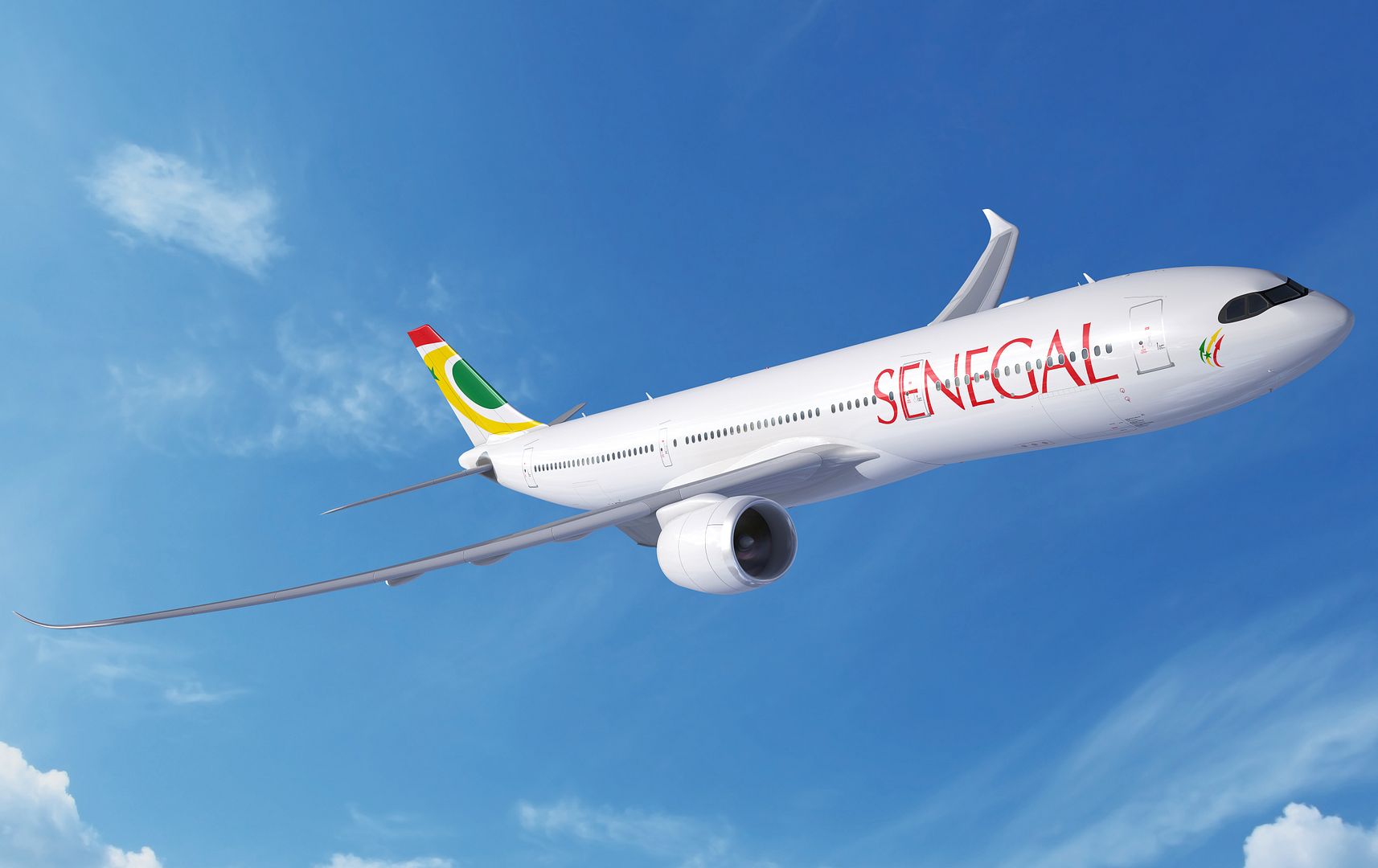
Post a reply
- Go to Previous topic
- Go to Next topic
- Go to Welcome
- Go to Introduce Yourself
- Go to General Discussion
- Go to Screenshots, Images and Videos
- Go to Off topic
- Go to Works in Progress
- Go to Skinning Tips / Tutorials
- Go to Skin Requests
- Go to IJAAF Library
- Go to Luftwaffe Library
- Go to RAF Library
- Go to USAAF / USN Library
- Go to Misc Library
- Go to The Ops Room
- Go to Made in Germany
- Go to Campaigns and Missions
- Go to Works in Progress
- Go to Juri's Air-Raid Shelter
- Go to Campaigns and Missions
- Go to Works in Progress
- Go to Skinpacks
- Go to External Projects Discussion
- Go to Books & Resources
